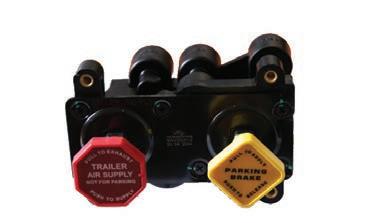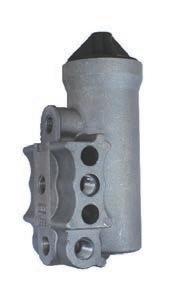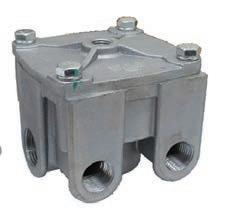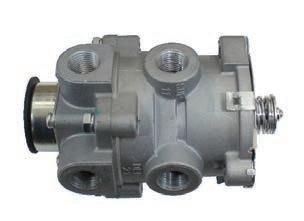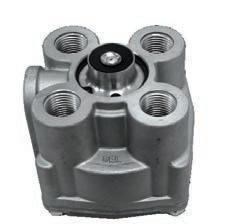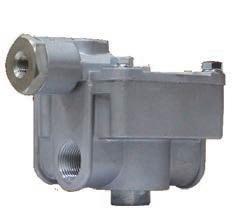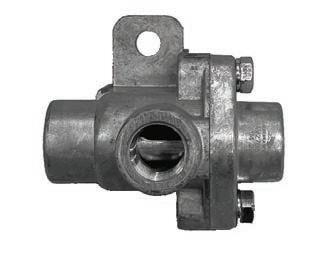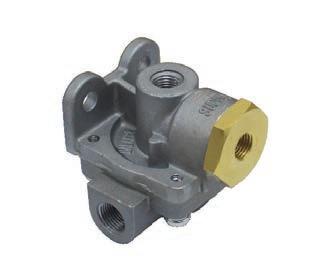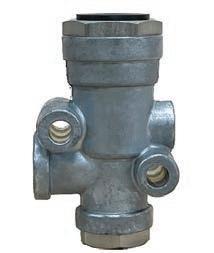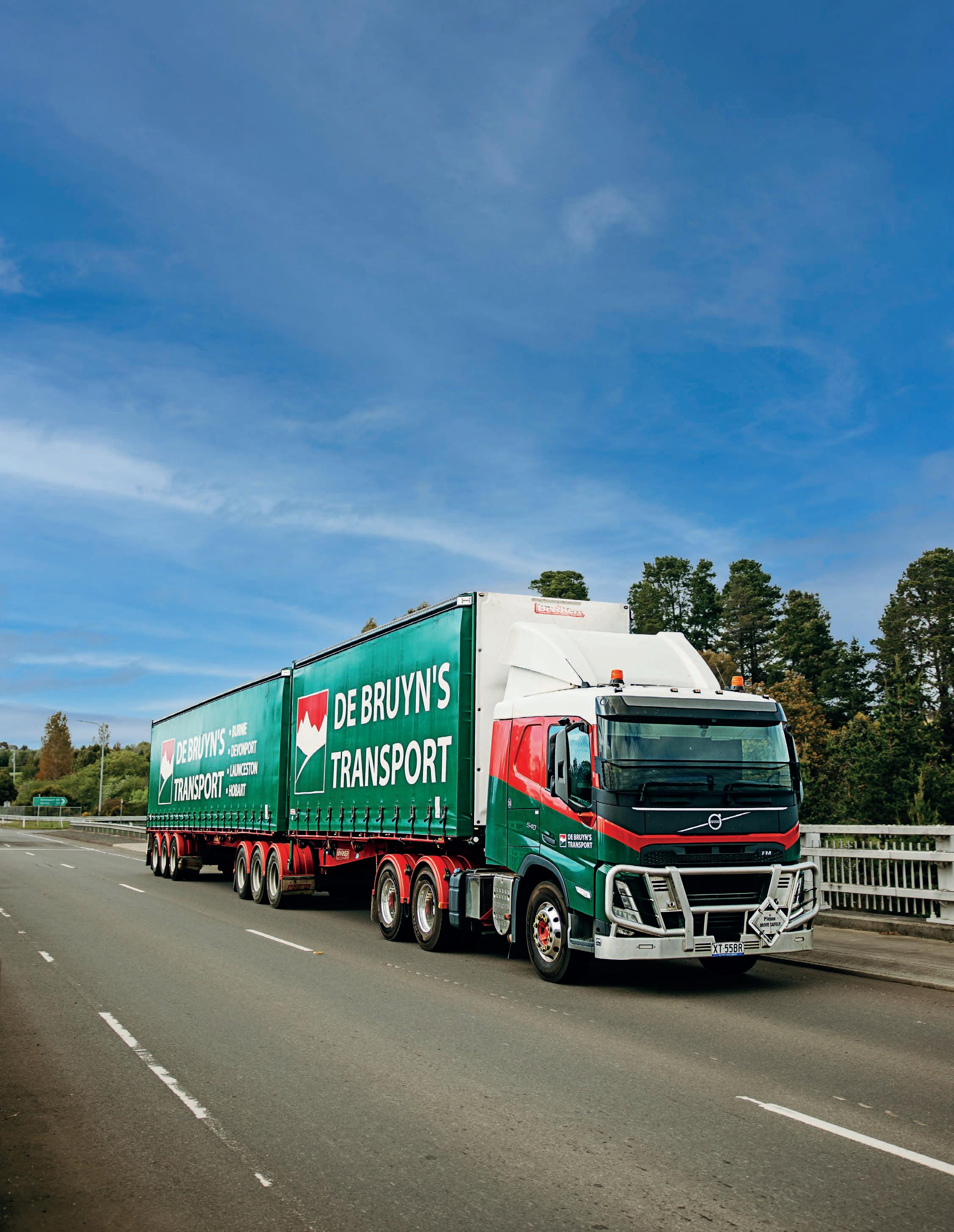



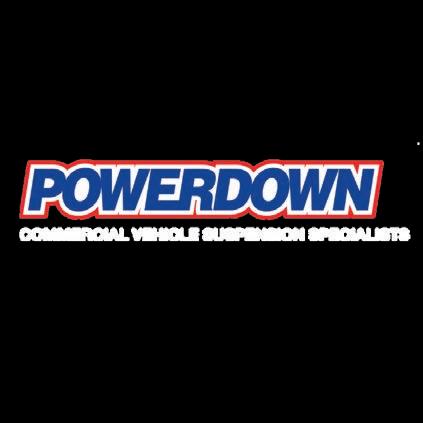


CONTACT US
Address:
Phone:
Email:
Web:
Subscriptions:
Classifieds:
EDITOR James Graham: 0478 546 462
james.graham@primecreative.com.au
SENIOR
danielle.gullaci@primecreative.com.au
DESIGN








Address:
Phone:
Email:
Web:
Subscriptions:
Classifieds:
EDITOR James Graham: 0478 546 462
james.graham@primecreative.com.au
SENIOR
danielle.gullaci@primecreative.com.au
DESIGN
SYDNEY-BASED DJK Transport has called time on operations after 57 years in business.
According to an ASIC notice, DJK Transport, A K G Trucking and Round Em Up Transport all went into voluntary liquidation on Friday, August 8, after a restructuring practitioner was appointed in June.
A ll companies had the same director and shareholder, David Kean, and were registered to the same principal place of business in Austral in Sydney’s west.
Big Rigs has attempted to contact Kean for comment.
According to the DJK Transport website, the business has
Treena Heit: 0403 626
CLIENT SUCCESS
Katharine Causer: 0423 055 787
katharine.causer@primecreative.com.au
CONTRIBUTORS
*12 month average, October 2024

been a “locally-owned and trusted transport service since 1968” and still had its original owner.
DJK Transport’s transport services stretched to Melbourne, Brisbane and Adelaide and offered a number of shipping options, including trailers, tautliners and flat top
trucks with freight containers.
“We’ve done a lot of freight work for Australian mines, as well as distribution centres for chain supermarkets and department stores. While we don’t ship any hazardous materials or refrigerated goods, you can always guarantee that transported goods will arrive
in perfect condition,” the website added.
“We’re the transport team to call for freight and distribution throughout the country!”
Kean is also the sole director and shareholder of a mechanic business, DJK Fleet Services, which still appears to be operating from the same property.
Road Freight NSW CEO Simon O’Hara wasn’t familiar with DJK but said there are number of companies that are struggling in the road freight industry at present.
“You can see it particularly in the rates that are on offer at the moment for Sydney-Mel-
bourne, Brisbane return,” O’Hara.
“You can see there is pressure and that some of the rates are back at 2000 levels.”
O’Hara said he’d seen one rate for a Sydney-Brisbane return that was $600-$800 below the breakeven mark.
“Assuming that you pay tax, superannuation, workers’ comp, you get new trucks every three to five years, you pay a ll the levies that are in place, the sub-contracting model is in strife,” O’Hara said. O’Hara said the subject will be front and centre at the Road Freight NSW conference at Cockle Bay Wharf in Sydney on September 19.
A Melbourne truck driver, 41, must pay more than $80,000 after pleading guilty to a single charge of fraudulently obtaining payments from employers.
He was sentenced in the Werribee Magistrates’ Court on Thursday, July 31 and also fined $5000, without conviction, in addition to a restitution order to repay $75,544.
The court heard that the truck driver submitted an injury claim for mental stress, anxiety and depression through his former employer, and began receiving weekly compensation payments in June 2022.
An investigation later revealed that the truck driver had failed to disclose he had commenced employment with another company in April 2022.
The court heard he continued driving for multiple companies while receiving weekly compensation until May 2023, when surveillance determined he was self-employed and the payments were terminated on grounds of fraud.
Five employers subsequently provided evidence to WorkSafe investigators that they had engaged the driver for work throughout the pe-
riod he was receiving com pensation payments, which totalled $75,544.
Despite his ongoing em ployment, the man submit ted medical certificates that declared he was unable to work and had not engaged in any employment.
Return to Work Victoria Executive Director Jason Lardelli said workers who exploited the workers com pensation system could be li able for criminal convictions, f ines or imprisonment.
“It’s always disappointing when people choose to abuse the system that is in place to help support injured work- ments is fraudulent and a who genuinely depend on it.”

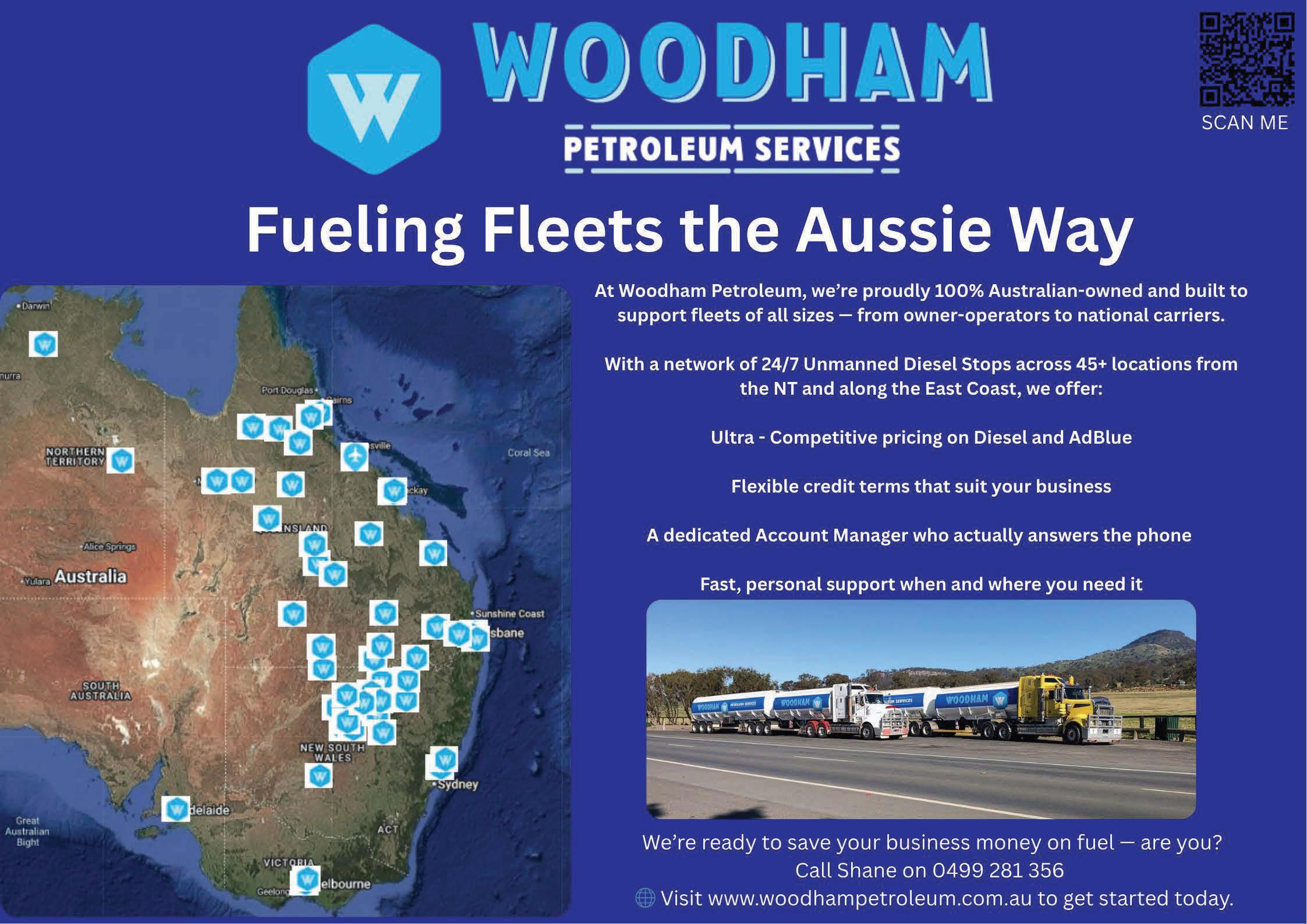
BY JAMES GRAHAM
RIVERINA-BASED dangerous goods (DG) tanker truckie
Kerryn Woods fears for driver and public safety unless the long-running parking issues at Port Botany are finally resolved.
Woods, a board member of the National Road Freighters Association (NRFA), said Transport for NSW had identified the Sydney port’s Truck Marshalling Area as a place for long-distance DG drivers to park and rest, if required.
But he said a mysterious clause in the development application (DA) excludes DG drivers.
Woods said that despite an unofficial endorsement he received from the NSW EPA for DG drivers to use the facility, their fate is tangled again in a complex web of red tape pending a new and costly DA reapplication.
Meanwhile, he said drivers are forced to either risk parking on site and being targetted by port security or take their chances on the nearby streets which can result in hefty fines from local councils.
Earlier this month Woods visited another terminal at the port to find a sternly worded warning notice to truckies
from “the Port Botany team” stuck to the office window.
“It has been observed that several vehicles associated with various carriers and contractors have been parking along the shoulder of Friendship Road, despite clear signage indicating this is a No Parking area,” said the warning.
“This practice poses a significant safety risk to all road users and has caused a near miss in the past.”
The notice added that a recent CCTV review by NSW Ports security had recorded 194 “illegal” parking incidents between June 4 and July 4, 2025.
“This volume of non-compliance is unacceptable, and we must act decisively to ensure safety for all.
“Non-compliance may result in subsequent actions.”
Woods said they’re toothless threats because security can’t issue fines or stop a truck from entering the port.
But after he copped a recent $140 council fine for parking in nearby Military Road during a seven-hour break, he’s decided to go public, penning an open letter about the safety issues that he hopes will get picked up by mainstream media.
“What would the general
public think if they knew that potentially heavy vehicles loaded to the gunnels with high consequence dangerous goods with possibly very tired drivers were mixing it with them in the traffic or passing through their suburbs just trying to find somewhere safe to rest and abide by the laws designed to protect both them and the general public,” Woods writes.
“Can you imagine Ma and Pa Kettle and the general public getting wind of that?” he later told Big Rigs
“It’ll scare the living shit out of them. Every time they see a tanker, they’ll turn off.”
Woods said the potential danger is only exacerbated by the fact DG vehicles are also not allowed to travel through tunnels, the quickest exit routes from the port.
“So, we’ve got to go through the thriving mega metropolis, hub of the universe Bexley, which is a commercial area with heavy traffic and metropolitan roads – and we’re tired because we can’t find anywhere to park up.”
A frustrated Woods said parking for long-distance DG operators has been an issue at the port for the last 3.5 years since no stopping and no standing signs were erected as a result of queuing issues in and
out of the fuel terminals.
“No one could move, it was absolute checkmate and the terminals complained to the ports, saying ‘Hey, if we’d had an emergency at one of the ter minals, the emergency services couldn’t get in because the place was gridlocked’.”
But Woods is adamant the parking woes for drivers now shouldn’t be this hard to find an interim fix while the DA is sues are being sorted out.

“Swallow your pride a little bit and let us park either in the port, or give us somewhere to park, that’s all we want.
“Mark a couple of DG parking only squares in the port where we can park, where we’re not hindering anybody, and if you’re in the square, you’re safe.
“We’ve got drivers now with 36-metre A-doubles, where do they go now? They can’t go wandering around the back streets, so they just go ‘stuff it’, I’m just going to park in the port and put up with the consequences.”
Woods said he won’t park himself inside the port because he doesn’t like getting woken up by a security guard banging on his door while he’s trying to sleep.
“But I’ve said to them, what’s going to happen one day, one
night – they’re going to knock on the wrong door and some driver who doesn’t really want to be there but he’s got to be because he’s delayed, or over his book, he’s going to come barreling out that door with a lump of four by two.”
Woods said the proposed $80 million Eastern Creek mega site announced earlier this year is too far away in the heavy Sydney traffic to be a solution.
That site is also still stuck in the planning stages, according to a TfNSW spokesperson, with no word yet on a likely opening date.
“Once design and environmental approvals are complete, the project will move into con-
struction,” the spokesperson
Road Freight NSW CEO Simon O’Hara said DG parking at Port Botany needs to be a “high consideration” for terminals to ensure that truckies can adhere to rest requirements and get goods to here they need to go.
“It seems perverse that truckies who are doing the right thing by parking up and resting, then get a fine for their efforts,” O’Hara said.
“I strongly encourage TfNSW and NSW Ports to work on a solution for hard working truckies that restores some dignity and respect.”
TfNSW said it is aware of the issue relating to DG parking at Port Botany.
“Transport for NSW is committed to supporting the safe, sustainable and productive movement of goods and is working with relevant stakeholders to support a solution to the issue,” a spokesperson said.
“The National Transport Commission is also currently reviewing the Australian Code for the Transport of Dangerous Goods by Road & Rail, which sets out the requirements for transporting dangerous good by road or rail.”
ANOTHER four projects have got the green light from the Heavy Vehicle Rest Area (HVRA) initiative – but Senator Glenn Sterle wants to fund a lot more with truckies’ help.
The latest sites (see list below) approved by Transport Minister Catherine King to the tune of $3.6 million brings the total spend up to around $40 million spread across 25 locations around Australia.
But the federal government still has around $100 million left to invest over the next seven years. Up to $5 million in program
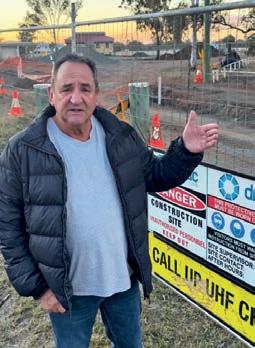
funding is available per proj ect, with co-contributions to be provided by state or territory governments, private entities or other eligible Australian
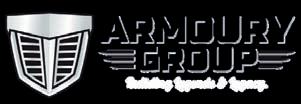
Government programs.
Sterle, who is Chair of the Heavy Vehicle Rest Area Committee in charge of sifting through applications, has started to visit some of the approved locations, including a new $1.9 million purpose-built rest area in Roma expected to open soon.
More than three years in, he admits it’s been a frustratingly slow process so far.
“If it was up to us, all the money would have been out the door and allocated for the next 10 years,” Sterle said.
“But because we’re at the
behest of the states and the shires, it’s been frustrating, but we’re now seeing shovels being turned. Thank goodness.”
Sterle said a further seven locations had been approved by the committee at its most recent meeting, but are still awaiting ministerial sign-off.
Meanwhile, Sterle implored truckies to jump on to the department website to have their say, or scan the QR code in this story.
The survey takes less than five minutes to complete and provides valuable insights to government for future proj-
Armoury taillight bar available in stainless and painted finish.
Advantages of this new and improved design: Uses factory bracketry allowing easy fitment Available in multiple light combinations Made in-house for quick dispatch and premium quality
Drop sections also available.
ects to fund through the H VRA initiative.
“They [truckies] have the ability to make some recommendations – we’ve still got money to spend,” Sterle said.
The latest four funded rest area projects are:
• New parking, toilet blocks and picnic shelters at the Kyeamba Rest Area between Yass and Albury.
• A new female toilet block at the Nhill Trailer Exchange in western Victoria.
• Construction of two new rest areas at Wiawera and Black Springs in South
Australia, with each featuring space for four vehicles, sheltered tables and seating.

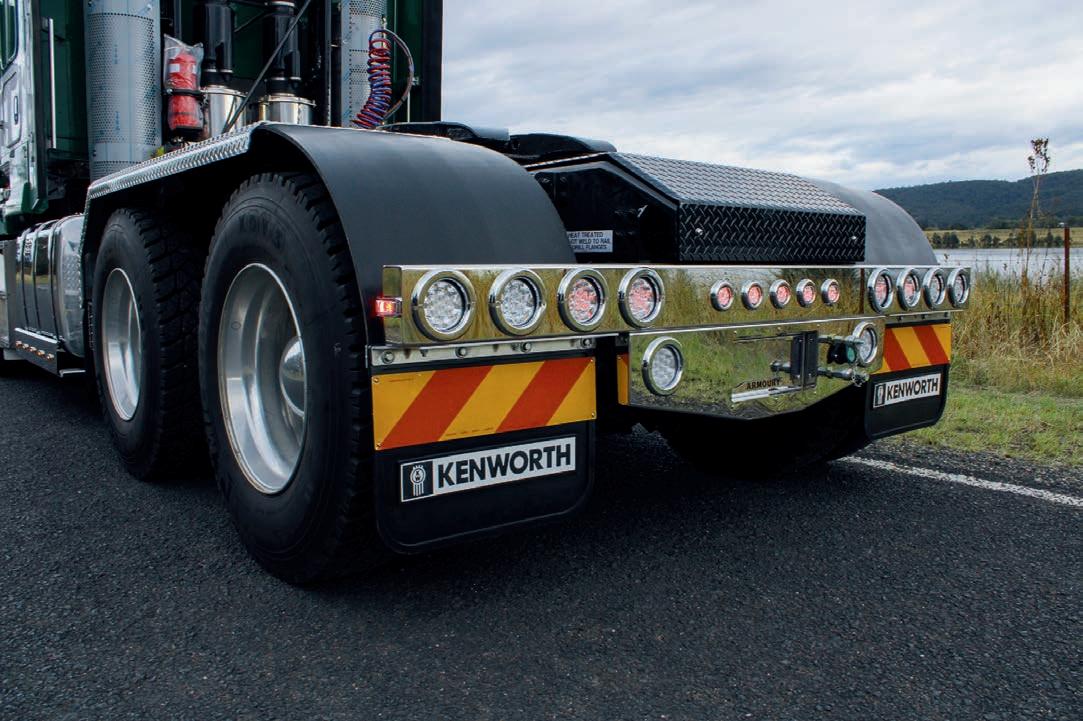
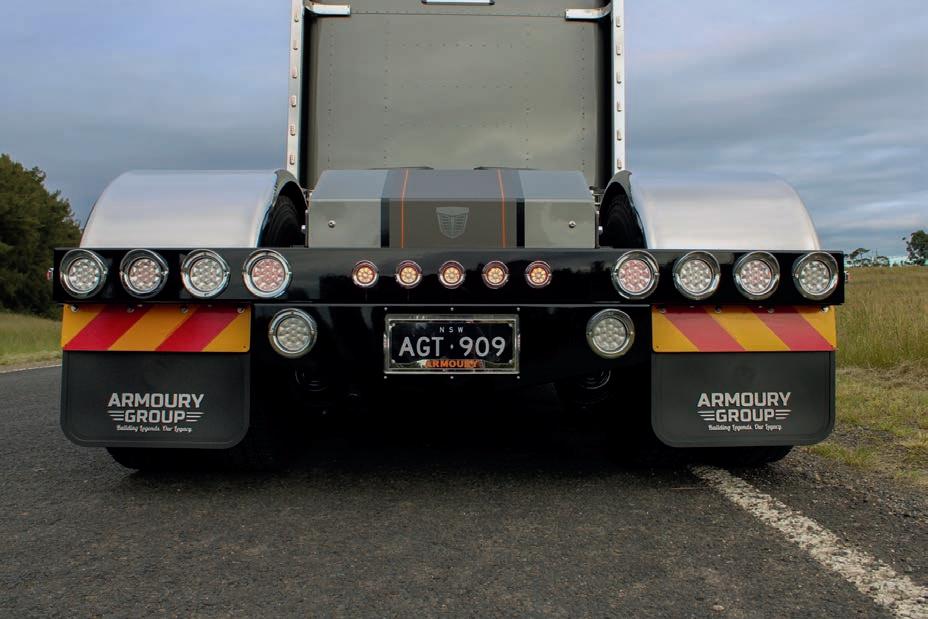
THERE’S light at the end of the tunnel – quite literally, with tunnelling now complete on the 14km Coffs Harbour bypass project, as it remains on track to open to traffic by late 2026.
The Australian Government has committed $1.76 billion and the NSW Government $440 million to this $2.2 billion project.
Blasting crews have completed the 160m Roberts Hill tunnel, the third and final tunnel on the project. It joins the 320m Shephards Lane tunnel and the 410m Gatelys Road tunnel.
The massive excavation effort saw half a million tonnes of rock removed using 280 tonnes of explosives across
570 controlled blasts.
The Roberts Hill tunnel portal has been designed to complement the natural environment with an exposed architectural rock treatment and landscaping. It will include three bridges over North Boambee Road, and Newports Creek and its tributary, and a five-metre-high noise wall south of the Roberts Hill southern portal.
Federal Infrastructure Minister Catherine King said, “This is a massive milestone reached in the Coffs Harbour Bypass, this project will transform this local area and help remove thousands of cars and heavy vehicles from CBD streets.
“This project has been a

long-time coming, but it is making good progress and will transform Coffs Harbour once complete.”
NSW Minister for the North Coast Janelle Saffin added, “The breakthrough at Roberts Hill is yet another magnificent milestone for the hundreds of workers delivering the project, and for the people of Coffs Harbour who are looking forward to seeing it complete.”
“As a long-time resident of the NSW North Coast region, I know what a difference this will make to those who call it home.”
With all three tunnels now broken through, work will shift to preparing them for traffic. This includes installing drainage systems and laying road pavement.
Each tunnel will also be fitted with sophisticated mechanical, electrical, fire, safety and electronic signage.
The tunnels will have two traffic lanes and a bicycle lane.
Waterproofing will also cover the entire tunnel tube ceiling and sides with this later installed to increase the lifespan of the tunnel and stop any water making its way onto the road, providing a safer journey for road users travelling through the tunnels.
W hile waterproofing has started in Gatelys Road Tunnel, it will also be carried out
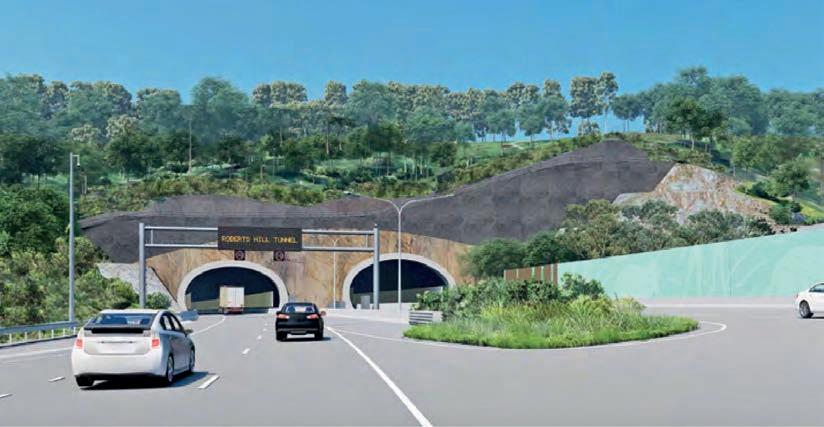
in the two other tunnels and is expected to be completed before the end of 2025.
Once this layer is in place, the last covering of shotcrete is sprayed, with paving, drainage and the mechanical and electrical fit out to follow.
As work continues to complete the three tunnels, new sections of road are being progressively opened as part of the project.
“There are already cars driving on new parts of road around the city and there are more sections opening every month,” said NSW Roads Minister Jenny Aitchison.
Among the most recent was the partial opening of the new Coramba Road Interchange on August 13. Including two new round-
abouts, it will provide local traffic access so the Coffs Harbour bypass project can keep building the new road south of the interchange.
While the new roundabouts are operational, the on and off ramps are still being built, and due to open at a later date.
“The Coffs Harbour community will be thrilled to see another leap forward for this project, which has only a year and a half before the bypass opens to traffic,” said Transport for NSW Executive Director Partnerships and Integration North, Greg Collins.
“This will provide local traffic access so the Coffs Harbour bypass project can keep building the new road south of the interchange, and the on and off-ramps, with the inter-
change expected to fully open to traffic in late 2026, weather permitting.”
Local motorists travelling between Coffs Harbour and Karangi, Coramba and beyond will be able to travel on the first new section of road for the project.
However as Aitchison added, “We remind motorists to drive carefully around roadworks and be patient as the team works hard to deliver this transformational project for the city, and for everyone driving along the Pacific Highway.”
Once complete, the bypass will allow motorists on the Pacific Highway to skip up to 12 sets of traffic lights, expected to cut up to 12 minutes off travel times.


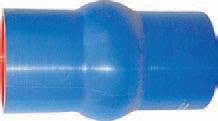

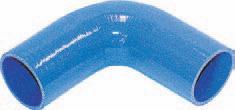
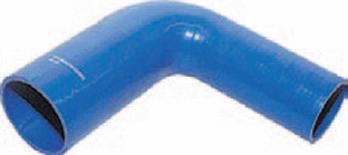


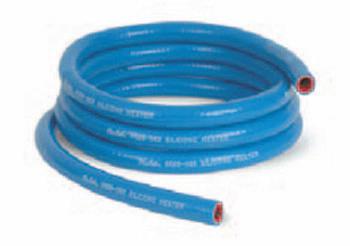

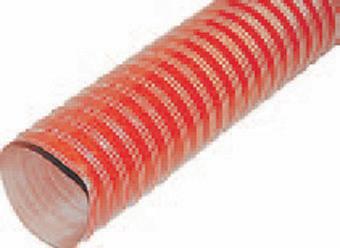


BY JAMES GRAHAM
A compliance review of the Heavy Vehicle Competency Based Assessment (HVCBA) scheme has uncovered “serious breaches”, resulting in four assessors having their accreditation cancelled, confirmed Transport for NSW (TfNSW).
One experienced driver assessor, who did not want to be named but is an expert in the state’s accreditation process, said this could have serious implications for the validity of the heavy vehicle licences that the assessors had signed off on.
TfNSW, however, wouldn’t elaborate on how the accreditation cancellations would impact the drivers assessed.
“This is an active project and we are risk assessing the licence data for the last 12 months related to these assessors,” said a TfNSW spokesperson.
“With around 300 active assessors in NSW and robust processes in place to monitor compliance, this is a very small number. We have confidence in the heavy vehicle licensing system and pathways.”
The spokesperson said that due to the sensitive nature of these matters and commercial-in-confidence considerations, specific details of the breaches and assessment volumes cannot be disclosed.
But they did go on to say the assessors were found to have breached regulatory requirements by failing to ad-
here strictly to assessment guidelines and procedures and maintain accurate and truthful assessment records.
The breaches were identified through Transport’s compliance and audit processes, which include data analysis, stakeholder feedback, and targeted investigations based on risk indicators.
In a statement to Big Rigs, TfNSW said each assessor had varying lengths of service and assessment volumes.
“While individual histories cannot be disclosed, Transport maintains detailed records and monitors performance across the sector.”
Mick Humphries, an HVCBA Assessor in NSW and Director of the Australian Driver Trainers Association, said the removal of the accreditation would only be a last resort with “very strong” evidence and findings of “quite severe” breaches of scheme requirements.
“I’m glad that Transport is out there doing increased auditing – I think it’s a really positive step,” said Humphries who was on his way to audit one of the Queensland assessors that he manages when Big Rigs called.
“I know the vast majority of my associates do a really good job. When you see people that have done the wrong thing and they’re getting busted, it shows you that regulator’s taking the system seriously.

of TfNSW is probably the best we’ve seen for a long time in terms of ensuring that all the schemes they run, are running correctly and well.
“The current directors have a genuine commitment to seeing that happen. But also, the auditing and monitoring team they have now is actually very good.
“I’ve been quite impressed with them, because I bump into them on the road a fair bit, and they’re really doing a good job.”
Humphries, however, concedes that it’s feasible there could be drivers on the road today that shouldn’t be there as a result of the alleged
Regulators in every state have had this happen, and it’s not just with private providers, either.
“It’s happened with their own staff, and they do actually have protocols in place where they go through, and they’ll try and identify the highest risk areas and also hopefully be able to allow people that aren’t in that risk to just maintain what they’re doing.”
Humphries said he retains total confidence in the HVCBA scheme, providing drivers are assessed correctly but is also looking forward to the adoption of new national standards currently being de-
SYDNEY
510 Victoria Street, Wetherill Park NSW 2164 Ph. 02 9756 6199, email: isri@isri.com.au, www.isri.com.au
BRISBANE
In the past it’s always been conceptual but now there is actually assessment documents and timelines that are being set with the state regulators in terms of adoption,” said Humphries, who is assisting with consultation on the project.
In 2017, 678 WA licence holders had their licences suspended in part or in full following an investigation into truck driver licencing by the Corruption and Crime Commission and the Department of Transport.
The activity took place at Mines West Driving School (Mines West), owned by then-approved assessor Previn
Narayanan and contracted by DoT to conduct Practical Driving Assessments (PDAs) for heavy vehicles. New driving assessments were conducted for 370 of the suspended licence holders, and 201 applicants, more than half, failed their reassessment. Queensland followed suit a year later with its own clean-out. After a Department of Transport and Main Roads (TMR) audit of Brisbane-based Aegis Training Services, the state revoked more than 250 multi-combination licences on the grounds that assessments hadn’t met required standards.


3/120 Gardens Drive, Willawong QLD 4110 Ph. 07 3275 2044, email: sales@isribrisbane.com.au, www.isribrisbane.com.au
BRISBANE NORTH
1/259 Cullen Av, Eagle Farm QLD 4009 Ph 1300 11 4774, email: seats@isrinb.com.au, www.isrinb.com.au
MELBOURNE
Unit 1/569 Somerville Rd, Sunshine West VIC, 3020 Ph. 03 9311 5544, email: sales@isrisunshine.com.au, www.isri.com.au
MACKAY
110 – 120 Maggiolo Drive, Paget QLD 4740 Ph. 07 4952 1844, email: admin@isrimky.com.au, www.isriseatsmackay.com.au
PERTH
408 Welshpool Rd, Welshpool WA 6106 Ph. 08 9362 6800, email: info@mmtisri.com.au, www.mmtisri.com.au
DARWIN
Mobile Sales and Service
Ph. 08 8927 0986, email: info@isridarwin.com.au, www.isridarwin.com.au
NEWCASTLE/HUNTER VALLEY
Ph 02 4932 0600,
Unit 2/13 Hinkler Ave, Rutherford NSW 2320 email: sales@hvss.com.au www.isri.com.au
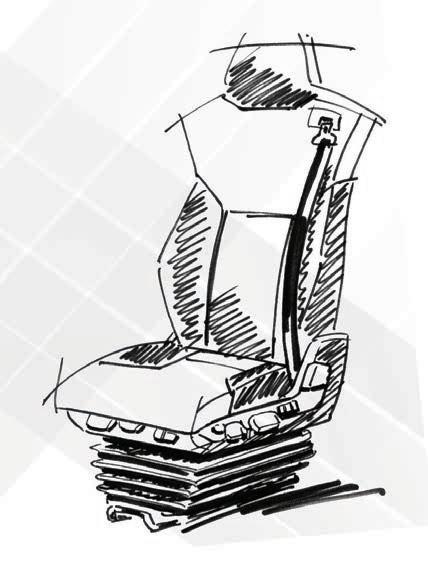
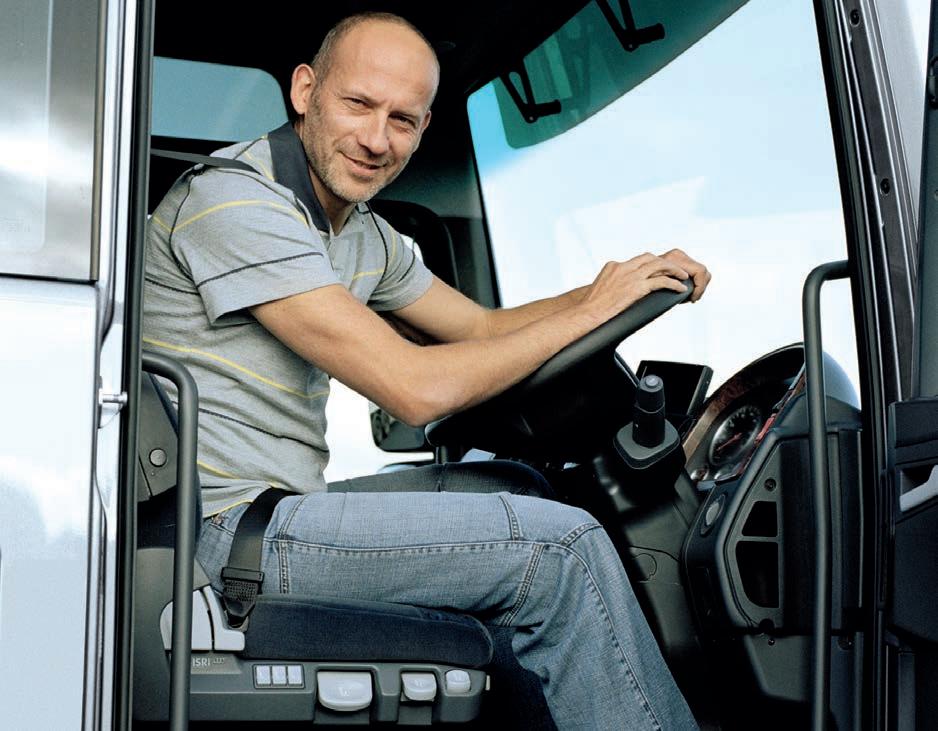




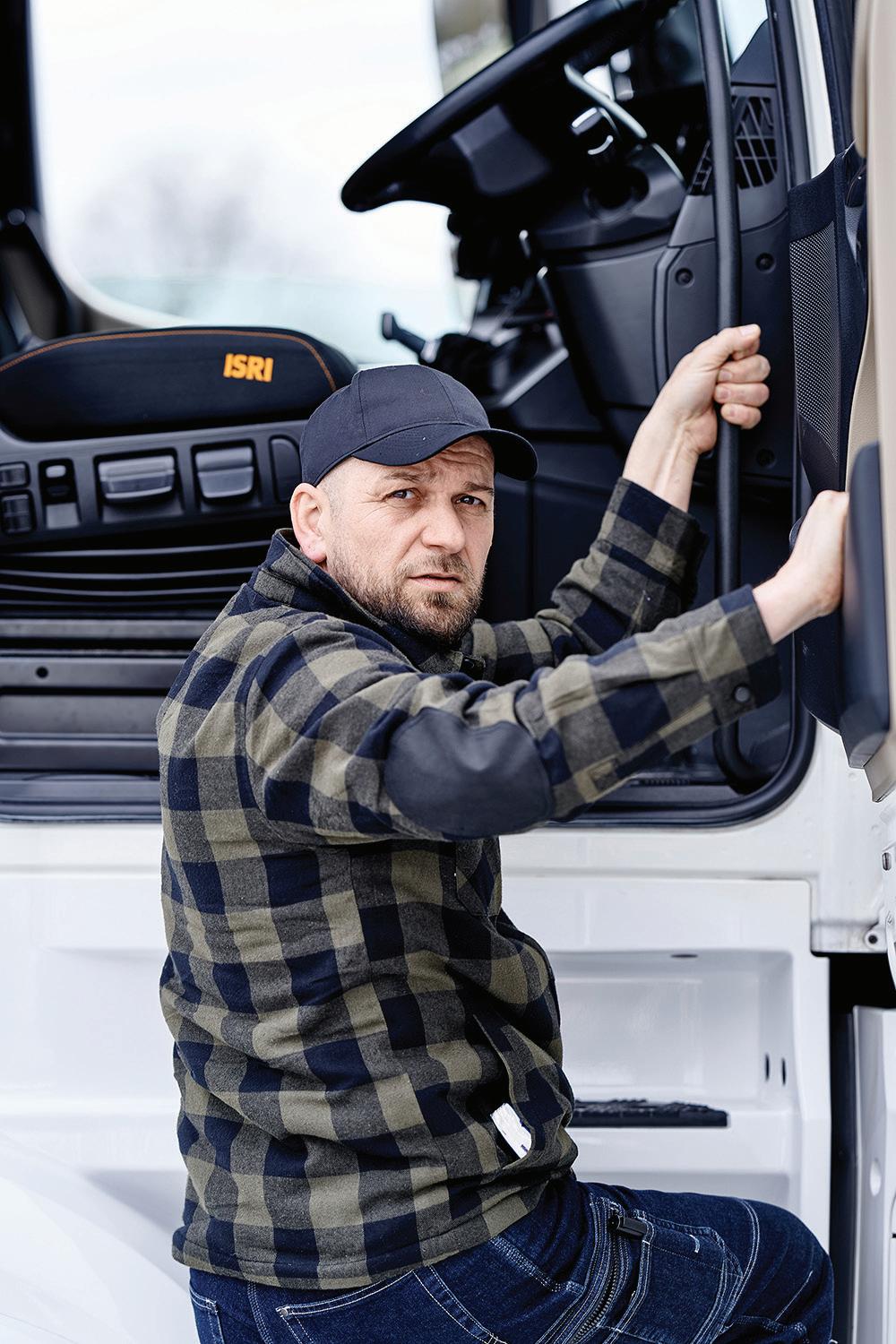


Carriers of the Year
DHL Supply Chain and Carey’s Freight Lines have won the major prizes at Primary Connect’s annual Carrier of the Year Awards.
DHL Supply Chain took home the Large Carrier of the Year honour, while Carey’s Freight Lines has been awarded Small Carrier of the Year. DHL Supply Chain is in their 14th year of store deliveries across South Australia for Primary Connect, a partnership that sees them transport approximately 950 pallets of goods to 169 supermarket and liquor retailers each week.
Carey’s Freight Lines handles grocery distribution to the north-west and New England areas of NSW for Woolworths, with the majority of volume originating from the Wyong Distribution Centre.
Master Code input open
Truckies and operators can now have their say on proposed changes to a revised draft of the Industry Code of Practice, also known as the Master Code.
Key changes include a transition from a role-based structure to an activity-based approach, focusing on risks associated with transport activities rather than specific job titles, and moving beyond the original focus areas like speed and fatigue.
Peter Austin, the National Heavy Vehicle Regulator’s Director of Policy Implementation, said the Master Code is an essential safety tool for everyone in the Chain of Responsibility. To have your say, visit nhvr.gov.au and search ‘Master Code’. The deadline is September 19.
North East Link tunnels
Work on the North East Link tunnels is progressing, with contracts awarded for the next stages of upgrades for the Eastern Freeway.
The Eastern Freeway and North East Link tunnels will be complete in 2028 – expected to take around 15,000 trucks off local roads, and allow drivers to skip 18 traffic lights to save up to 35 minutes in travel time between the east and outer north.
Construction has started on the first section of Eastern Freeway upgrades – between Burke and Tram roads – with works to build the new interchange with North East Link, new busway and new lanes well underway.
Call to follow NZ on RUC Roads Australia (RA) is adding its voice to calls for the implementation of a nationally consistent Road User Charge (RUC) framework by 2028. This follows New Zealand’s announcement that it will replace its fuel tax with electronic road user charges.
Speaking at the Road User Charge Forum in Sydney, RA chief executive Ehssan Veiszadeh said: “We’re not just talking about replacing a tax, we’re talking about rebuilding equity in how we fund the roads Australians rely on every day.”
RA supports a framework that applies to all vehicles not currently paying fuel excise.
A new suite of free online tools has been released in Western Australia to help owner-drivers know their rights, negotiate contracts and run their business successfully.
A key feature is guideline rates of payment and an interactive online ‘cost calculator’ tool to help owner-drivers clarify business costs and ensure they don’t underquote.
Western Australia’s Department of Transport and Major Infrastructure (DTMI) said the online resources are the result of extensive consultation between DTMI and the Road Freight Transport Industry Council, which comprises owner-drivers, hirers, the community and government.
“Owner-drivers play an important role in keeping Western Australia’s road freight transport industry supply chain running,” said Cam Dumesny, a council member and CEO of Western Roads Federation, which represents companies and specialised transport associations using WA roads.
“We estimate there’s around 7000 owner-drivers in WA and competition in the sector can be fierce, leading some owner-drivers to cut their rates to unsustainable levels to secure work.”
Dumesny said that while competition is an integral part of heavy road freight, owner-drivers should be able to negotiate a safe and sustainable rate of payment with their hirer.
“Add to that the added challenges of operating as owner-driver in Western Australia in terms of distances travelled, often on unsealed roads with a diverse range of payloads, often in support of the resources sector but also livestock and grain.
“What we’re providing is the tools to enable owner-drivers –who have invariably invested heavily to establish themselves as road freight operators – to quote on jobs and ensure all their costs and overheads are met, and their business remains viable.”
The online resources include:
• an interactive cost calculator to help owner-drivers get a better understanding of the typical costs of running their business.
• guideline rates of payment for 13 different truck types and configurations – updated annually – allowing owner-drivers to find their ‘perfect fit’ for running their business safely and at a profit.
• tips on negotiating contracts, including using a negotiating agent and negotiating as a group of owner-drivers.
• tips on dealing with disputes with hirers.
Samantha Cox, a Road Freight Transport Industry Council member who runs a trucking business with her husband, said that having contract templates available for owner-drivers to download
WHAT WE’RE PROVIDING IS THE TOOLS TO ENABLE OWNERDRIVERS TO QUOTE ON JOBS AND ENSURE ALL THEIR COSTS AND OVERHEADS ARE MET, AND THEIR BUSINESS REMAINS VIABLE,” CAM DUMESNY, WESTERN ROADS FOUNDATION CEO
was a valuable addition.
“It’s good business practice to use written contracts,” Cox said.
“A written contract ensures clarity and understanding of terms between and owner-driver and hirer.
“It doesn’t need to be complicated – just clear, understood and agreed.”
Fellow Council member and Transport Workers Union State Secretary Tim Dawson said the potential for exploitation of owner-drivers, the most vulnerable and least protected sector in the industry, was a perennial issue.
“There has historically been an inequity in the bargaining positions of owner-drivers and hirers,” Dawson said.
“The sector is often characterised by low-level earnings, high rates of business failure, and working conditions any other industry would consider

unacceptable.
“The goal has always been for safe and sustainable rates for owner-drivers in the road transport industry. There’s also an expectation from regulators that heavy haulage drivers operate safely.
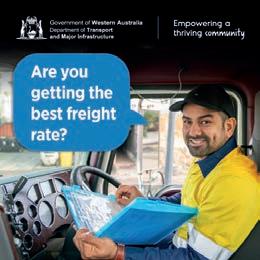
“But unless owner-drivers are paid reasonable rates, the pressure on them to cut corners to compete in the highcost environment in which they operate will continue.” Road freight industry veteran and Council member A ndrew Fazzalari wants owner-drivers to know their rights when contracting with hirers.
“Maintaining a healthy cash flow is part and parcel of running a profitable business so getting paid on time for your work is essential,” Fazzalari said.
“Knowing when you should be paid and what to do if you run into a dispute will help keep your business moving and our online toolkit will help owner-drivers do that.”
THE National Road Transport Association (NatRoad) is calling on operators to highlight the issues they’re having in recruiting and retaining truck drivers.
By taking part in a global driver shortage survey, NatRoad said operators will help show the scale of Australia’s truck driver crisis and help the association call for government action.
The annual Global Driver Shortage Survey is conducted by the International Road Transport Union (IRU) –the United Nations-affiliated body representing road transport.
NatRoad partnered with IRU last year to include Australian operators in the
survey for the first time in 2024. To have your say, visit natroad.com.au and search survey. The survey closes on September 30.
NatRoad CEO Warren Clark said data gathered by the survey is critical to highlight the extent of the local crisis, developing solutions and advocating for reforms at all levels of government.
“This is a huge issue affecting road transport operators around the world, and it’s vital we continue to capture the situation in Australia and show the problem isn’t going away on its own,” Clark said.
“Participating in the 2025 survey will give us the evidence we need to push for change on behalf of Austra-
lia’s road transport industry, especially given Australia’s total domestic freight task is projected to grow by 26 percent by 2050.
“Findings from the 2024 survey showed the stark reality of the problem we in the road transport industry have known about for a long time.
I urge operators to take part in the 2025 survey to ensure the latest local information is included.”
Key data on the situation in Australia captured in the 2024 survey included:
• Over 28,000 unfilled driver positions, a figure projected to reach 78,000 by 2029.
• Nearly half (49 per cent) of Australian trucking busi-
nesses experienced severe or very severe difficulty filling driver positions.
• Close to half (47 per cent) of all Australian drivers are now over the age of 55, and only 5.2 per cent of the driver workforce is under 25, and
• Just 6.5 per cent of truck drivers in Australia are women, despite women making up almost half (48 per cent) of Australia’s working population.
“The future of Australia’s road freight industry depends on our ability to address this crisis and continue to produce safe, skilled and professional truck drivers, while also providing an attractive and rewarding career
path for young people wanting to be part of the industry,” Clark said.

BY ALF WILSON
AFTER speaking to numerous road transport operators big and small it seems there is a genuine shortage of truck drivers around Australia.
This message was relayed loud and clear when Big Rigs yarned to more than 20 operators in early August.
Morgan Transport Group (MTG) is based at the Bohle in North Queensland, operating 112 trucks.
General Manager Cameron Wright told Big Rigs that the severe driver shortage has several facets.
“The driver shortage isn’t just a recruitment problem – it’s
a national supply chain risk. At MTG, we’re doing all we can to attract and retain good people, but the talent pool is shrinking fast,” Cameron said.
“Without serious investment in training, licensing reform, and real incentives to make driving a more attractive career, the entire industry will
continue to feel the strain.”
One long time small fleet operator who has four trucks said the problem was widespread. “I have four trucks and just can’t find suitable drivers. That is why you see me behind the wheel myself when I would rather be in the office doing administration,” he said.
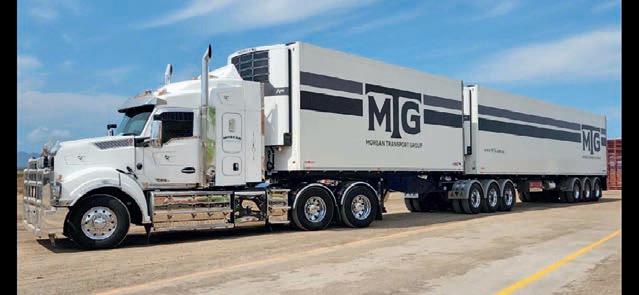
A member of a large family run business which operates six trucks mainly transporting livestock echoed those senti-
It is not only the drivers which are in short supply, but we cannot hire suitable mechanics or fitters,” he said.
A couple of others agreed, however one felt that there may
be enough drivers, but finding ones who want to work is another question.
One company which had been having trouble finding drivers however says one of its newest recruits has been working out really well. The driver, aged in her fifties, had previous experience which held her in good stead when applying.
“I decided to hire her on a three-month trial and so far, so good,” a partner in the business told Big Rigs She has been delivering
and
term.


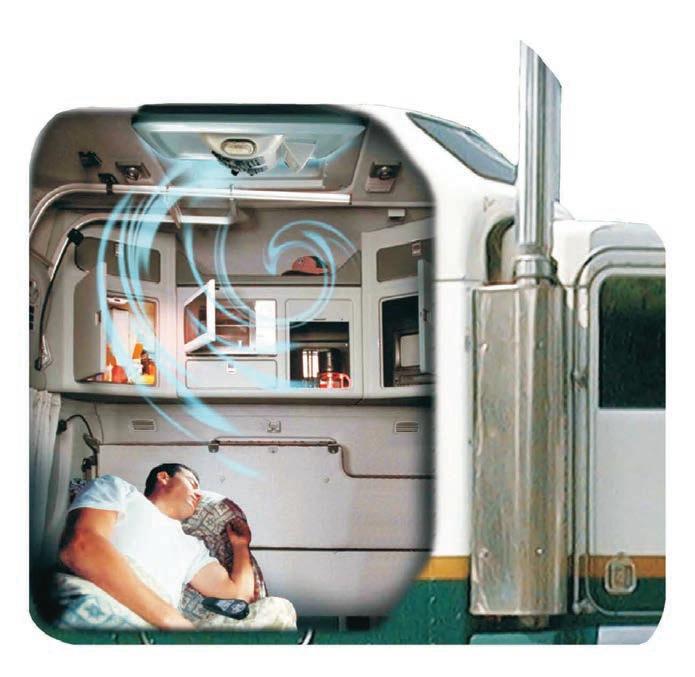

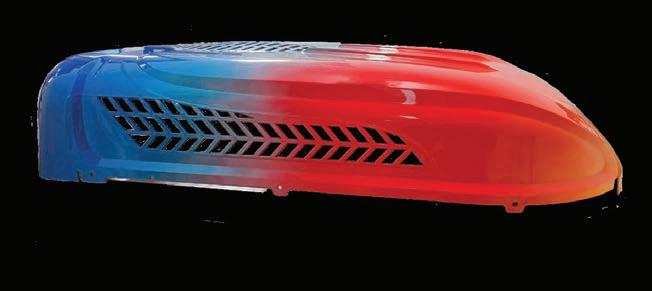




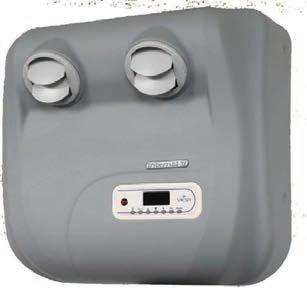



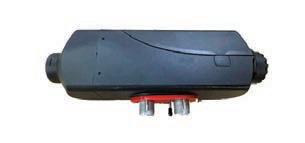


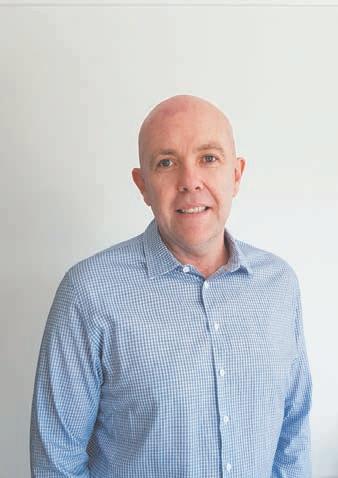
EDITOR JAMES GRAHAM
home safely some nights.
The promised revamp of the Heavy Vehicle National Law is now a running joke, roads are in tatters and companies continue to struggle to attract staff. We need a win, and we need it fast.
Until then, all we can try and do is hold those in power accountable – and celebrate those who are overcoming the odds. Companies like our cover story subjects, Tasmania-based De Bruyn’s Transport. Now in its 60th year, it’s a family-owned powerhouse that puts family first on every level with some 18 fathers working there with their children We couldn’t think of a better subject for our Father’s Day issue, particularly when this multi-generational dynamic in transport is becoming increasingly rare.
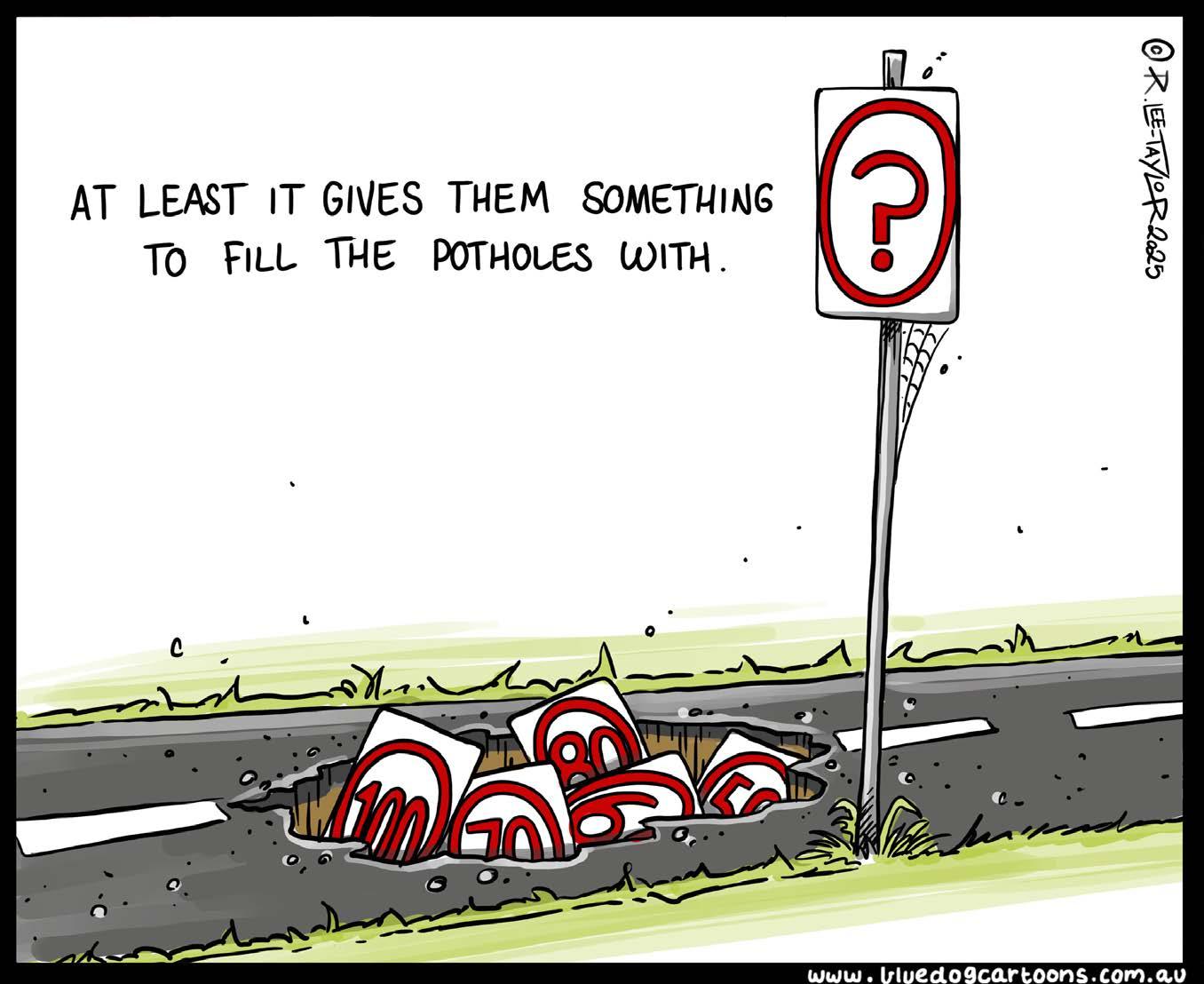
READERS were quick to sa lute Nolan’s Interstate Trans port subbie Roger Alomes, 83, who has just wrapped up his final Melbourne-to-Brisbane haul after more than 7.6 mil lion kilometres logged in his beloved Peterbilt 379.
“Congratulations on your re tirement Roger,” wrote Steven Smithson.
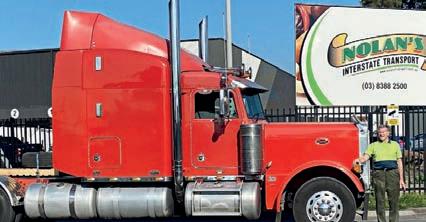
“Wishing you all the best for the future. I’ll miss seeing the old PB running up and down the Newell and the odd chat we had.”
Rose N Wayne Marshall was also full of praise for Roger’s long run.
“Wow, such an incredible innings one hell of a milestone
your health must have been spot on well done old mate.”
Added Mathew Thompson:
“Always good to see Roger out there. He’s a top old rooster. Time for the Pete to become a lawn ornament.”
Peter Edwards also wished Roger well in his retirement.
“I hope Nolan’s buy the
Roger Alomes has driven his Peterbilt since 1996.
Image: Nolan’s
truck off you and keep it in your honour.”
Stan Alton Stanley shared a similar sentiment.
“Great effort mate and yes Terry was an absolute gentleman. However, I did see him dust up a sunny in the old yard back in the very early 80s.”
AS she celebrates her 55th year in the industry, our columnist Jacquelene Brotherton lamented the lack of national uniformity when it comes to rules and regulations.
“This is all been floated before and was sunk just as quick,” Trevor Warner wrote in reaction to Jacquelene’s recent column.
“It is a jurisdictional problem. However, some of us have already floated the idea of moving the heavy vehicle law and associated compliance into the Commonwealth jurisdiction. I was also told this will never happen as well.”
Gordon Cashie said Prime Minister John Howard did bring in national road rules so

every state was the same.
“He took some road rules from each state and made one [set of] road rules. But some states did not want to change. They kept their own state road rules. So nothing will change.”
Robert Clarke said authorities are too concerned about preserving the PBS system.
SOCIAL media followers were split on the news that the Pine Creek Heavy Vehicle Safety Station on the Pacific Highway has now been opened to truck drivers outside of staff hours so they can self-check their mass.
“So... you’re asking us to be lieve that the weighbridge read out isn’t linked to all the cameras including the ANPR,” said Stan Lyall.
“Sorry. I have zero trust.”
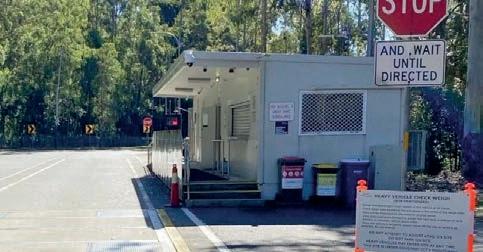
Martin Penwald said they may well be, but they haven’t been acting on it.
“I’ve used Forbes quite a bit trying to sort scales and been in over on axles many times without anything surprising me in the mail.
“Sometimes takes three or four goes to get scales dialled in. But in saying that I’ve never been in over max GVM but well over on axles at times.”
Grant Spray was also convinced that there would be number plate cameras and
cameras on the scales for that automated letter in the mail if you’re anywhere close to your mass limits.
“I for one don’t care if they are linked to cameras. It just shows who care enough to use them,” Tony Bulstrode wrote.
ROADS Australia (RA) added its voice to calls for the development and implementation of a nationally consistent Road User Charge framework by 2028, much like the one adopted by New Zealand.
The abolition of petrol tax, and the move towards all vehicles (whether they be petrol, diesel, electric or hybrid) paying for roads based on distance and weight, is the biggest change to how NZ has funded its road network in 50 years.
Mark Winter found it “interesting” that when there is technological breakthrough that potentially can save truck operators huge sums in reduced fuel running costs and improve produc-
“NHVR was created to uniform the rules and they can’t do that. Plus, happy to go through Australia companies but won’t even look at foreign-owned companies. Just a joke.”
Added Phil Benson: “We tried national in the 90s but didn’t last and yet our logbooks are national.”
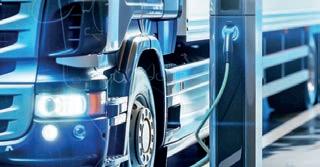
tivity, government, and others, “look for new ways to tax and charge and negate any operating efficiency that might have been achieved.”
Added Bob Webb: “The state and federal governments get over 10 billion dollars in fuel tax, plus billions more in vehicle registration fees.
“But only return 10 per cent of this revenue back to roads. They do not need to tax us more, just spend more of what
we already pay on roads instead of using this revenue stream to fund governments other failing schemes.”
Tony Stephens wrote that maybe if all the money collected was spent on roads instead of being siphoned off for other government waste our roads wouldn’t be in the desperate state of disrepair.
“However, every vehicle using the roads should pay their fair share.”
































































































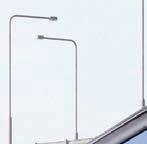













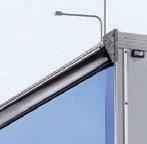



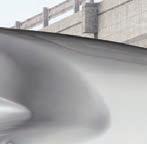







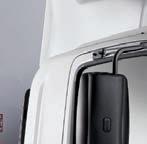





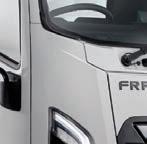



















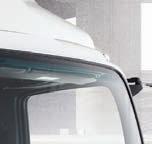
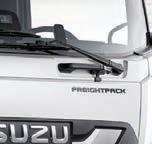



















































To find out more, visit your nearest Isuzu Trucks Dealer or visit isuzu.com.au







BY EMILY JURSS
A deteriorating section of Glen Echo Road, northwest of Gympie in Queensland is putting serious strain on local cattle producer Craig Pomeroy, the only supplier operating along the stretch.
The worsening condition has forced him to go to extremes just to keep his business viable.
Pomeroy, both a grazier and a former saddler, said the situation reached boiling point a fter heavy rain in December 2024.
“It’s in poor shape; council have done little bits, but they only patch up little bits of the road,” Pomeroy said.
His response was to invest $85,000 in his own Isuzu transport truck. On top of that, he has taken on roadwork duties himself, repairing about 3km of Glen Echo Road stretching from his property each time it rains.
Using his $55,000 tractor to carry out the work, he estimates it has cost him between $3000 and $4000 a year since purchasing the farm five years ago.
While financially better off using carriers, he said, “they won’t come because the road is too rough.”
Pomeroy’s operation contributes significantly to the local economy, with annual cattle sales at local yards estimated at $80,000–$100,000. But the battered road threatens both livestock and livelihoods.
He said repeated requests for repair have gone largely unanswered. In early April, “they put pegs up and said they’d be back to gravel it. Then we had another 100mm of rain, so that made the pegs obsolete.”
Council, he said, kept advising they would return, “ but who knows when.”
Local carriers have increasingly refused to travel the
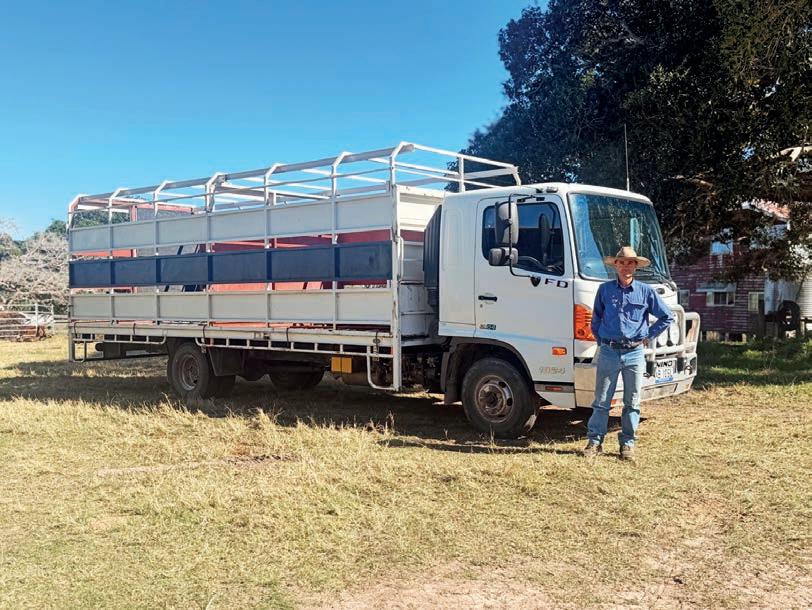
road, citing risks to vehicles and livestock.
“If you miss a gear on one of those hills, you’ve got cattle upside down and hurt… that’s a big vet bill,” Pomeroy said.
He declined to name carriers who had refused the run, saying it was not their fault the road had deteriorated. He stressed they should not be blamed for prioritising the safety of their staff, vehicles and stock.
Pomeroy also raised concerns about legal risks faced by operators forced to move cattle along unsafe routes.
“If the police pull you over and you’ve got hurt cattle, you’re in strife,” he said.
Under Queensland’s Animal Care and Protection Act 2001, transporters can face charges if cattle are injured in transit due to negligence or unsafe conditions. Offences include failing to provide appropriate care or exposing animals to unnecessary risk.
Penalties range from heavy fines to prosecution, depending on severity.
For truck drivers and producers, this adds another layer of pressure when navigating poorly maintained roads.
According to Gympie Regional Council’s own website, agriculture is a cornerstone of the region’s economy. In 2020–21, Gympie’s total agricultural output was about $150 million, with livestock slaughterings making up nearly 48 per cent of that value.
More broadly, food and agribusiness – especially beef, dairy, livestock and horticulture – generated $854 million in sales and added $300 million in value to the local economy. In 2022-23, the sector accounted for 10 per cent of local jobs and 13.4 per cent of gross value added.
A council spokesperson acknowledged the importance of road infrastructure to the agricultural sector, particularly for lone producers like Pomeroy.
They said the Growing the Gympie Region Economic Development Strategy 2025–2029 identifies food
THE National Heavy Vehicle Regulator (NHVR) has recently expanded access at some of its Heavy Vehicle Safety Stations (HVSS) for truck drivers to self-check their vehicle mass outside of operating hours. There are now six sites in New South Wales and three in Queensland that may be accessed by truck drivers for self-checks of their vehicle’s mass when not operational, with the latest being the Pine Creek HVSS.
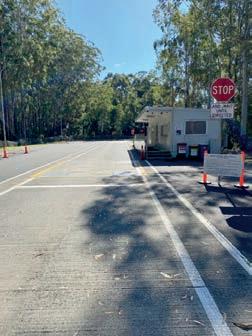
This follows a successful trial of opening two other NSW sites 24/7 in April 2024. Truckies can now self-check their vehicle mass outside of operating hours at these sites in New South Wales:
• Pine Creek (Pacific Highway)
• Halfway Creek (Pacific Hwy Southbound)
• K ankool (New England Hwy Northbound only)
• Bell (Bells line of Rd)
• Two sites at Daroobalgie (northbound and southbound).
A nd these sites in Queensland:
• Townsville Port
• Port of Brisbane
• Burpengary (Bruce Hwy Northbound)
According to the NHVR, extending access at the Pine Creek site has been working well, however added that for those wishing to use the site, “Remember to follow the
signed directions, including to not park or attempt to adjust load on-site.”
An NHVR spokesperson also added, “The NHVR will continue to explore ways we can assist industry to achieve better safety and productivity outcomes, and ultimately create safer roads for all.
“While it is critical for all drivers to conduct a pre-departure inspection of their vehicle (such as checking the load is correctly restrained and it is compliant with mass limits), the NHVR is always open to further opportunities to empower drivers to enhance their own safety and compliance.
“Drivers may also access vehicle weigh services through the private provider GoWeigh, which offers a network of weighbridges throughout Australia that can be used by almost any road user.”
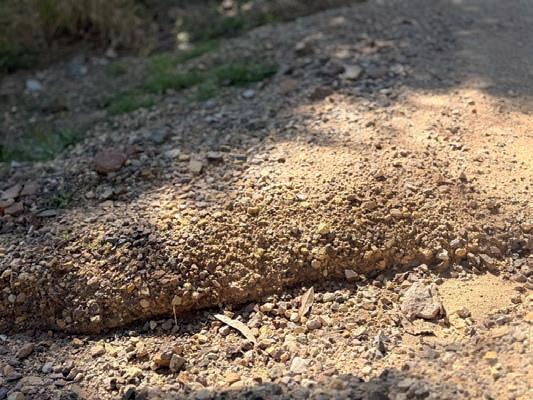
and agribusiness as a key pillar. The council is reviewing short- and long-term repair schedules for rural roads and exploring funding options to ensure reliable access for freight and livestock transport.
“As part of this program, Glen Echo Road was identified as a road that requires grading works and is due to be graded later this month,” the spokesperson said.
Gympie Regional Council did not respond to requests for an interview or provide figures on its current budget for routine grading of unsealed roads. The most recent publicly available data dates back to 2018–19, when just $500,000 was allocated to unsealed road maintenance. More than five years on, current spending remains unclear.
By comparison, a Tasmanian benchmark study estimated the cost of regrading unsealed roads at around $1010 per kilometre. Restoring the 17km stretch of Glen Echo Road would therefore

cost about $17,000 – a relatively small investment considering the disruption faced by local producers.
Pomeroy said he pays about $7000 a year in rates but receives few services in return.
He still pays an additional $400 annually for rubbish collection several kilometres away, is not connected to town water or sewerage, and, without children, cannot make use of ratepayer-funded parks.
THE first widened section of the Hexham Straight is now open to traffic, with three lanes in each direction.
Motorists turning left onto Maitland Road from the Newcastle Inner City Bypass can use the additional lane for about 650 metres, including an extension to the turning lane from the bypass. There is also an additional lane for inbound traffic on Maitland Road from about 650 metres north of the bypass, including more space for traffic turning right onto the Newcastle Inner City Bypass.
State Member for Newcastle Tim Crakanthorp said, “Maitland Road is a vital local artery that’s used by about 50,000 vehicles each day.
“This project will reduce congestion and improve journey times and safety for all road users, including local businesses and freight oper-
ators travelling to and from the Port of Newcastle.”
The latest works also include an upgrade to the traffic lights at the intersection of the Newcastle Inner City Bypass and Old Maitland Road, while the U-turn facility there is also complete.
W hen complete, the Hexham Straight will comprise three lanes in each direction for its entire six-kilometre length, from the Newcastle Inner City Bypass to Hex ham Bridge.
The Australian and New South Wales Governments are collectively investing $2.2 billion in the M1 to Raymond Terrace extension and the Hexham Straight Widening to reduce congestion and improve safety.
The Australian Government is contributing over $1.79 billion towards the project, and the NSW Government is contributing $448 million. The project is expected to
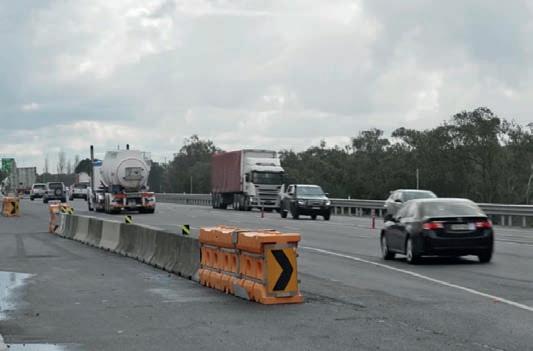
Every part of a trailer matters when you are hauling serious weight. SAMPA’s trailer equipment works quietly underneath and in the background so everything stays steady. Landing gears hold firm during loading and parking, kingpins keep your connection solid through every mile, and wheel chocks add that extra layer of
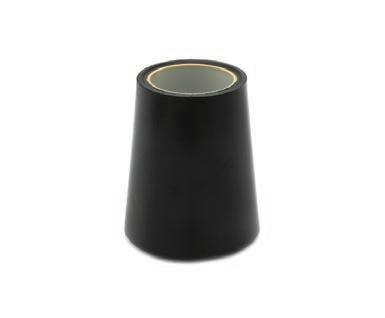

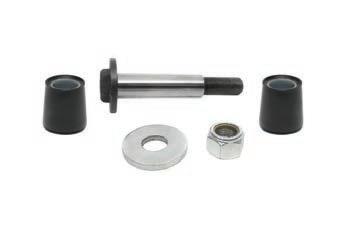
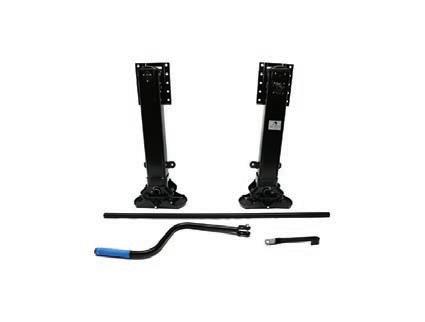
safety when parked up. More than just parts, they are the reason your trailer stays steady, secure, and ready to face whatever challenges come your way. When your load is heavy, your equipment shouldn’t be a heavy question mark. That’s why professionals choose SAMPA.

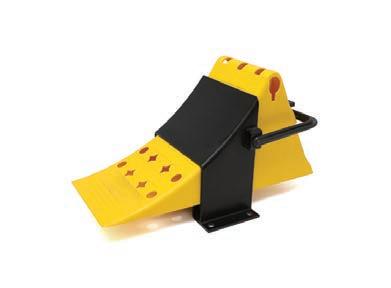




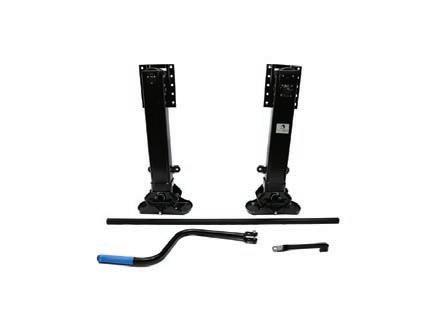
After achieving their childhood dream of driving road trains, these Queensland siblings are now at the same company, doing the same 5300km weekly haul.
BY DANIELLE GULLACI
FOR both Chris and James Pearson, driving road trains was something they had dreamed about from an early age.
The brothers grew up in Queensland’s Lockyer Valley and as kids were mesmerised by the big trucks they’d see travelling past.
“As a kid, seeing the trucks with three or four trailers, rolling big, long and heavy – that was the dream,” said James, 35. Though he tried other things before finally getting a foot in the door –and a shot behind the wheel – at Hillman’s Transport four and a half years ago. His younger brother Chris, 32, got into trucks much sooner. “My brother and I grew up seeing the shiny trucks, with so many local companies from the area. Towing road trains was always the dream for us,” he said.
Chris’ first truck driving gig was in 2015. He had been working at a meatworks for two and half years but wanted something more. That’s when he went out and got his truck licence.
“I got my HR in my early twenties and got a job at Brisbane Isuzu to get a bit of experience in trucks, mostly driving cab chassis to body builders and going to used dealerships. That was a stepping stone to get into the bigger trucks,” said Chris. “You never start at the top, so I knew I had to start somewhere.”
From there, Chris went on to work at Nolan’s Interstate Transport in 2016, working as a local driver before securing his MC. Then at Bulk Granite Haulage he worked with tippers. At Baskett Transport he got his first taste driving road trains, doing the Brisbane to Darwin run. He went on to work at Hannant’s Transport for four and a half years until it’s owner Phil Hannant – who Chris describes as a great mentor – decided to retire. Then it was a job with Rushway Transport, followed by a twoup gig with Shaw’s Darwin Transport, and then his current role at Hillman’s Transport, alongside his brother.
Chris started with Hillman’s in December 2024 and admitted, “James was trying to get me to work for them for a long time.”
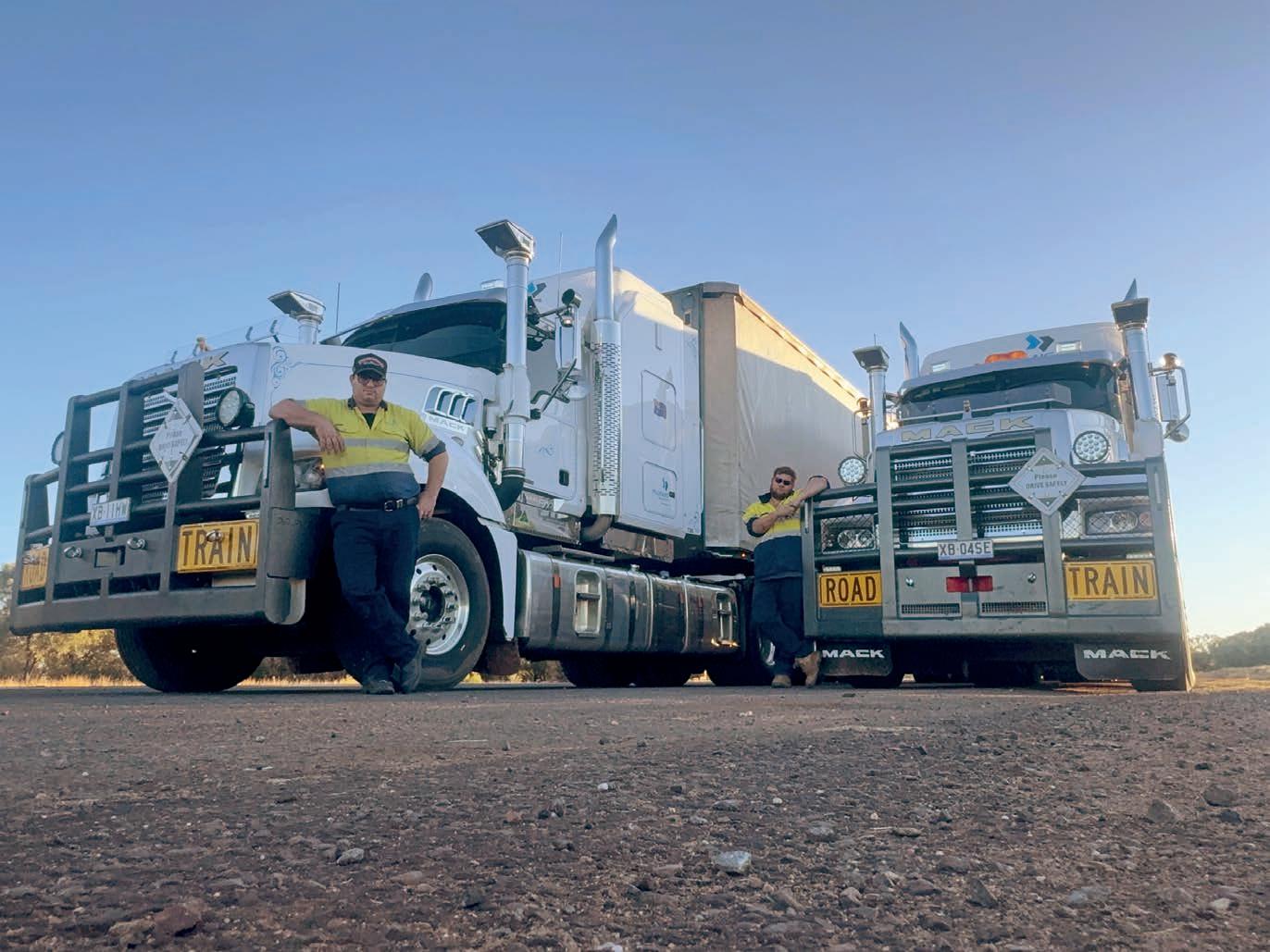
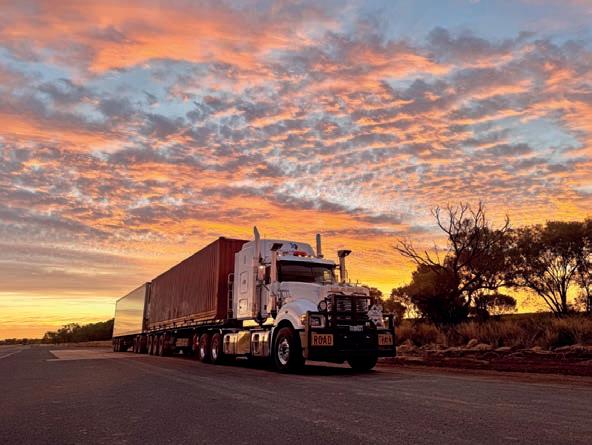
Now they’re both pulling triples and quads from Toowoomba to Mt Isa. It’s predominantly depot to depot work for Team Global Express, with six trucks doing that particular run.
For the 5300km return trip, the brothers typically set off at about 11pm on a Saturday night and arrive back home by Thursday night.
As fathers of young children, that time at home with their families is precious. James has two kids, aged eight and six years old; while Chris has three kids, aged nine, eight and six.
“The work is consistent so I’m able to spend time with my family on a Friday and Saturday night,” said James. Hillman’s Transport is based

in the Toowoomba town of Charlton and operates a fleet of around 60 trucks.
James had been in an older Mack but recently got the keys to a 2024 Mack Super-Liner; while Chris drives a 2023 Mack Super-Liner.
Chris said: “It’s a consistent run every week, so we’re usually doing the same thing each week. Hillman’s has been towing for Team Global Express for a long time, and they have a good reputation of getting the job done.
“Every now and then, we also do a Toowoomba to Darwin trip or head to the mine camps in Cloncurry and its surrounds.”
Asked about what it’s like working for Hillman’s, James spoke very highly of the company. “They gave me my start even though I only had a month of experience doing two-up before starting there,” he said.
Prior to his current role, James spent around four years working as a forklift driver at Nolan’s Interstate Transport; and it was there that he got his MC licence.
“I had a friend who worked at Hillman’s and he told me they were looking for drivers, so I went for an interview and had to do three trips with the owner Steve Hillman,” explained James.

“I started out doing four trips a fortnight to Central Queensland and continued with that for three years. I’ve been on this current run now for about a year.”
James continued, “It was al ways the plan to get into road trains. I just didn’t think it would happen as quickly as it has. If someone is passionate about the job they do, they absorb things a lot better, as opposed to those who are do ing it just for the money.
“I enjoy my job and am passionate about my job, so it makes it easier to take it all in.”
Around eight months into the role, Chris is also enjoying working at Hillman’s. “Any where I’ve worked, I’ve tried to put in the most I can. I love the industry itself.”

While Chris and James will generally leave together and drive up together for the most part, they often separate for part of the trip.
As Chris explained, “We both have different spots that we like to stop at – but I think this is the most time I’ve spent with him!”
Chris says he likes to stop at Morven Roadhouse or Blackall BP for a good feed.
“It’s also great cruising along down at Longreach during sunset. Coming out of Mt Isa to Cloncurry during sunset
is good too, it’s really picturesque.”
James added, “Morven Roadhouse is a good stop for food and the scenery in general is really good too. I did Darwin last week and that was great – the Darwin run is usually to fill in when someone goes on holidays.
“Chris and I are together at Townsville and then we might run into each other in between, because sometimes the run will be slightly different.”
As Chris explained, “We’re both big on trying to be reliable for the customer, because
that makes the company look good – as well as having nice, clean equipment.
“We give the trucks a quick wash in Townsville, and then a good wash when we’re back at Toowoomba.”
The brothers both have a great amount of pride in their trucks. “I clean and polish the truck and look after it like it’s my own,” said James. “The way I see it is that a company pays you x amount a year, and yes, you’re away from home a lot, but they’re also giving you an expensive bit of gear, so you want to look after it.”
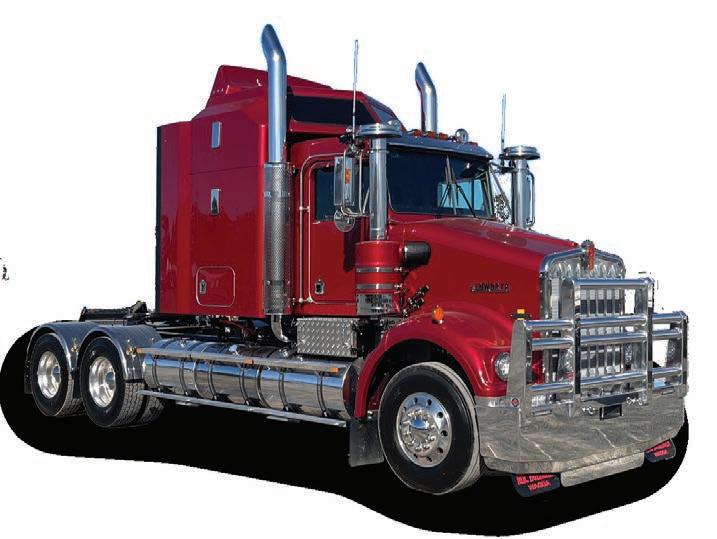
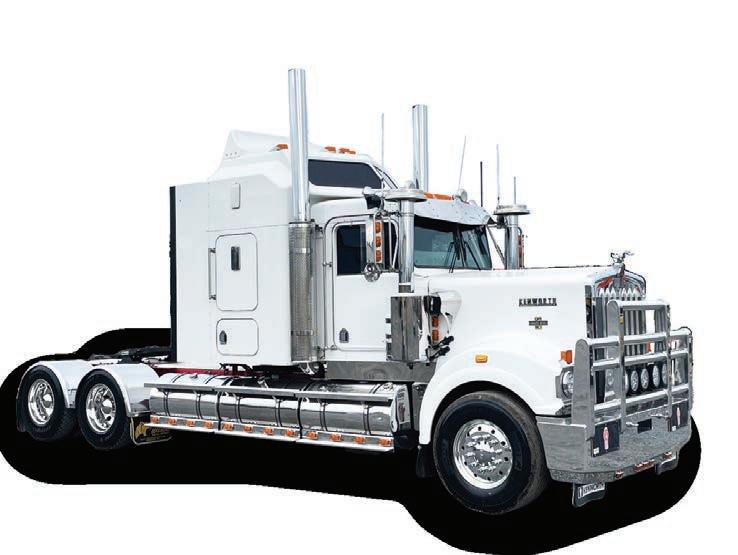
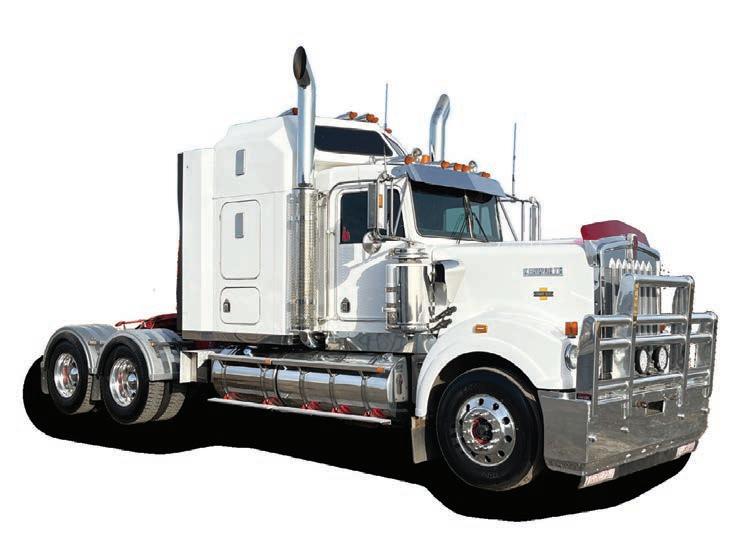
At
De Bruyn’s Transport, it’s a real family affair, with the business proudly revealing it has 18 father-son and father-daughter pairs working side by side.
BY DANIELLE GULLACI
THE de Bruyn family has been in the transport game for over 100 years and 2025 marks De Bruyn’s Transport 60th anniversary.
Diversification, seizing op portunity and a commitment to training have helped the Tasmanian business grow into what it is today – with a fleet of 180 trucks and around 350 staff.
The company specialises in everything from servic ing Tasmania’s major mines, to general freight, overnight freight and dangerous goods.
Since 1995, De Bruyn’s Transport has been owned and operated by brothers John GM and Dirk de Bruyn, and their cousin John Jnr de Bruyn – however it was their great uncle Cornelius de Bruyn who established the company in 1965; and their great great grandfather who planted the roots in Holland back in 1910.
Today each of the directors also have their own children involved in the business.
“I’ve got three sons working here – one in the workshop, one in HR/communications, and one who is a team leader for the PUD fleet,” explained John GM. “My brother has a daughter in the office and a son who is a diesel fitter, and my cousin has two boys here, one is a driver and one looks after one of our workshops.”

John GM’s son Isaac de Bruyn (who works in HR/ communications) shared some of the company’s history. “My dad’s great uncle Cornelius migrated to Australia from Holland in 1953 and purchased West Coast Transport in 1965. That’s where the journey began,” he said.
“My grandfather Bert and his brother John bought the Burnie based business West Coast Transport from their Uncle Cornelius de Bruyn, and his son Jack de Bruyn continued on with the Launceston based business De Bruyn’s Transport. Then Dad, his brother Dirk and cousin John Jnr took over West Coast Transport in 1995, and then in 2005
bought De Bruyn Transport from Jack and joined the companies together.
John GM revealed that back then, 30 years ago, the company had about 25 trucks and 40 staff.
Today’s 180-strong fleet of trucks ranges from 12-pallet rigids through to prime movers used for B-double work. “With the new trucks we purchase, the biggest percentage is Volvo,” added John GM. “We do all our own maintenance through our two workshops, so standardisation helps with maintaining your vehicles and makes it easier to have parts on hand. Our workshop staff are also very familiar with Volvos, and we have the Volvo computer in our workshops so we can do the diagnosing ourselves. We use Volvos for
our rigids right up to the FM and FH prime movers.”
Along with the Burnie head office, De Bruyn’s Transport has depots in Devonport, Launceston and Hobart.
And since 2019, when it acquired Bass Strait Transport, it has also had operations in Victoria.
Like many of the de Bruyns in the business, John GM began working there from a young age. “I started here as an apprentice diesel fitter at 17, when I left school,” he said. “I worked in the workshop and also spent time working as a truck driver in between. I left the workshop in 1995 when we took over, to do more of the day to day running of the business.”
His son Isaac, now 29, also recalled how he first got involved in the business. “At
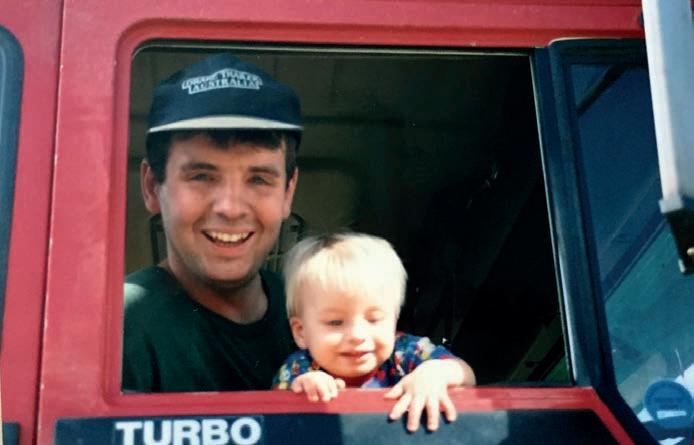

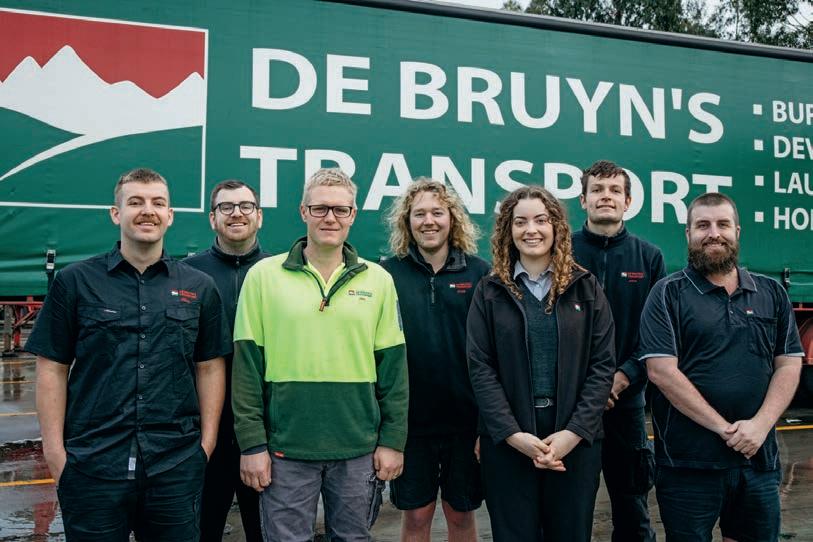
yard every Saturday, load ing containers of magnetite alongside my uncle and grandfather. I did that with my brothers and cousins and now we all work here – that was my first exposure to the business.
“While completing year 11 and 12, I did my Certificate III in Logistics so would work here one day a week. Then in 2016 I started full time in the yard. I moved away for a few years, then came back in 2020 and drove trucks for a while, before starting my current role in August 2022.
“I grew up around the people, the business and the trucks. My siblings and I would go out with Dad in the truck and a lot of my extended family was involved in the business, so we were
“Mum also used to work here and ran a program called Character First, where employees would be rewarded for showing certain qualities and characteristics. We’d get to go across to the different depots with her and if we were lucky, we’d get to stop for an icy pole at the service station.
“My brothers and I are all involved in the business and then we have a sister who isn’t. She has three boys and a girl, and they love coming into the yard and seeing all the trucks.”
When Big Rigs asked John GM what he attributes to the company’s growth and success, he explained, “We’ve diversified into other markets. Initially we were really focused on the mining in-

dustry – that’s still a really big part of our business, but we now also do freight forwarding through Bass Strait Transport, and do a lot with aquaculture. Adding to that, the Tasmanian economy has grown and we’ve been able to grow our business with that. “Every year, there are opportunities that come along. We’ll always look at them and if they fit, we go for them. As the business continues to grow we’ll continue to look for new opportunities, as well as growing with our existing customers.”
De Bruyn’s Transport currently has 12 de Bruyn family members working there.
“And we all have our own roles,” said Isaac. “I feel lucky in my role that I know all of the employees by name and face. I get the privilege
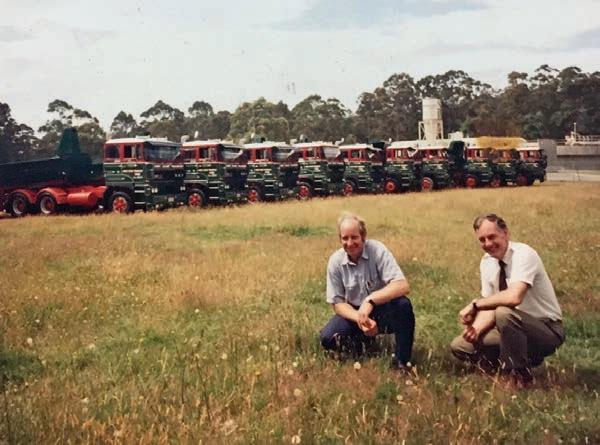
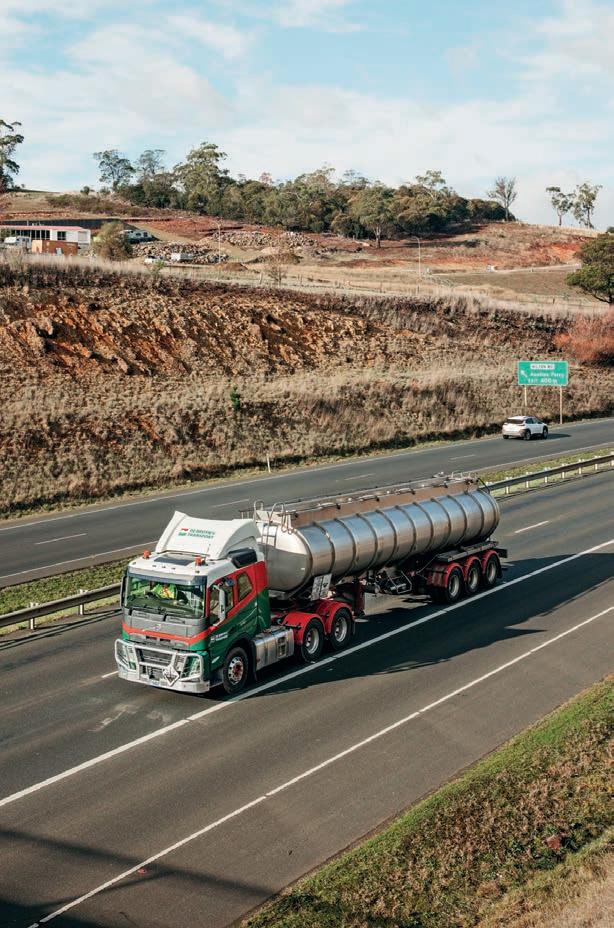
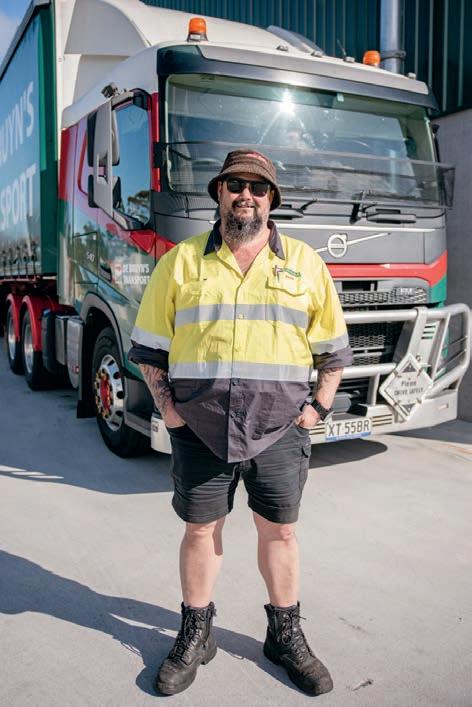
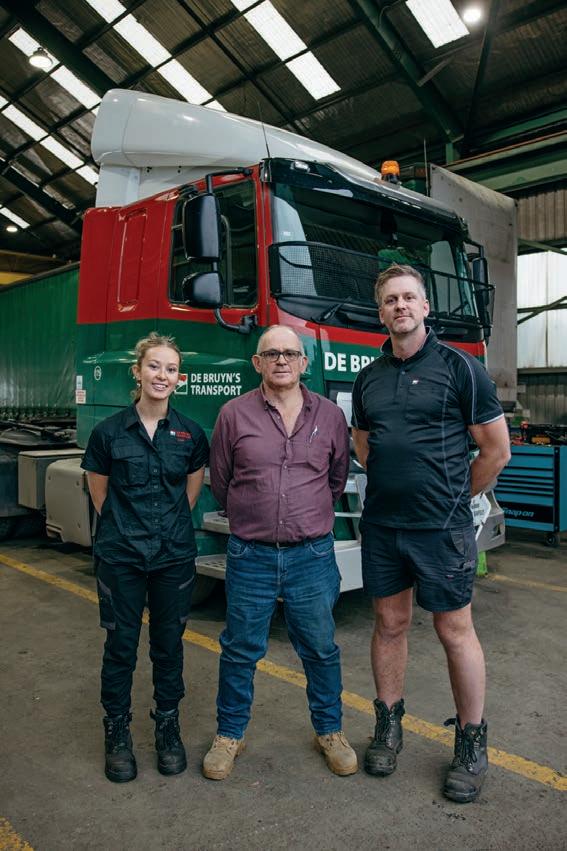
and all these years later, I’m still here,” said David.

of travelling to each of the depots for inductions, programs and awards for tenure milestones. It’s great to be able to honour the employee loyalty that’s shown.”
John GM added that it’s also really rewarding to see fathers introduce their children to the business. “We really love this part of it – there are 18 fathers working together with their children here. We also have a lot of long term employees who started as young lads and have worked their way up,” he said.
The company’s longest serving employee is Dirk Simmons, who’s been there for 44 years. He manages a small team of staff, delivering freight from the mines.
John GM continued, “At De Bruyn Transport, we’re very passionate about training up young people and helping them to get into the industry. We’ve trained up so many new people over the years. Our philosophy is that you can’t just take from the talent pool, you have to add
to it, because unless you’re adding to the pool, you’re not helping the industry.
“We focus a lot on training and love the fact that we have employees who started driving a forklift and are now driving a B-double, or who started as an apprentice and now work as a maintenance manager.”
Ahead of Father’s Day on Sunday September 7, Big Rigs took the opportunity to speak with some of the fathers working alongside their children at De Bruyn’s Transport.
Hitting the road together
Father and son duo David Parker, 49, and Daniel Parker, 27, both work as B-double drivers for De Bruyn’s Transport – and as they told Big Rigs, trucking has been in their family for three generations.
“My old man drove a truck years ago and I always had a like for trucks as a kid. I got into it in my early twenties
Based at the Devonport depot, David started at the company 17 years ago, and Daniel joined him six years
As David explained, he applied for a role at De Bruyn’s fter hearing good things.
“I had heard from a couple of mates that it was a good family business to work for, so I thought I’d join them and see where we went – and I wouldn’t change any of it, this is a great company to work for.”
Both drive 540hp Volvo FM prime movers and travel to Hobart, Port Huon and Bell Bay, doing tautliner and container work.
Daniel first started with the company as a forklift driver and has worked his way up to his current role – taught by none other than his own dad.
“De Bruyn’s is really good with training. I started as a forkie and then after three months got my MR licence. I did that for 12 months and upgraded to my HC, then 12 months later upgraded to my MC,” said Daniel.
“So long as you’re keen and eager to learn, they’re more than happy to teach you.
“Dad and I have always been close so it’s great to be able to work together too. He trained me up – and we were also living together at the time as well.”
As David added, “I got him into it and told him it was a good job to come along to. They are a very good family business. You’re not just a number here, all the big bosses know you by name.
“I actually requested that I could train Daniel the way I do things. I don’t know whether that’s the right or the wrong way, but that’s the way I do it and it works!” he added.
Growing up around trucks, it probably wasn’t that much of a surprise that Daniel
the hood. “Since about grade four or five, I was really interested in mechanical stuff and a lways thought that this is what I wanted to do,” he said.
“I’ve seen a lot of change at the company from when I started and it was West Coast Transport to what the business is now – there’s been a lot of evolution.”
And now 17-year-old Gabi is following the same path. She joined the business last year and is in her second year as a diesel mechanic apprentice.
“Gabi grew up with me doing this. My wife and kids would always pop in and say g’day, so she’s always been around it. And she’s grown up with a lot of these guys in the workshop, so she already knew many of them before she started working here.”
It was during a year 10 school-based work placement at De Bruyn’s Burnie workshop that Gabi got to have a real taste for working as a diesel mechanic.
As Gabi explained, “I did work experience here for two weeks. I was on the borderline of whether I was going to do this or stay at school and become an electrician, so it was good to be able to try it out first.
would follow his father into trucking. “When I was a kid, I used to go in the truck with Dad a fair bit. The fact that Dad was working here is why I started here,” Daniel said.
“We get along really well. We’re often together on the weekends too, whether it’s fixing something or doing something else.”
The father and son see each other almost every day at work. “If we don’t see each other in the morning, it’ll be in the afternoon,” said David. “Sometimes we even work alongside each other if we’re both driving to the same place, so during those times we can help each other load and unload too.”
Just as Casey Pointon, 44, got to work alongside his fa ther at De Bruyn’s Transport, now he’s working together with his young daughter Gabi Pointon.
Based at the Burnie work shop, Casey started with the company as an appren tice diesel mechanic back in 1998. He eventually pro gressed to workshop super visor before moving into his current role of maintenance manager around 10 years ago.
His father Darrell Poin ton was a truck driver and worked at De Bruyn’s Trans port for around 20 years.
“I spent a lot of time in the truck with Dad when I was younger, on the weekends and school holidays,” said Casey.
“We had about two or three years working togeth er here. Dad used to do a lot of heavy haulage/low loader work, so while I was doing my apprenticeship, I’d also get to pilot the loads if he needed an escort.”
While his father was be hind the wheel, Casey de cided pretty early on that his preference was to work under
Like father, like son Justin Oates is the longest serving employee at De Bruyn’s Transport’s Hobart depot, serving as team leader for the PUD fleet there of 16 trucks. Driving one of those is his 20-year-old son Axel Oates, who’s been working by his father’s side for almost two years.
It was back in 1999 – 26 years ago – that Justin, 50, began working as a truck driver at De Bruyn’s Transport.
“I started here with my medium rigid ticket and went through every class up to MC. Now I’ve been doing this job as team leader for 17 years,” said Justin.
As he explained, his move into trucking wasn’t all that surprising. “My stepfather and I used to have a deal, I’d wash and grease his log truck on the weekends, so long as I got to have a bit of a drive –without a licence of course,” Justin laughed. “My mother didn’t know and then one day I drove past and waved at her and she almost fell off her chair!
“It’s great being able to learn different interesting things instead of just sitting at school,” she added. “I also enjoy the problem solving, hanging out with the boys in the workshop, because they’re all pretty cool too – and it’s nice being able to work with dad.
“Dad is really smart and I really look up to him.”
Casey is super proud of his daughter too. “She takes a lot of initiative, I’m really proud of her. She really enjoys it and has brought a different culture into the workshop. She’s very comical at times but she also asks a lot of the
“But my stepfather had always told me to stay out of trucks – and now here I am.” Axel currently drives a heavy rigid flay tray and just as his father did, he’s hoping to work his way up through the licence classes. “What we like to do is take our drivers through to whatever class they’re comfortable in. Axel’s got it in him, he wants to get into the bigger trucks,” Justin said. “He’s also a good worker, has a good sense of humour, and gets along well with the other staff members.”
As Justin added, he’s enjoying having Axel working with him. “When the opportunity here came up, I said if you want to come on board and work here, then go for it. You always want the best for your kids, and that’s why I

BY GRAHAM HARSANT
THE Livestock & Road Transport Association of Vic toria (LRTAV) returned to the MOVE Museum in Sheppar ton for their annual conference on August 8-9.
Alina Hawkins, Chief Op erating Officer of the LRTAV, addressed those assembled, highlighting efforts undertak en by the association over the past year.
“I wanted to take this mo ment to reflect not only where we have come from, but the paths we continue to forge together – whether that’s in dustry, operators, partners and community alike,” Alina said.
“Behind-the-scenes the as sociation has been working tirelessly on multiple fronts to build a safer, more sustainable and more productive future for rural transport.
“We continue to push hard to things like national ramp standards to be embedded in legislation; because safe and efficient low-stress loading and unloading isn’t just good prac tice, it is the responsibility we a ll share.
“To protect people, animals and business reputations.”
Alina singled out effluent management as a hot topic in the LRTAV world.
“Also, the waste management in the bulk sector as well, so those two things can align. Our strategic work in mapping dump point infrastructure on our key freight networks is not just about compliance, it’s about dignity for animal welfare and the bio security of our agricultural sector.
“Similarly, we continue to advocate fit-for-purpose truck washes for both animal welfare and for drivers to be included in our long-term freight facility planning, especially the closures of the current sites that we’ve had.
Alina also said the association needs to ensure that the infrastructure serves the industry, both today and its needs for the challenges tomorrow.
“We are proud of the groundwork laid in some of the training programs that we have started, both in Victoria, New South Wales and now hopefully to be national, producing new drivers with the skills and safety knowledge our profession demands.
“From livestock handling, operating bulk equipment to routed navigation, we are setting the standard for what it means to be completely capable, trained and prepared for the tasks that we have to undertake.
“We have also been working alongside government departments and key stakeholders in the development of forward-thinking plans for our




sector. From national freight priorities to bio security strategies and the inclusion of transport in emergency response protocols.
“This collaboration is critical in shaping the industry that has long operated with grit, and now requires recognition, resources and the right regulatory support. Some of our major wins have come to fruition – none more visible than the successful campaign of stock crates across the Melbourne CBD and going through the tunnels. An achievement that opens doors and roads for countless operators.
“The drought hay network, the higher productivity livestock vehicle network and the ongoing expansion of the PBS network - they all create greater productivity and reduce duplication and downtime for operators.
“Our industry doesn’t run on luck, it runs on sacrifice, resilience and heart. And heart is something we’re not short of.”
Agriculture represents two per cent of the workforce. It also represents 14 per cent of deaths in workplaces – not a great statistic.
Handling cattle, on trucks, at abattoirs and on ramps represents part of that figure. In fact livestock transport is rated third in the top 25 high risk workplaces.
The LRTAV has been working in conjunction with Worksafe on these areas, particularly ramps, both on-farm and at abattoirs to improve conditions for drivers.
They also work in conjunction with the Victorian Farmers Federation, the Property A gents Association, Australian Livestock and Rural Transporters Association (ALRTA) and other bodies to educate and raise ramp standards.
It is a sad fact that you can have a brand-new ramp out of the factory that is not fit for purpose. The LRTAV and the other state associations are pushing hard to push the new ramp standards forward.
At a farm there is at least, often a safety net of people – the farmer, his wife, farm workers. Equally as often at sales yards there is no one there and those facilities in particular should be fit for purpose.
The message to those present was to tell their drivers to report substandard facilities. If the authorities don’t know, they can’t fix it.
Agriculture Victoria’s Les Howard discussed driver’s responsibilities and duty of care towards livestock in the event of an accident.
“Unfortunately, truck rollovers involving livestock do occur,” Les said. “AgVic’s role in responding to these events
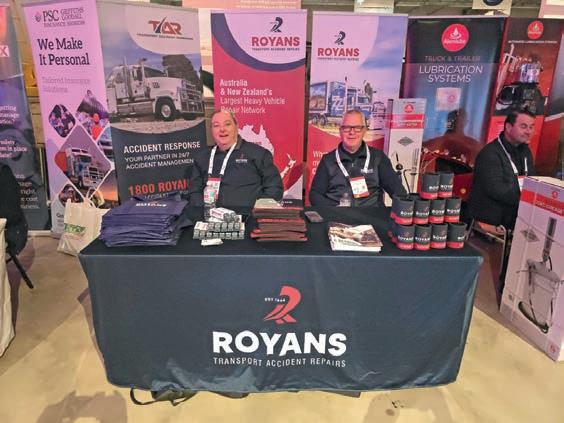
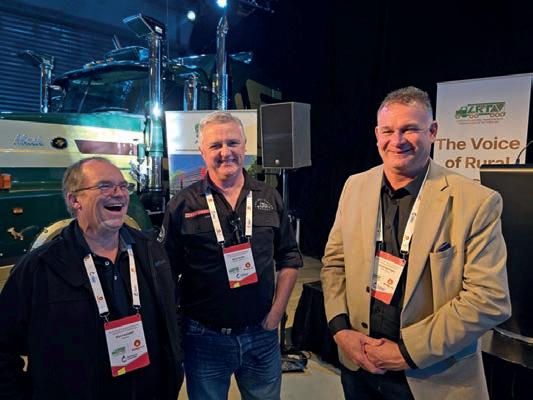
is as a support agency. I want to stress it is if we have people available to assist.
“We may be requested to go to a truck rollover but we don’t always have people in the area and are not always able to provide that assistance, so we have been working with other agencies to come up with some alternatives to AgVic attending.
‘We have recently signed an agreement with a group called Vets for Compassion. A voluntary group, they have vets all over Victoria. We will be able to call upon them where we haven’t got staff available and they will supply vets to go out and manage the immediate welfare needs at the site.
“I should also stress that it is transport companies, and your primary role as driver to provide assistance and manage truck rollovers involving livestock in terms of managing es-
caped stock and destruction.”
“You have to have procedures in place to contact the right people: Alina (Hawkins) or Russell (Borchard) through the association, for example. Vets and dead meat men are scattered throughout Victoria. Make sure you’re familiar with the guys at Livestock Assist because they are trying to protect everyone and make the job a lot easier.”
Well-known livestock transporter, Anthony Boyle, attended as Executive Director of the Australian Livestock and Rural Transporters Association.
“We are not just a livestock or rural transport industry,” Anthony said.
“We are part of a $90 billion agricultural sector which employs 300,000 people in Australia. They are amazing numbers. In my spare time – like

at 2 o’clock in the morning – I thought I’m going to write a strategic planning document. Entitled ‘Gate to Plate’, it’s all the things that I think that we need as an industry.
“It is everything from maintenance, driver fatigue, driver health, network access and doing things right. The good operators in our industry need to be rewarded on more productivity.
“The only way you’ll be able to beat someone who is running cheaper and doing the wrong things is to be allowed to do what you do and do well but do more of it.
“More productivity, better networks. HPLV is a classic example of that. Good operators who are maintenance accredited, stick to safety systems get more access.”
Continued on page 18


From page 16
ALRTA Executive Director Anthony Boyle told attendees at this year’s LRTAV conference that it’s time the sector got serious about driver training.
“As an industry we have been very bad at it,” Anthony said.
“When I first started as a kid I went with the old man, my older brother and other drivers. We got to learn. These days you get a license, get chucked in a 909 and expected to do a thousand kilometre trip out of Dubbo. We need to get better at more training.
“People coming into the industry don’t have farm backgrounds and things like that. So, we need to give them skills.
“This is something I want to bring forward through an Academy and that will be the facilitation process. We won’t do all the training but rather we will connect you with Wodonga Tafe and similar organisations.
“There is no one more skilled in this industry than you guys, so we will give you skills as operators to train your own drivers and they can get the recognition that you and they both deserve.”
Other events on the agenda included NTI’s Adam Gibson who discussed the two biggest problems the livestock transport industry faces: falling over and falling asleep.
“Falling over represents about 43 per cent of our serious crashes in the livestock space,” he said. “We would have a B-double full of cattle laying over once a week somewhere in this country and it is getting worse not better over time. The risk that creates of some knee-jerk regulatory response is huge. Anyone who thinks that is exaggeration, only needs to look at Western Australia and sheep live exports to see that we could have


top of it ourselves.


“With our 4.6m height and 2.5m width, and our contained - not restrained - load that moves around, this is a key risk for everyone in this room. It is a moral and safety imperative to get our people home safe and that we keep these trucks on their wheels.”
Adam’s presentation leads on to Air Brake Systems Shane Pendergast, one of Australia’s acknowledged experts in the field.
Shane points out that while ABS, EBS and ESC are lifesaving technologies, they are useless if not maintained properly – and that there is a massive lack of technicians available to
see a million-dollar livestock rollover and it was an $86 cable that wasn’t plugged in, which is the difference between it happening and not happening.”
Shane’s workload is such that it took him 11 months to get to LRTAV President, Russell Borchard’s trucks after Russell requested his help, which illustrates the dearth of qualified people in that space.
“When I got to Russell’s fleet the amount of things we found wrong were very wrong.

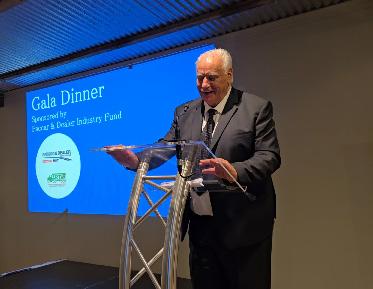
He went ahead and bought his own diagnostics: Haldex, WABCO, whatever was need ed. And that is true leadership. Hopefully everyone else will follow through the way Rus sell has.”
In other programs on the calendar, Anthony Boyle dis cussed his personal journey on PBS approval and how, through the LRTAV noone will have to spend the $300,000 it cost him to have 186 kilometres of road ap proved.

In an A B triple not one single piece of componentry in that combination was working. Its EBS system was completely shut down, so nothing was braking together.
“It blows my mind when I
“There was no load sensing control, there was no ABS action and there was no role stability function in that combination whatsoever.
“I’ve never seen a centre of industry step up as the livestock industry has. Russell is now fully trained and certified to replace his own ECU’s.

Thanks to his and the LR TAV’s efforts, PBS network approval is now available to any one via contact through the LRTAV almost instantly.
Bruce Gunter – well known for his Copy Southbound Podcast – also runs a business: Prodrive Compliance.
In his presentation he took the audience on a harrowing journey of what can happen to an operator who hasn’t ‘crossed the t’s and dotted the i’s.
He described one situation where a dismissed (justly) and
plained anonymously to the NHVR hotline.
The company received three pages listing and demanding access to every company record on every employee, dating back years in some cases.
A continuing nightmare for the company, Bruce’s message was simple: Use professionals to ensure you are compliant in all facets of your business, from employees to subbies and
The Young Drivers Award went to Palmer Transport’s Alistair Palmer with Borchtrans’ Rennie Brown runner-up. The two-day event wound down at the Saturday gala dinner MC’d by the hilarious Sam Kekovich. Next year will be the LRTAV’s 40th and, by popular demand, will again be held at MOVE in Shepparton.
JACQUELENE Brotherton, long-time Chair of Transport Women Australia Limited (TWAL), has handed over the reins to former Vice Chair Coralie Chapman after eight years in the top role.
Brotherton retains a seat on the TWAL Board as a Director and will continue to be a regular columnist for Big Rigs – see her latest column on page 36 of this issue.
“I look back at what has been achieved during this time and I am so proud of the organisation, its board, members, sponsors and supporters,” said Brotherton who is celebrating 55 years in the industry this year.
Brotherton’s many personal highlights during her tenure include the introduction of
the Women Driving Transport Careers initiative, Creating Connections Mentoring Program, Learning Initiatives Breakfasts Series and the ‘Living the Dream’ Song and Video initiatives and programs.
She was also instrumental in the establishment of the Driving the Difference scholarships with Daimler Truck Australia Pacific (2019); the Trish Pickering Memorial Award with Wes Pickering (2019); the Dream Maker Award with National Road Transport Museum (2023) and the Young Gunnette Award with Cummins (2024).
On a personal note, Brotherton has also won a raft of accolades for her many industry contributions: the Excellence
in Road Transport Award (2018 Women in Industry); Female Leadership in Transport Award (2018 Australian Freight Industry Awards); Businessperson of the Year (2019 Wyndham City Council Business Awards) and Outstanding Contribution to the Australian Trucking Industry (2023 Australian Trucking Association).
Brotherton said she was also honoured to present at conferences both here and in the US, plus participate in many roundtables and meetings to lobby for industry in Australia and Washington, DC.
“I have also been able to host a TV Show and podcasts, write numerous articles for publication in Australia and internationally – truly fulfill-
ing my dreams and now on to the next exciting chapter.”
A TWAL media release said the changing of the guard represents the association’s continued dedication to empowering, supporting, and advocating across all facets of the transport and logistics industry.
“We extend our deepest gratitude to our outgoing Chair, Jacquelene Brotherton for her exceptional and deep contribution combined with her unwavering commitment to our mission. Jacquelene’s legacy has laid a strong foundation on which we now move forward.”
TWAL’s updated board structure is:
• Coralie Chapman, Chair
• Penne Murphy, Vice Chair
• Jacquelene Brotherton, Immediate Past Chair and Director
• Di Caldwell-Smith, Company Secretary
• K atrina Burns, Director
• A insleigh Thomas, Director
• Claudia Foini, Director
• Loretta Hartley, Director

Mack is more than a truck. From uptime services to parts and maintenance, Mack is an indispensable part of your business.
Mack. By Australia’s Side.


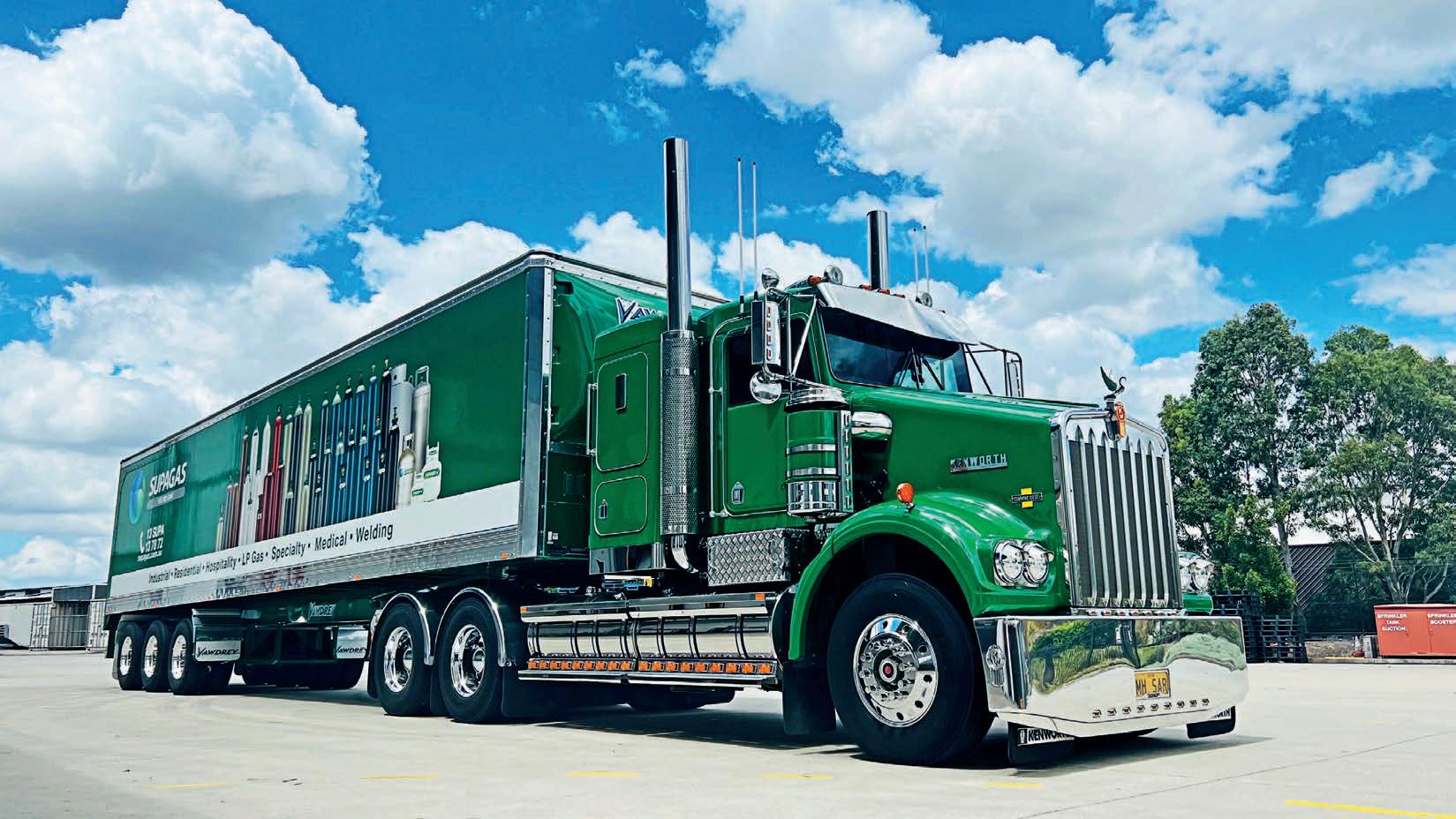
SHELL Rimula has partnered with Big Rigs in a big way – so there are even more reasons to send in your best truck shots.
Each month, the Big Rigs team will choose a #PicOfTheMonth, with the lucky winner receiving a $500 Shell Coles Express Gift Card.
Keep an eye out for our regular posts on the Big Rigs Facebook page, calling for your best truck photos and add yours in
the comments, or email them direct to danielle.gullaci@ primecreative.com.au for your chance to win the main prize.
Don’t forget to include a brief note about the truck and where the photo was taken. We’ll feature some of the best photos in each print edition of Big Rigs, with one winner announced each month.
Keep those amazing truck pics coming!



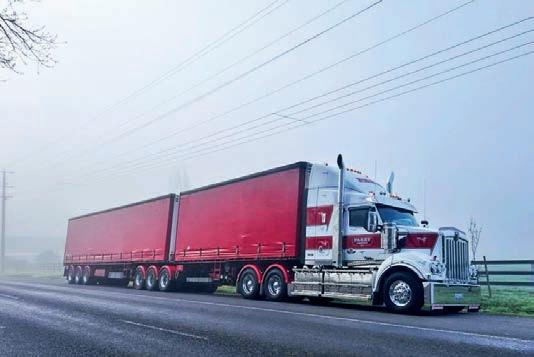
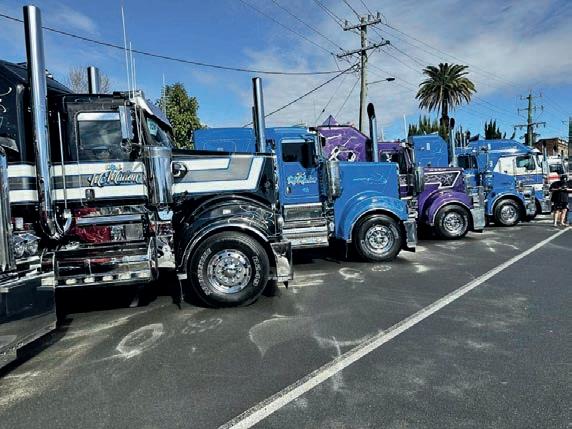
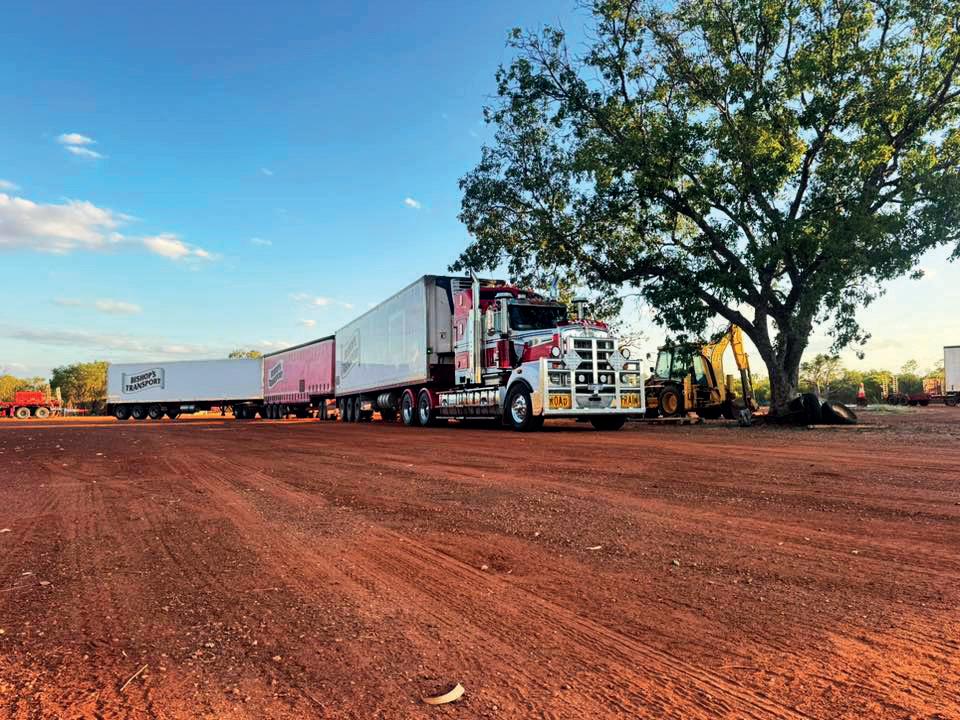
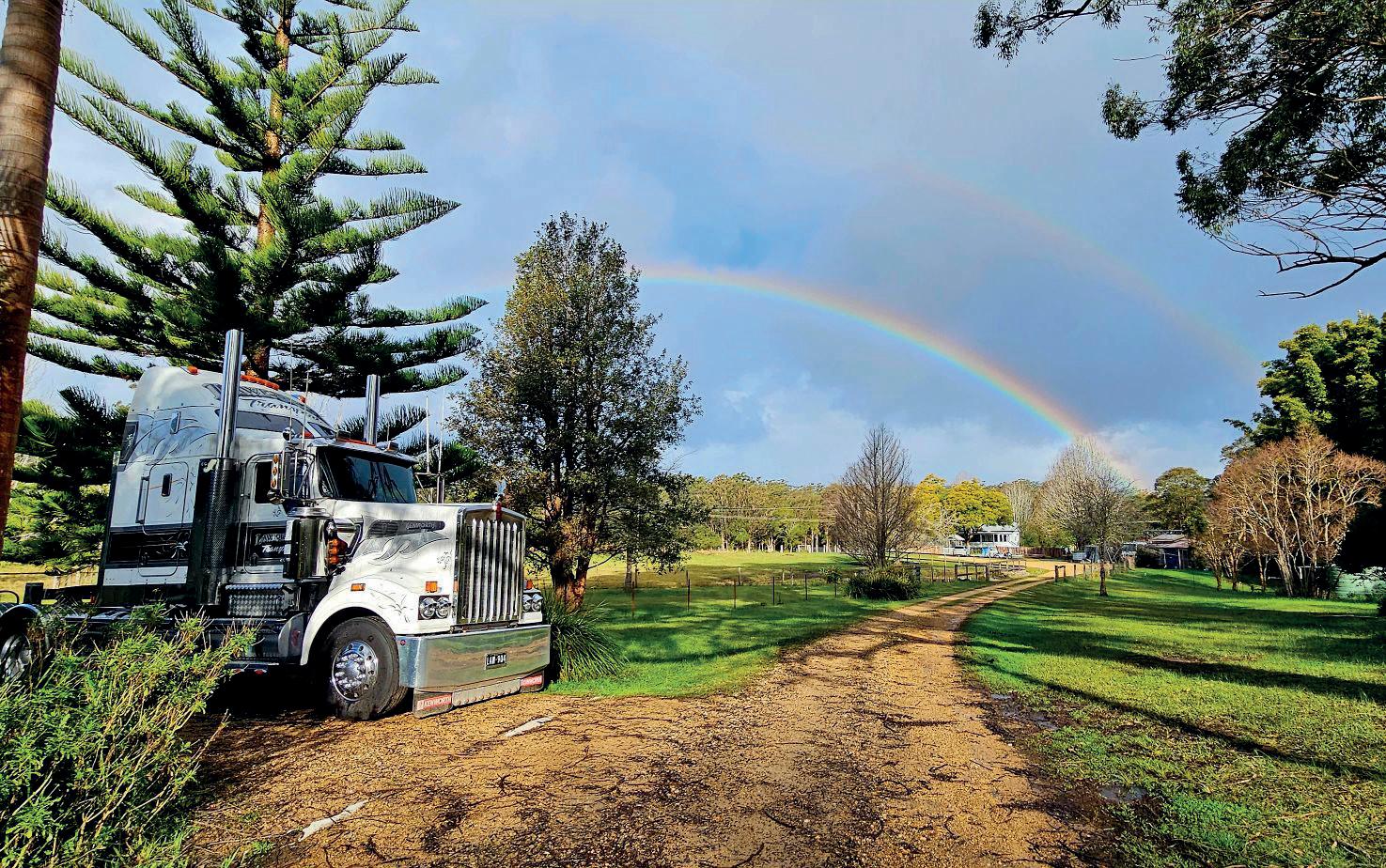
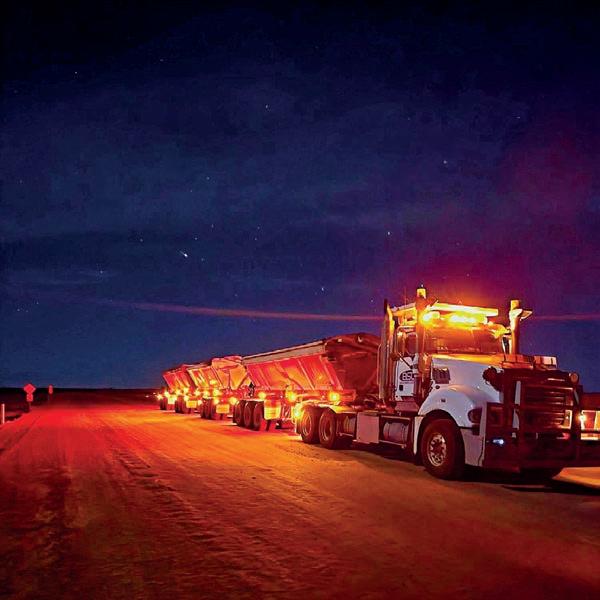

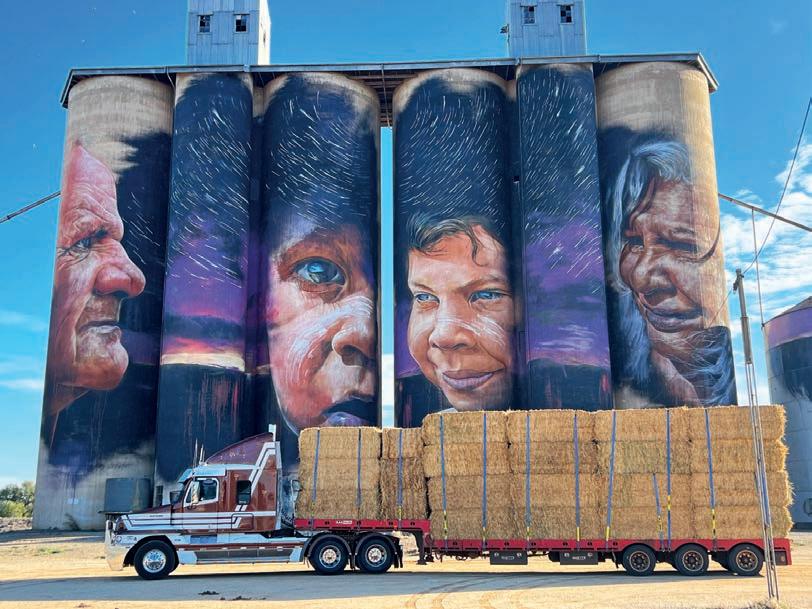


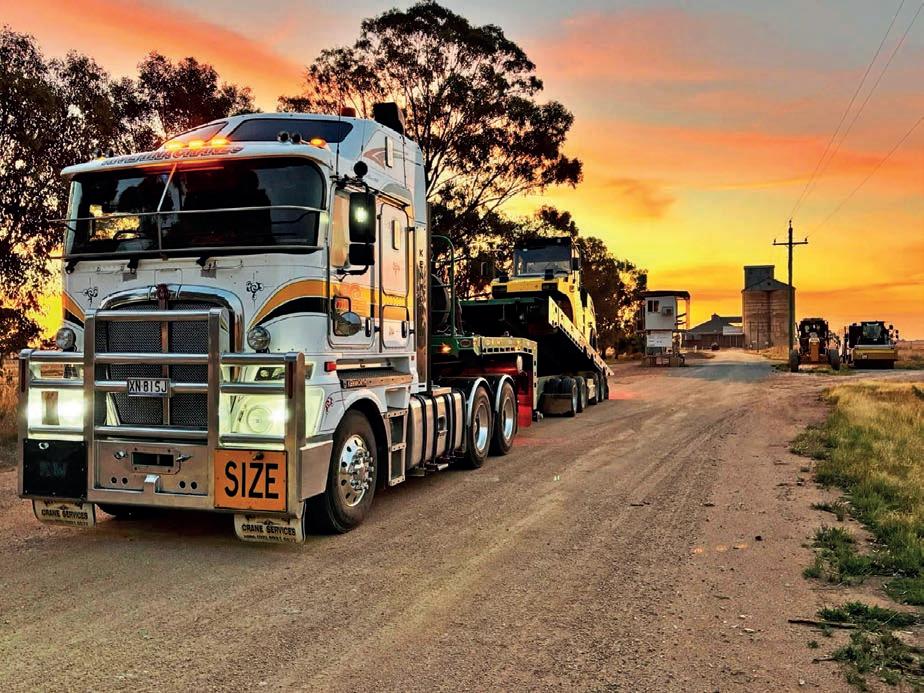
It
hasn’t always been an easy ride for this third generation truckie, but through all the highs and the lowest of lows, he’s found the strength to keep forging ahead.
BY DANIELLE GULLACI
EATHON White, 30, re-
cently got more publicity than he bargained for after taking 23-year-old horse, Fox, on a ride through his hometown of Moe, Victoria.
When television media got wind of it, they got in touch with Eathon wanting to do a light-hearted story. “I’ve battled with mental health issues, so if I can do something to put a smile on someone’s face, I thought why not,” Eathon explained to Big Rigs
“But since being on the news, I’ve had people slandering my name all over social media. I didn’t ask for any of this, so it’s been a rough trot.”
Though most of the media attention has been positive, the trip has unfortunately also resulted in some negative attention from an animal rights group, alleging the horse was too old to be ridden on roads.
But Eathon has actually been around horses for most of his life. He’s been riding them since he was just three years old. Though Fox belongs to a friend, Eathon has k nown the horse for years and had been looking after it at his property. “I’ve known Fox and have ridden him for as long as I can remember. One day recently my daughter Azaleigh (13) needed something from Kmart so we decided to take the horse and then we stopped at the bottle-o. And then what do you know, I’m on the news,” he said.
“I use horse riding and equestrian to keep me grounded, and trucks is my livelihood, so this brings both my worlds together. I never did this for the publicity.”
When Big Rigs contacted Eathon to find out more, the conversation that ensued re-
vealed some of the struggles he’s endured, as unimaginable heartache and loss took its toll on his mental health.
Prior to beginning his career in trucks, Eathon also spent almost a decade working with cattle. “When I left school at 14, I wanted to become a dairy farmer, so from then until I was about 22, I worked on dairy farms across Australia,” he said.
“Eventually, I thought my father and brother have done well driving trucks, so you know what, that’s what I’m going to do too.”
Eathon began working for Bramstedt Livestock Transport and was soon pulling B -doubles of cattle around Victoria and into New South Wales.
“The year I started driving professionally, I lost my son at 14 months old. I saw it as a sign not to get into the industry, so I gave it up for about 12 months – before I realised it was still what I wanted to do so I pulled myself back together and went back to work.”
Eathon then found a role carting general freight and while travelling in a B-double was cut off by a drunk driver. “He pushed me off the shoulder. I rolled my B-trailer and he rolled his car. It was a brand new Freightliner Coronado. I decided to leave that company after the accident and returned to Gippsland, doing tipper and dog work.”
As the son and grandson of truck drivers, Eathon has grown up with trucks.
“I’ve been around trucks my whole life. My grandfather had a furniture removalist company out of Blackrock, Victoria, then my father took over it – but he sold it before I was old enough to drive,” said Eathon.
“I was always in the truck with Dad. He had an old bonneted Volvo and I remember going out with him when I was still in a car seat, so I was really little. There was no heater so when it was cold, I’d curl up next to the engine bay to keep warm. And the only air con we had were the windows.
“Then when I was about 15, my godfather Paul Sidebottom would pick me up in his Sterling and we’d run out to Mildura. Once we got out of town, he’d jump in the bunk and let me take the wheel. That’s where I learned in the trucks.
“My godfather taught me to drive but I already had a good idea because I’d been moving trucks around the yard, playing around in them, watching videos and teaching myself a lot of things. My godfather said to me, your old man taught me how to drive, so now I’ll teach you.”
While Eathon was working locally as a tipper driver, he had also applied for a fly-in, fly-out (FIFO) role in Port Hedland with Campbell Transport. “I hadn’t heard anything, then one day I got a phone call asking if I was still interested in a role with them. I said what day can I fly out? I had to go to Melbourne to get a medical first, then I started with them, carting iron ore.
“It was during Covid, so I had to go into quarantine for 14 days after I got there. Because of border restrictions, I was there for three months straight on that first swing.”
At the time, his now ex-wife was pregnant so he needed to come home. “I was back for three weeks but I also had to go back to work – so I went back until about three weeks before my youngest daughter was due to arrive.”

Eathon continued in his role at Campbell Transport for about two years, however the time away took a toll and his marriage ended up breaking down – he attempted to take his own life but thankfully has lived to tell the tale.
“I had stopped working for Campbell Transport by that point but they reached out with a care package and said when you’re ready, come back over.”
Eathon also revealed that he recently had some unexpected time off from work, losing his licence for three months after being nabbed for speeding in his ute. It’s an incident which Eathon is deeply remorseful for and he’s hoping to put it all behind him, as he gets back to the road.
The father of three young daughters – aged 13, 10 and three – has gone back to working at Bramstedt Livestock Transport. “It’s been pretty horrific over the past few years but the company has been terrific. I’ve had to have time off for family court and all the other things that come with going through a divorce. The Campbells team have reached out too to check how I’m going.
“I’ve returned to where my driving career started to give it another whirl and I’m hoping I can make it all work out. I really enjoy being in the truck – I love everything about driving and having that weight behind me.
“Bramstedt is a great family company to work for. I’ve been back there for just over a year now and I absolutely love it. Even though you’re always picking up cattle and working with cattle, every day is still really different. You can never get bored in this line of work.”
• If you, or someone you know is struggling, call Lifeline on 13 11 14, text 0477 13 11 14 or chat online at lifeline.org.au, or contact Beyond Blue on 1300 22 4636. There are also tools available at Healthy Heads in Trucks & Sheds (healthyheads.org.au).
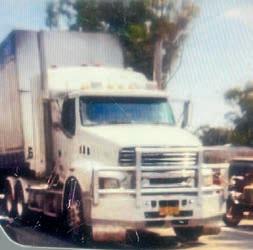

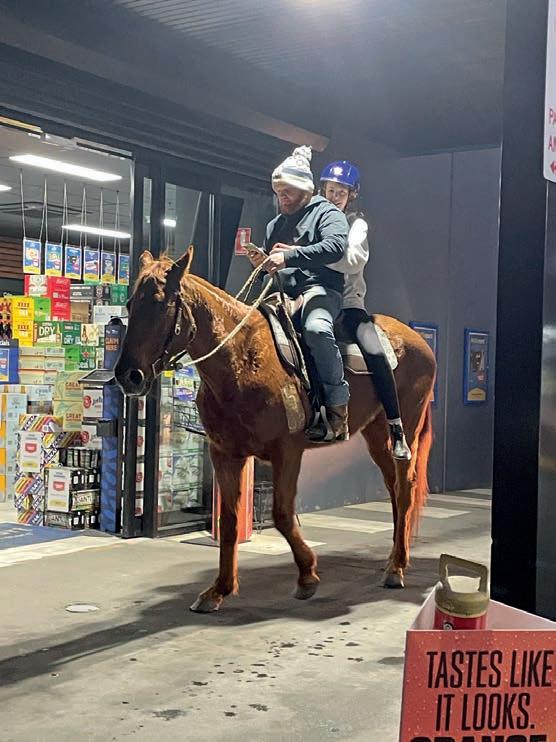




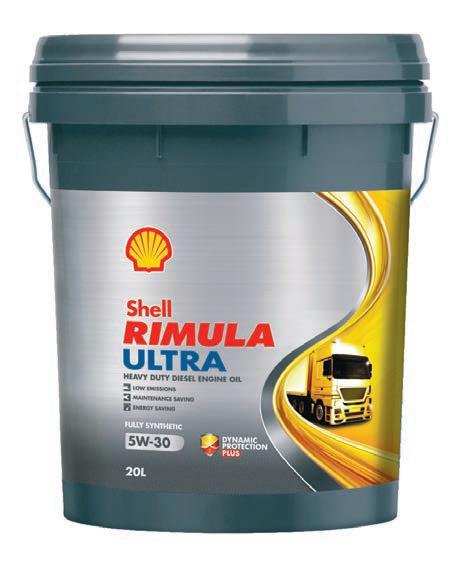
Leader Trucks has carved out its own place in Aussie transport history –and one of the rarest models ever built has just been painstakingly restored after more than a decade.
BY DAVID VILE
IN the 1970s and 1980s Leader Trucks were a player in the Australian transport industry, with a range of trucks being constructed by transport visionary Cyril Anderson of Toowoomba, with near to 2000 trucks built between 1972 and 1984.
In the early 1980s the company developed in conjunction with Brambles the BWL-406, a prime mover designed for heavy haulage, float and block unit working in unison with other Brambles heavy-haul units such as Mack Super-Liners.
With four units ordered, only three were completed for Brambles, making them an extremely rare truck to see on the road, with the three being deployed on a variety of heavy-haulage duties for the company.
The three trucks were eventually sold off to buyers in Queensland and today, one of the three is owned by the Zinn family, who, after a long-term and painstaking restoration had their BWL406 on show at the Rocklea Heritage Truck Show earlier this year.
Given the history and the overall size of the truck, (comparable to a Kenworth C500 or Mack Titan), the Leader was a magnet to many showgoers, drawing a large number of admirers.
Peter Zinn, who along with son Craig, has overseen the 10-year restoration project which was completed just in time for its Rocklea showing and gave a background to both the truck and its refurbishment.
“Only three were made and they were straight into work,” Peter said.
“We’re not sure which one this is – we think it’s the last one – built in 1982, and they probably started on the first one through 1980.
“Leader Trucks didn’t kick on much after that – the public company sold it off after Cyril Anderson died. Barry Clough was an old guy who was an absolute expert in doing up trucks - he found this in a yard in Gatton, and he did a cosmetic restoration on it - it was driveable and looked good to get it into the Gatton Transport Museumit was still painted Brambles Red.
“We bought it from him and left it at the museum and then Craig, without me knowing, sent it to Westco in Toowoomba and they did a bit of work on it and on my 70th birthday it turned up at home,” he explained with a smile.
The Leader is essentially a custom build as they were virtually hand built under the supervision of Cyril Anderson, Fred De Jong and Ken Anderson from Leader.

IT PROBABLY COST ME 15 TIMES WHAT I PAID FOR IT TO REBUILD IT! I RECKON IT’S COST US THE SAME AS BUYING A HEAVY-DUTY PREMIUM PRIME MOVER, WOULD BE HALF A MILLION PLUS.”
Built with a number of components from various manufacturers to Brambles’ specifications, the Leader would be viewed as some what modest compared to today’s high-horsepower trucks.
“Brambles were after 400 horsepower - they used Macks mostly for heavy haulages and they wanted some Mack stuff in it, so they used a five speed Maxitorque transmission. At the time I don’t think Mack had a 400 hp engine so they specified the 3406B Cat motor and it finished up with a Berliet rear end-rated to 200 tonne,” said Peter.

In need of a full bumperto bumper restoration, the Leader was put on a float and sent up to Craig’s home town of Rockhampton where the rebuild was a long and slow process commencing in July 2015.
By this stage, the fibreglass cab and bonnet were in a poor condition and the floor required replacing – along with the fact the limited build number made it difficult to source replacement components.
Local companies including MEM Engineering and Old Car Restorations took on the mechanical and panel work, with the truck taken back to Craig’s own workshops once the cab and bonnet were back on the chassis.
“There was a lot of interest in it up there,” Peter revealed. “MEM Engineering did a lot of the mechanical work. The cabin was taken off and went to Old Car Restorations at The Caves north of Rocky –they are pedantic, they did a great job.
“It spent a couple of years up The Caves, then Craig bought it back to his workshops five years ago.
“He’s had some of his blokes working on it and found mechanical and electrical people to work on it. We’ve had a lot of trouble getting it finished but it’s now 99.9 per cent where we want it.”
The Leader had literally made it to Rocklea in the nick of time, only being fin-

ished in the days leading up to the event with the drive down making for an interesting trip.
“It was a scramble to get it to here – we only came down Thursday night from Rocky. There’s not much still to do, it’s got a couple of little air leaks.
“It’s got an air starter and it was holding air, and we found Friday morning we had to pump her up, which is no trouble – we have got a compressor for it. It’s pretty slow on the road - it’s that low geared now, it might hold 80k an hour, but it will do it up hill, down dale.
“They weren’t built as a fast truck, they weren’t built to race down the road, they were built to carry a load. The steering box hasn’t been adjusted as I found out driv-
ing it in in the city, I thought.
‘Holy smoke I need to concentrate here!”
With its distinctive Brambles Red paint colour, about a ll the truck needs now is a set of Brambles stickers for the doors to make it completely authentic as to its original presentation.
Given the timeframe and the work required to get the Leader back in shape, the cost of the project has been considerable.
“It probably cost me 15 times what I paid for it to rebuild it! I reckon it’s cost us the same as buying a heavy-duty premium prime mover, would be half a million plus. And still going, we haven’t quite finished yet!
Craig’s wife is going to add up the numbers someday,” Peter said.
Having been put pack on the road with full registration, the Leader will not be sitting in a shed collecting dust, with plans afoot to have the truck earn its keep as part of Craig’s Stresscrete concrete business in Rockhampton.
“We’re going to send it back to Rocky to work – not full time but it will do some short haul stuff around Rocky.
“Craig is in the concrete business, making bridge beams for Main Roads and Queensland Railways - they have a substantial contract coming up so it will get a good run. We’re not going to work it hard.
“We just want to keep it as an active truck. We will try it out on a few lighter loads first, just load on a few 30 tonne beams and see how it goes.”
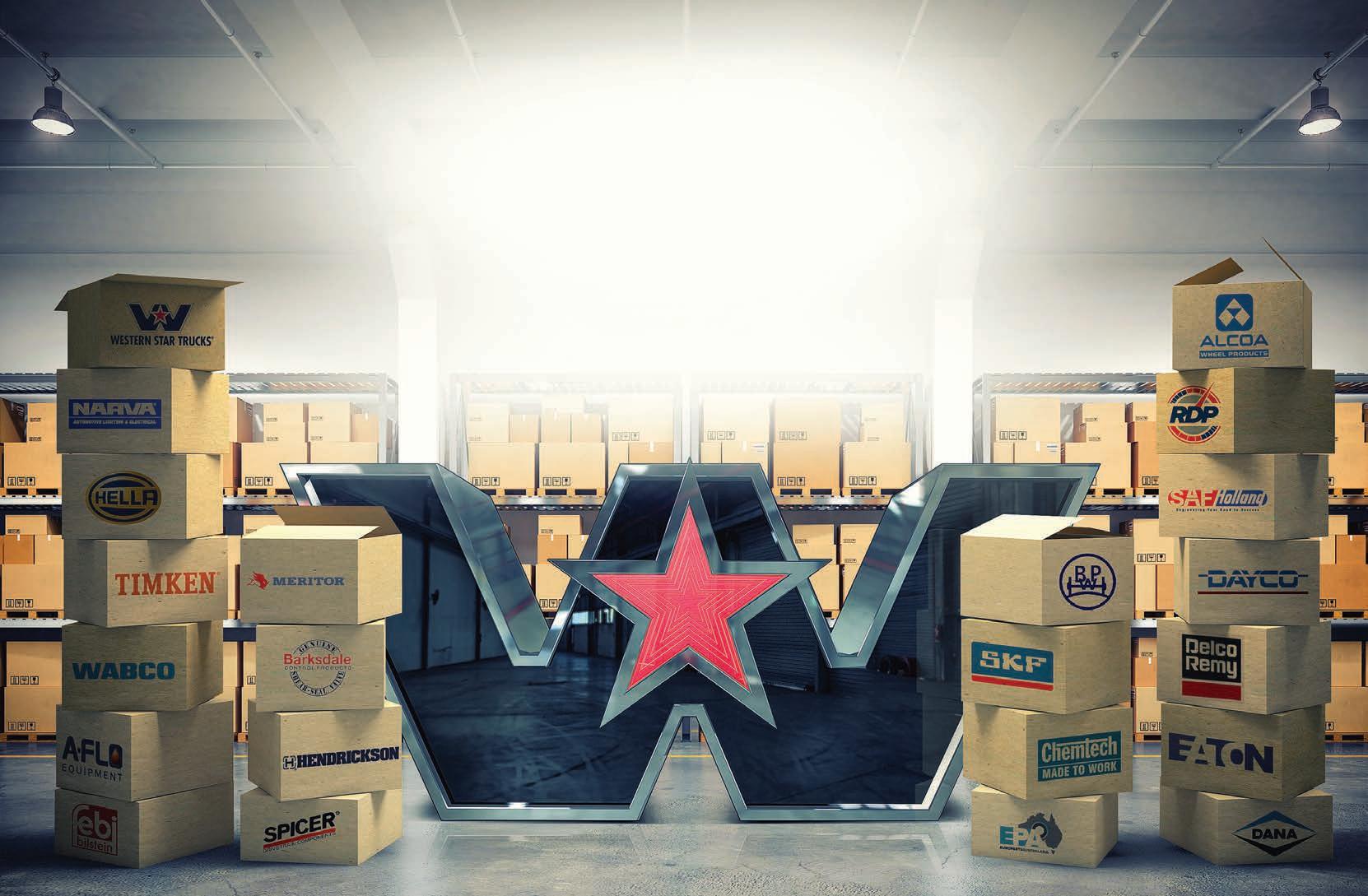
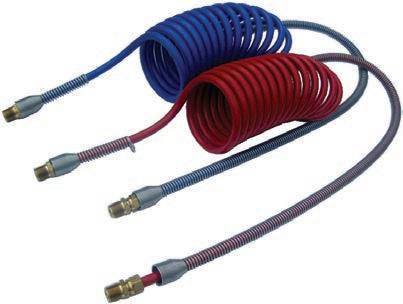
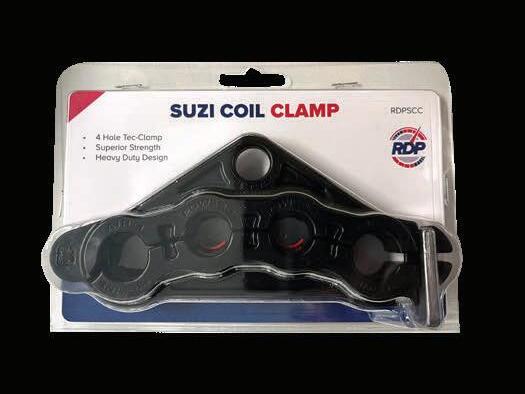

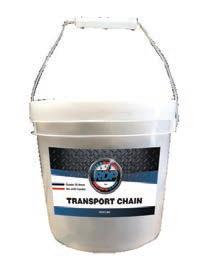

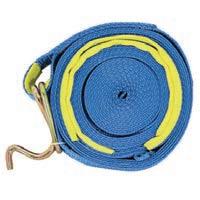
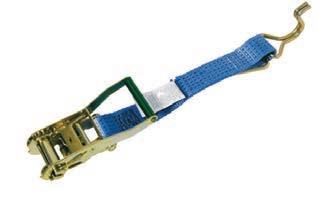

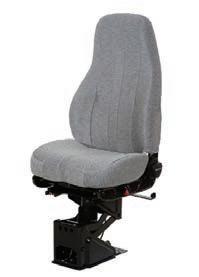


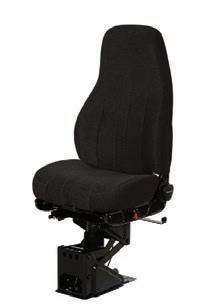
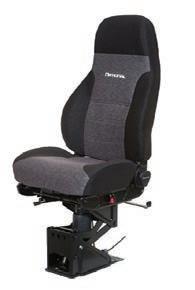
BY KAYLA WALSH
MATT Van Dam has driven a variety of trucks in his life, but an R-model Mack will always have a special place in his heart.
“I’ve driven Kenworths, Super-Liners and R-models, but I got my licence in an R-model,” Matt says.
“My father-in-law used to drive one, and it’s been something I’ve chased for a long time.”
Matt’s dream finally came true about two years ago, when he tracked down a ramshackle 1982 Mack R612 RST.
“I’ve got the build sheets –the truck was commissioned for Banavas Transport and delivered to them in February 1982,” he says.
“I think it did highway work for them, like Sydney to Melbourne, but I’m not 100 per cent sure on that.
“I bought the truck off a man called Diego Manos in Sydney, and it was pretty run-down and unregistered – I don’t think it had been registered for about 14 years at that stage.”
Based in Bairnsdale, Victoria, Matt sent a float up to NSW to pick up the rig.
Once it was safely home, it was time for the restoration process to begin.
“It was basically a full rebuild of the truck, like it would be in the factory,” he says. “It took about 18 months, from start to finish.”
Matt is the proud owner of two companies – logging enterprise Boss Logging, and East Vic Trucks, a truck repair workshop and Mack, UD and Volvo authorised dealer.
Because of this, Matt had plenty of resources at his disposal when it came to fixing up the R-model.
“We’re a Volvo Australia CMV sub-dealer and we have a machine shop and fabrication shop, a hydraulic repair workshop and a lot of call-out vehicles and product support vehicles.
“We’ve got a very extensive workshop, and we did the full resto in there.”
Matt was also lucky enough to have the help of an experienced tradesman, Frank Temstra, who dived headfirst into the project.
“Frank is old school and a perfectionist,” Matt says.
“He has the attitude of ‘Let’s do things right’, not ‘She’ll be right’, and he has a lot of patience.
“We were lucky to have a tradesman of that standard because a lot of his skills are a dying art.”
He adds, laughing: “He doesn’t particularly like me, I don’t think, but he’s taken on whatever challenge I’ve thrown at him and passed it with flying colours.”
Frank kicked off by stripping the truck down to the
chassis rails, before the rebuild could begin.
“We had to split the chassis rails in half because it was a double rail Mack,” says Matt.
“So, we had them sandblasted and put them back together.
“We had to straighten them out because they had been pushed apart by the rust in between the rails.
“There was a lot of work in that.”
Next up was the cabin, with Matt buying a spare from Queensland because the original one was so rusty.
“Unfortunately, when we got the cabin down from Queensland and sandblasted it, it turned out to be not much better than the one we had.
“But there were some sections that were better than the other cab.
“In the end, Frank made one cabin out of two, fabricating any parts that we couldn’t use because they were too badly rusted.”
The doors of the cab weren’t in great shape either, with rust along the bottoms, so Frank also rebuilt those.
“He even went to the length of putting in factory press marks – he was so particular with it,” Matt says.
Frank also painted the truck maroon and white, Boss Logging’s fleet colours.
Meanwhile, the bullbar was built by a company in Toowoomba, Big Rig Bullbars.
“The bullbar is a Bocar copy.
“Bocar bullbars were pretty popular on the older Mack trucks, but they don’t make bullbars anymore, so it’s a replica.”
So, the exterior of the truck was looking schmick – but what about the interior?
“We modeled the interior off a 1982 Mack Super-Liner, which was factory,” Matt explains.
“It’s from the build sheet of our Super-Liner, so it’s exactly the same as that.
“It has what’s called West Coast trim, with a brand-new custom dash – it’s customised in the gauge layout and everything like that.
“And I had the seats rebuilt in Queensland at Seats R Us.”
Matt also bought a second-hand sleeper bunk, because the truck had no sleeper when he bought it.
“It came off a Super-Liner, it’s a mid-rise bunk.
“Frank stripped it all down and rebuilt that as well, and he did all the interior trimming himself.”
To top it all off, a little gold bulldog was placed at the front of the bonnet.
“I was actually given that dog by Mack Trucks Australia quite a few years ago and I had it in my office,” he says.
At the time of writing, the truck was almost complete, with the exception of some
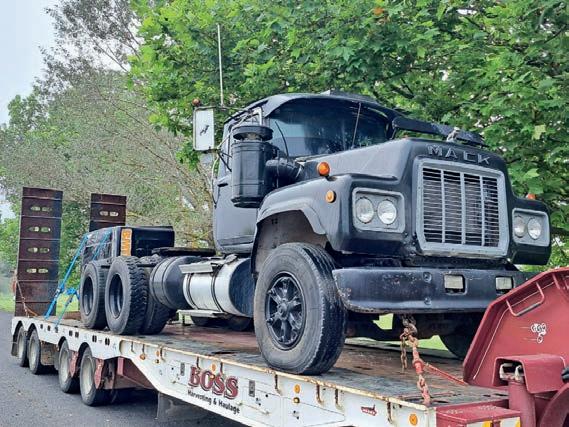


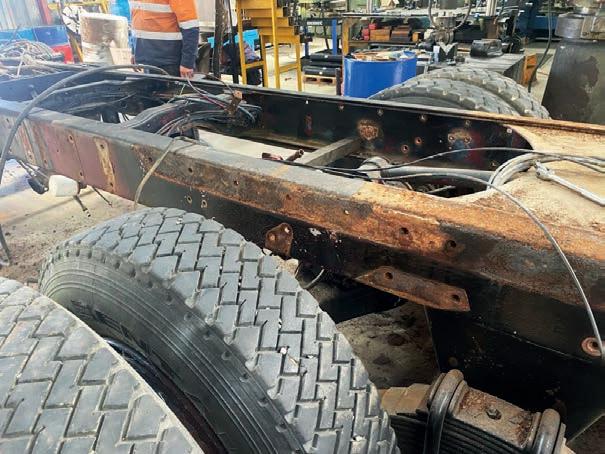



scrollwork on the sleeper bunk.
“Crackers – [signwriter]
Gordon McCracken – is going to come and scroll and line the sleeper bunk,” Matt says.
“We’re also going to get him to put the words ‘Quite Frankly’ on the bonnet.
“It’s a dedication to Frank, but it also depicts the journey to rebuild the truck – because
quite frankly, it was tough!” Matt couldn’t be happier with how the truck has turned out.
“It’s exceeded my expectations – I think it’s exceeded a lot of people’s expectations,” he says.
“I’ve sent photos to the bloke I bought it off and he can’t believe how good it’s come up.”
Matt intends to keep the

Mack as a show truck, and won’t be putting it to work.
“We’ve put a lot of time and money into the truck and we want to preserve it,” he says.
“It will probably be taken to some truck shows or functions – my dad and son are into that a bit.”
Sharing his advice to anyone undertaking a difficult restoration project, he says:
“It depends what you want to
achieve out of it.
“We never did it for financial gain, but if you were trying to make a profit on a restoration you’d have to be very calculated in how much money you spent.
“We met a lot of great, enthusiastic people over the course of this restoration, and it’s been good for me.
“My advice would be to enjoy the journey.”
WITH more than 20 years of experience in the indus try, Levanta are the country’s leading workshop specialists. We understand the needs of modern heavy vehicle work shops.
Leveraging a sales and ser vice capability that reaches right across Australia and New Zealand, we supply pre mium equipment and work shop fit-outs featuring safety, quality and cutting-edge de sign, for industries including heavy vehicles (truck and bus), mining, and agriculture and farming
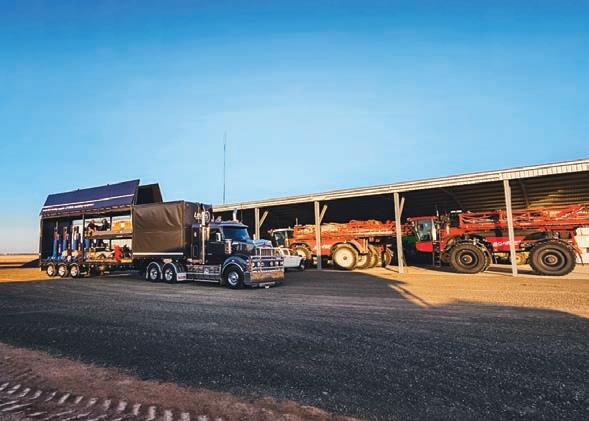
Our experienced team are shaping the future of heavy vehicle workshop equipment solutions in the country. From sales and customer service to engineering and operations, our people are driven by innovation, quality, and a passion for customer satisfaction.
Holistic workshop solutions from one national company
Levanta’s recent acquisition of Hartex Engineering has created a complete end-toend workshop solution. The firms shared the same values of integrity, quality, and putting the customer first, creating a powerful partnership: two family-owned businesses becoming one national company. We now offer the entire range of services, from design and engineering, sourcing and procurement, through to manufacturing, installation, and ongoing support – all delivered by Levanta’s in-house team of specialists.
Our commitment to ex-
cellence doesn’t end after we make the sale. Our fast response service division supplies heavy vehicle workshops across Australia and New Zealand with the parts and service they need, on time, every time. This regular expert servicing protects your business assets, helps you comply with manufacturers’ recommendations, and meets Australian Standards for three monthly safety inspections and annual servicing for vehicle hoists.
Australia’s largest range of premium workshop equipment Levanta leverage a well-established network of manufacturers and suppliers to source and supply world-class workshop equipment of the highest standard. Our solutions are tailored to the needs of each individual client, whether the project is a refurbishment of an existing workshop, fitting out a new facility, or upgrading existing workshop equipment.
Every product in the Levanta range is selected for its durability, reliability, and ability to handle the demands of Australian heavy vehicle workshops day in, day out. To ensure the highest quality, Levanta choose to source workshop solutions from European manufacturers including OMER, Josam, LiftMax, AC Hydraulic, Christ Wash Systems, and more.
Our premium quality range includes:
In-ground and mobile Roller Brake Testers to help you achieve cost savings by bringing brake testing in-house, or add an additional revenue stream to your repair business. They’re an all-in-one solution, ruggedly engineered for superior performance, pinpoint precision and longevity in heavy vehicle workshops. Prefabricated steel service pits that are tough, compliant, custom designed to your exact specifications, and manufactured from high quality Australian steel. They offer a safe,
comfortable area that helps increase your workshop’s overall efficiency whilst complying to industry standards/ guidelines.
Australia’s largest range of truck lifting solutions, including mobile column lifts, knuckle lifts, and four post truck hoists. They provide heavy-duty durability for your workshop with leading technology from European manufacturers.
A range of truck and bus washes featuring cutting-edge technology. New to the Levanta range, they can be custom tailored to suit all types of trucks, buses, coaches and specialty vehicles such as tankers or garbage trucks.
Levanta’s experts will be happy to advise you on the ideal equipment for your facility.
Alongside Australia’s largest range of premium workshop equipment, we can provide a full turnkey package for the best ROI, vehicle throughput, and staff retention. By utilising the best quality and most cost-effective products, we deliver turnkey workshop fit-outs on time and on budget. And our experienced project managers work to plan, design, and project manage your workshop project for the best possible result in your space.
This approach ensures Levanta create heavy vehicle workshops that are not only efficient and profitable, but that attract the best technicians to work with your
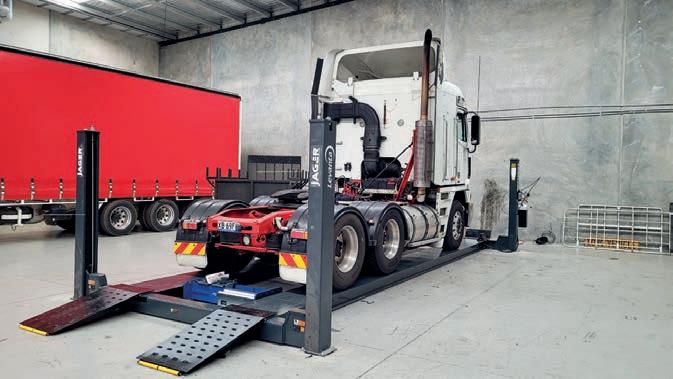
business. It’s a virtuous cycle of continuous improvement to deliver the highest quality outcomes.
How the best workshop fit-outs help attract and retain better staff
The very best vehicle technicians won’t settle for working in an untidy, dim, badly laid out work-shop. Whether you’re building a workshop for a particular fleet, or as an independent operator, standards of presentation and layout have never been higher. That means that if your workshop doesn’t measure up, you won’t be top of the list as an employer of choice. And when the best technicians aren’t drawn to working for you, standards can slip, which leads to customer dissatis faction, which means fewer bookings, leading to less rev enue, and having less money to spend on fitting out a best practice workshop to attract the best technicians.
Make sure you start your new workshop fit-out on the
right foot. Investing a little more today can help ensure the best ROI from your workshop time in the future.
Talk to Levanta for heavy vehicle workshop fit-outs and equipment
Levanta’s national network of warehouses and offices provide the very best workshop equipment from across the globe, right to your workshop – all delivered with the personalised, local attention you deserve.
To find out more visit levanta.com.au or call 1300 577 541.
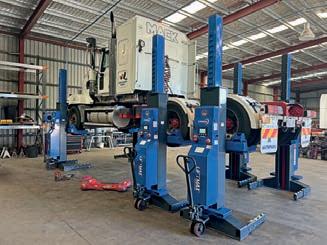
AT Armoury Group, speed doesn’t mean cutting corners – it means precision under pressure.
In just six days, Hi-Quality Heavy Haulage’s T900 Legend went from workshop project to show-ready star at the Casino Truck Show.
Hi-Quality approached Armoury with a challenge: they wanted a full rebuild – a truck that would stand out without losing its unique character. Earlier this year, Armoury completed builds for Hi-Quality, including K200s, a T909, and a K220, making this project another opportunity to combine the two brands’ shared focus on preci sion, reliability, and speed.
As a company trusted to move some of the biggest and heaviest equipment across Australia, Hi-Quality relies on every truck in their fleet to perform. They chose Armoury for this build because both brands have a shared vision.
With the clock ticking, Armoury’s team got straight to work. Every part was carefully measured, and designs were drawn to ensure a perfect fit and finish.
The build was extensive: Legend Chrome Super Singles and Drives, tank skirts, steer flares, sunvisor, tank wraps and straps, alloy deck plates, mudflap brackets, hinge cov
light bar and drop section, elephant ears, bunk wings, mirrorbacks, and more – with each piece designed to fit perfectly and look sharp, balancing form with function. With the deadline looming, the team went above and beyond. On Thursday night, they stayed back to finish the last fittings. By the time the T900 Legend rolled out of the workshop and into the yard, its stainless and lighting brought the yard to life. The driver had flown into Sydney, got a lift straight to Armoury, and headed to the show – a tight schedule made possible by the team’s focus, fast turnaround, and the fact that many parts were already on
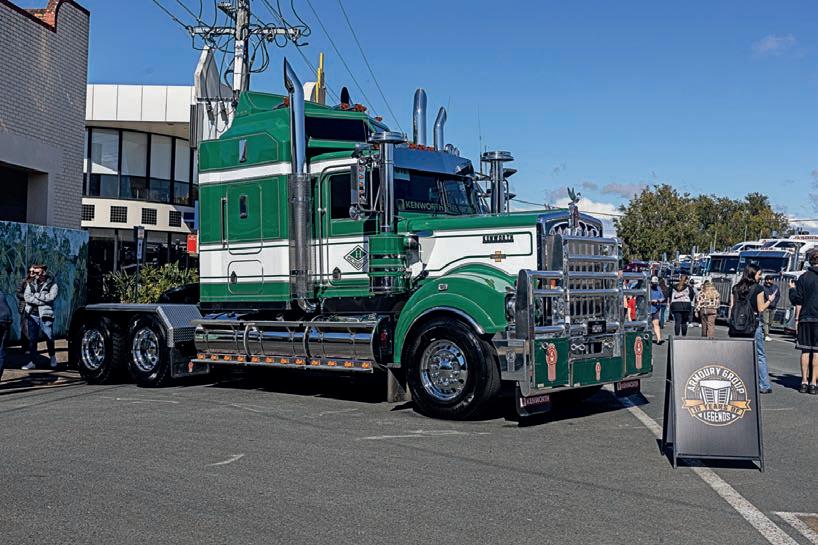
the shelf and ready to go. Working with Hi-Quality, known for their professionalism, commitment to excellence, and clear communication, made this project run smoothly – and it was an enjoyable challenge for the team to achieve.
Mitchell, General Manager at Hi-Quality, shared his thoughts on the build. “We trusted Armoury with a short timeframe and you guys shot the lights out on that one! The timeline was impossible, but you made it happen. We use Armoury for all our new truck fit-outs, but this was a refresh – unchartered territo ry. As usual, Armoury did not disappoint. Such a good com pany to deal with,” he said. His words highlight what makes Armoury stand out. It’s not just about parts – it’s about showing up, listening, and finding solutions. Even under pressure, the team stayed positive, worked quick ly, and made sure every detail was right.
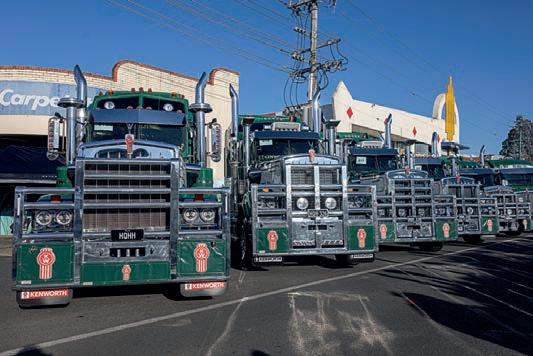
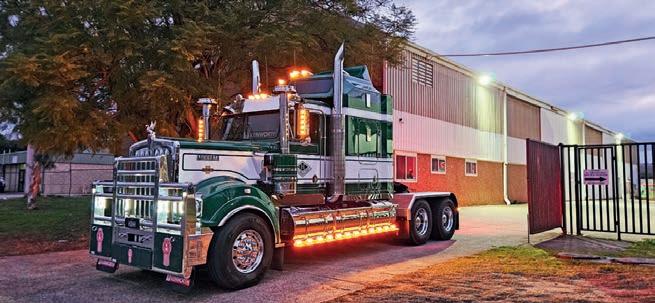
They combined traditional looks with modern engineering, balancing quality and style in every piece. From measurement to fit-out, everything was done with purpose, designed to elevate the truck and the driver’s experience.
For Hi-Quality Heavy Haulage, the result was more
FRUSTRATED with juggling disconnected systems, Tasman Logistics partnered with WHG Technologies to deliver a robust, future-ready, fully customised on-road technology strategy, a tailored solution that continues to transform and enhance their fleet operations.
Founded by Executive Director Craig Morris in 2003, Tasman Logistics provides a wide range of transport and warehousing services, with sites across Victoria, New South Wales, Queensland, Tasmania, and South Australia. The sizeable fleet includes around 300 company-owned vehicles, from rigids through to B-triples, along with about 500 sub-contractors pulling their trailers.
“Tasman Logistics moves all kinds of freight. Primarily, it’s a lot of port logistics, but we also do refrigerated and linehaul work, as well as contract logistics,” explained Chief Technology Officer David Simmonds. “We generally run DAF and Kenworth prime movers plus Iveco and Fuso rigids. They travel all over, from Queensland to Tasmania, up and down the east coast, and into regional territories.”
David says WHG has proven to be the ideal technology partner. “The relationship was established in 2024 based on their capabilities. There were certain things I was looking
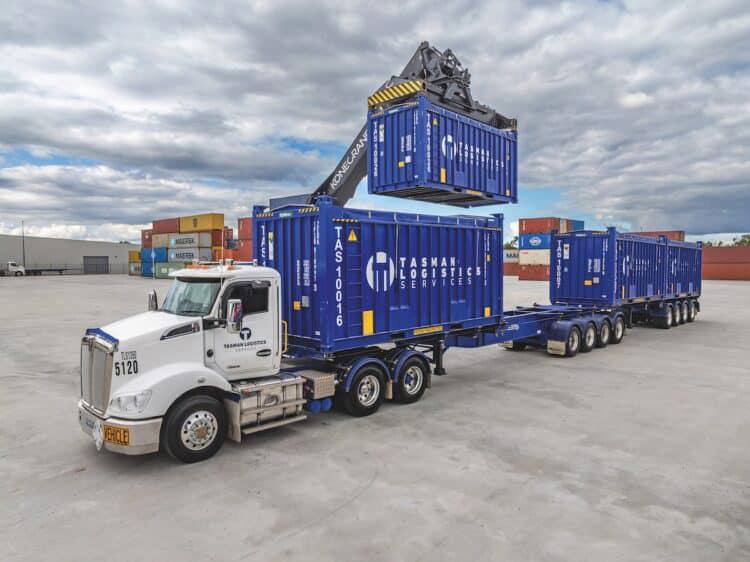
for that didn’t previously exist, so we wanted the ability to customise the software and integrate it with other business systems.”
Tasman Logistics has already implemented WHG’s FleetMAX telematics with CANBUS ECU diagnostic tools, FleetWEIGH Smart OBM, and FleetCAM AI video telematics to support safety and combat fatigue. The plan is to expand the WHG tech stack into more areas of the business. “We’ve also been exploring WHG’s smart wearable technology FleetPREDICT, using a Garmin device worn by the driver to enable predictive and preventative fatigue intervention. We’re also looking to fit IoT technology into our warehouses in the
future, particularly in cold chain,” added David.
As part of its safety and compliance focus, Tasman Logistics has already reached a key milestone, FleetCAM is now fitted in around 30 per cent of the company’s trucks. In parallel, WHG’s technology is rolling out across the entire fleet, even in vehicles equipped with other telematics systems, as part of a program to consolidate and upgrade. All new fleet acquisitions are fitted with WHG solutions from day one, and when vehicles are sold, the equipment is removed and reinstalled into other trucks. This approach streamlines technology across the fleet and delivers exceptional return on investment, with equipment seeing a valuable second – and
even third – life in service.
One of the biggest challenges for Tasman Logistics was how to overcome managing assets through multiple disconnected systems rather than a single, consolidated platform. “That’s difficult because we have different contracts with different companies,” said David. “We’ve grown to where we are today through acquisitions, so we’ve inherited trucks already fitted with various telematics solutions – and that brings a lot of complexities and challenges.” By working with WHG, Tasman Logistics is consolidating these systems, replacing them or integrating them into one platform, giving the business a single source of truth for fleet visibility, compliance, and performance.
Tasman Logistics also benefits from its strong relationship with truck and trailer rental company TR Group, which uses WHG products, enabling seamless integration.
“WHG provides live visibility of our own assets and those we’re using through TR Group,” said David.
Since implementing FleetCAM, David has been impressed. “The WHG iLink software is incredible. I haven’t seen anything on the same level in terms of what it can do and what it reports, and the fact that it can live stream and self manage.
iPad app or your phone to see weight readings. If you were outside the truck, you had no visibility.
Within a couple of months of explaining how beneficial external visibility would be, WHG delivered a wireless, Bluetooth-enabled, Intelligent TrailerDISPLAY screen mounted to the trailer. We’ve already fitted 12 trailers with these, and because it’s wireless and digital, it’s a definite step forward compared to competitors.”
W HG and FleetWEIGH are dual certified with Transport Certification Australia (TCA) under Telematics Monitoring Application (TMA) and Smart On-Board Mass. “That’s been a big thing for us. Lots of companies can do GPS and tracking, but WHG is one of the only ones that bring together TCA accreditation, mass management capabilities, GPS, and fatigue solutions all in one,” said David.
“Top of the list for us is compliance, and with WHG you have the assurance that you’re getting the right data to the right places. The data is always accurate in terms of weight and GPS because WHG doesn’t cut corners. The tech is high quality, and their installation service is excellent. They can get things done quickly – they even had someone fly up to Brisbane from Melbourne just
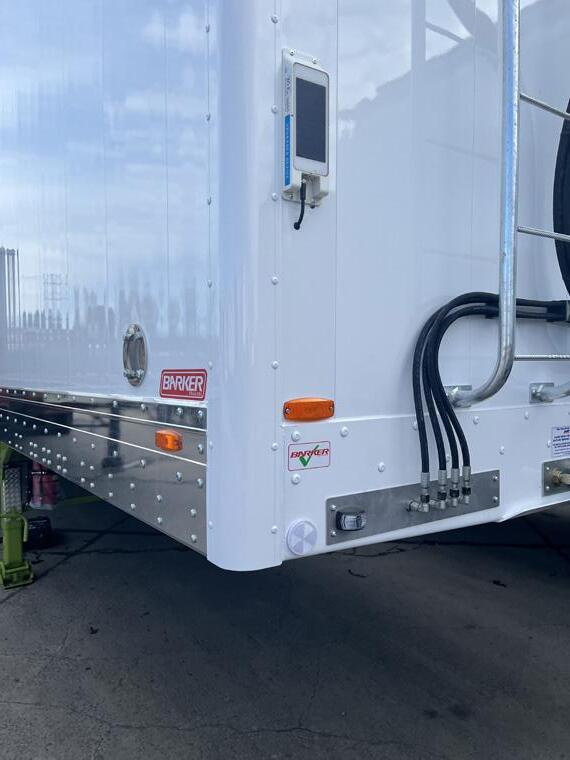
before Christmas to do 40 installs, working right up until Christmas Eve.
“WHG is willing, able, and very keen to work with us to build our company strategy, which is rare.
“Both companies are equally proud of where Tasman Logistics is heading with our technology strategy, and WHG has delivered on everything we’ve asked for. We have big ambitions, and to support our growth, we need to partner with the best.”
To learn more about Tasman Logistics, visit taslog.com. au. For more information on WHG Technologies, visit whg-telematics.com.
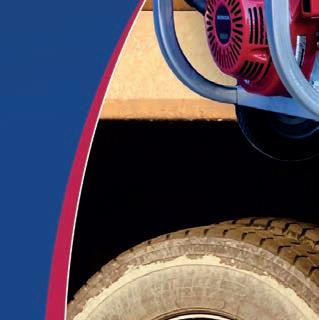



“WHG tackles development very aggressively and they tailor to the customer. WHG is a very versatile, agile company – there’s not much they’ll say no to.”
WHG’s customisation process has also integrated our various existing mass management products. “If part of our fleet already had other weigh systems, we didn’t want to pull them out, so WHG’s ability to quickly integrate into those systems was key. Their ability to innovate also stands out – for example, when using FleetWEIGH Smart OBM axle sensors, you used to have to be in the cab and look at the
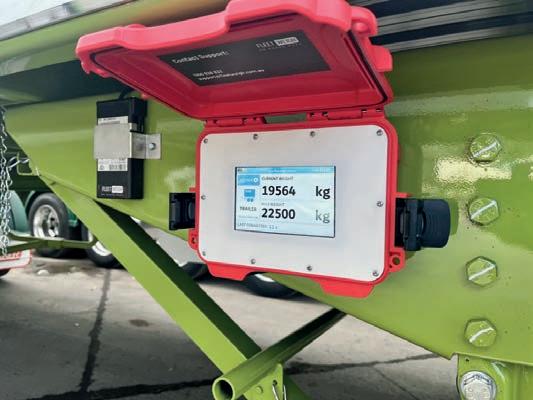



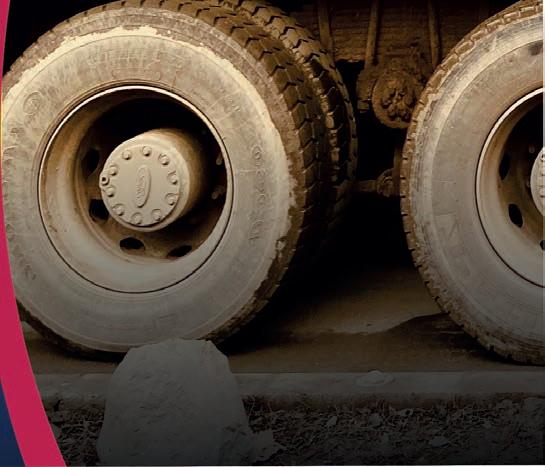
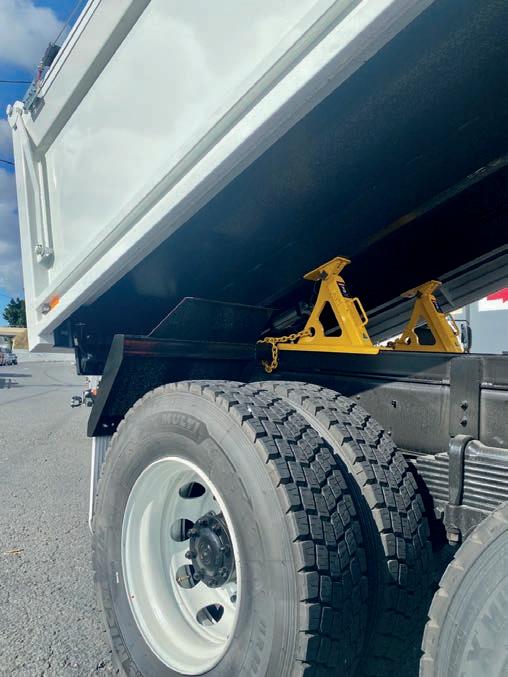



DID you know that the smartest way to fix a blocked DPF isn’t always to replace it?
Since moving into a larger warehouse in 2022, the team at Cost Effective Maintenance has seen a surge in DPF-related enquiries.
More and more fleet operators are searching for lowcost, low-downtime solutions to avoid the hassle and expense of having to replace or manually clean diesel particulate filters (DPFs).
Avoid replacing DPF filters
As Jimmy Dever, General Manager at Cost Effective Maintenance, explained:
“These days, most diesel engines with emission control systems are facing increased downtime and higher running costs. Drivers and businesses are losing productivity because of issues with DPF filters.”
Jimmy continued, “These filters often regenerate unnecessarily or take longer to do so, which increases fuel consumption.
“Eventually, they can become blocked, requiring manual cleaning – or worse, full replacement.”
While these sorts of outof-pocket costs can be huge; they’re also easily avoidable with Cost Effective Maintenance’s engine decarbonizing additive.
“We’ve been supplying this solution to large mining oper-
IT CUTS DOWN CARBON AND SOOT BUILD-UP IN DPFS, MEANING FILTERS LAST LONGER – AND OFTEN DON’T NEED REPLACING AT ALL.”
JIMMY DEVER
ations and heavy fuel users for years,” Jimmy continued.
“It cuts down carbon and soot build-up in DPFs, meaning filters last longer – and often don’t need replacing at all.
“For many of our customers, it’s been a complete game changer.”
FTC Decarbonizer is a combustion catalyst fuel additive that promotes a cleaner, more complete burn. It dramatically reduces soot before it ever reaches your DPF.
Are you already dealing with a clogged filter? FTC Decarbonizer goes one step further, actively burning away existing carbon deposits as you drive.
FTC Decarbonizer is added directly to the vehicle or stored diesel supply. Its concentrated dose ratio makes it easy to handle without any complicated refuelling procedures.
Problem vehicles can be dosed independently or bulk fuel storage units can be treated.

Why DPFs get blocked in the first place DPFs are designed to regenerate (burn off soot) during long highway drives when exhaust temperatures are high.
But in stop-start traffic, short trips, or low-load conditions, this regeneration doesn’t happen. The result? A soot-choked filter, dashboard
warning lights, and an expensive repair.
FTC Decarbonizer helps prevent this entire scenario.
Stop the problem at the source
FTC Decarbonizer tackles the real issue: carbon and soot buildup. And it does this before it ruins your DPF.
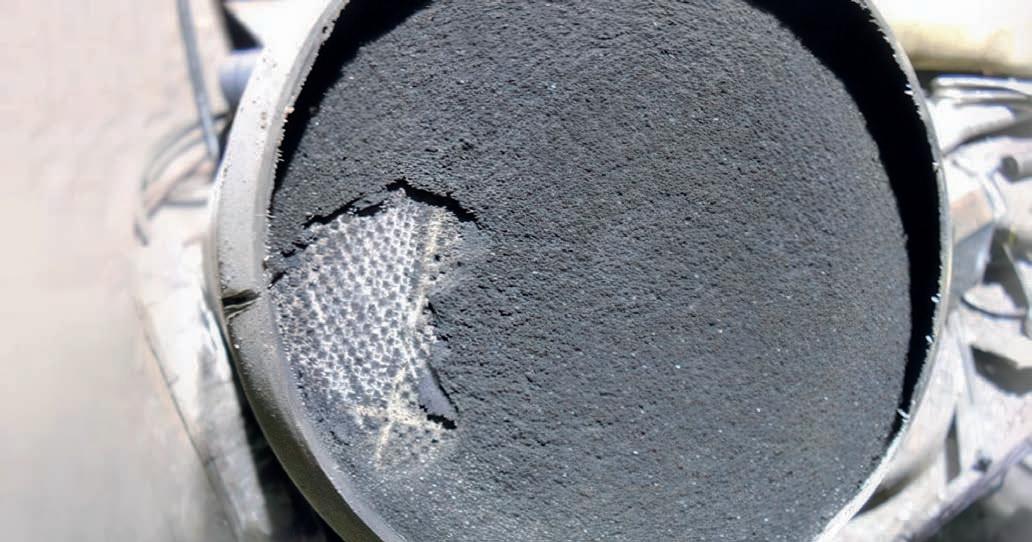
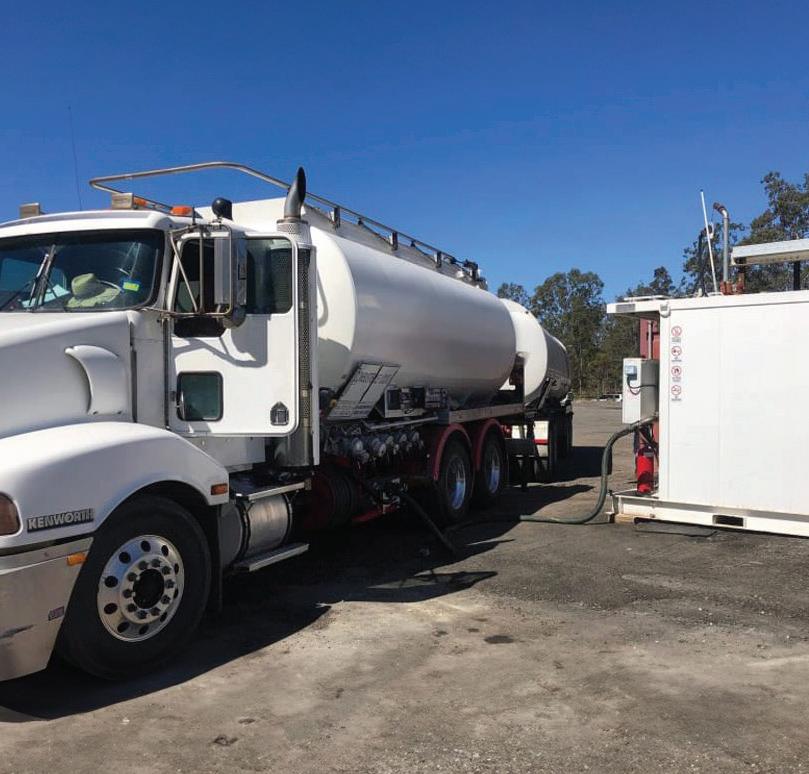
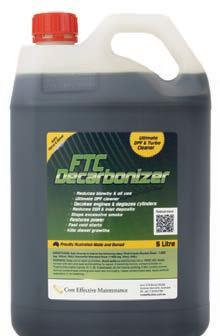

Whether you’re managing a fleet or driving a single diesel vehicle, it’s a smarter, more cost-effective solution to keep your engine clean and running efficiently.
Tested, proven, compliant
FTC Decarbonizer has been independently tested by the
University of Western Australia. It has had government-approved DT80 emissions testing, with proven low emission results. It is also fully compliant with Australian fuel standards.
For more information, visit costeffective.com.au/product/ftc-decarbonizer.

WITH a fleet of over 100 trucks – including 11 new S-Way AT 460 prime movers and three S-Way 6x2 AT 360 rigids – and over 400 trailers, MKD Transcorp has come a long way since beginning in 1999 as a one truck operation with owner, Igor Cvetkoski, at the wheel.
Jump forward 25 years, and still under the direction of Igor and brother Zak, the company now employs around 215 staff including drivers, and runs its fleet on double shifts, seven days per week providing a range of interstate ambient freight services along the country’s eastern seaboard as well as to Adelaide. Having the fleet predominantly equipped with refrigerated trailers also allows the company to backload with perishables, providing even greater productivity.
Additionally, MKD undertakes a high volume of container work, transporting from wharf to customer and

wharf to distribution centres.
To a lesser extent, the company is also involved in local distribution around the greater Sydney area.
MKD Transcorp General Manager, Noel Ryles, makes it clear that the company’s

success comes down to a simple formula.
“Our company motto is ‘Committed to Reliability’ –we live and breathe it, and this focus on continually offering a highly reliable service to customers across all business operations, has always held us in good stead,” Noel said.
“To a large degree, we have grown with our customers and steadily gained new contracts through referrals and recommendations. Then once you have a great reputation, you begin getting asked to tender for contracts and it builds from there.”
The new Iveco S-Ways began their rollout into MKD’s fleet in September last year and have slotted in seamlessly, with Noel saying the trucks were acquired to meet the company’s growing needs in Melbourne.
“We won a contract in Mel-
bourne so needed to expand our fleet,” Noel explained.
“We’d been using another European brand predominantly, but were starting to have some friction points, so decided to look elsewhere. We spoke with all the major manufacturers and decided that the Iveco S-Way was a strong fit for what we needed.”
As well as choosing the trucks based on driveline and payload, Noel, who has worked his entire career in the transport industry including as a driver before transitioning into management, was in a great position to evaluate the options.
“Reliability is critical, as is emission performance, safety and support,” he said.
“Iveco went to a lot of trouble to win our business; they’ve provided our drivers with training and all the support we’ve asked for. So far, the re-
lationship is working well and feedback from the drivers has been very positive.”
The S-Way AT 460 prime movers have 60,000kg GCM and feature 11.1 litre, Euro 6 (Step E) engines that produce 460hp and 2150Nm of torque, while the AT 360 rigids are rated at 27,600kg and are equipped with 8.7 litre, Euro 6 (Step E) engines outputting 360hp and 1650Nm. In both cases, the engines are coupled to IVECO’s 12-Speed Hi-Tronix A MT.
Standard safety equipment includes Advanced Emergency Braking, Brake Assistance System, Adaptive Cruise Control, Lane Departure Warning System, Electronic Stability Program with ABS (disc brakes all round) and ASR (Anti-Slip Regulation), Hill Holder and Driver Style Evaluation plus Driver Attention Support (DSE + DAS).
A nother attractive feature for MKD Transcorp was
‘Iveco On’ telematics, which is a standard feature on the S-Way range. “Full telematics is definitely something we must have on all our trucks, along with cameras and driver fatigue systems,” Noel said.
“With customers entrusting their freight to us, it’s important we have great visibility into the location of the trucks and this increases our accountability to our clients.” Noel said that with over six months of service, the Iveco S-Ways were living up to expectations. “The S-Ways are a great product – we’re happy with them.”
For added convenience, MKD Transcorp’s new S-Ways are covered by a 5-year/600,000 km ‘Easy Road’ maintenance package, providing improved budgetary control of maintenance costs. Other benefits of the program include a pickup and delivery service for the trucks.
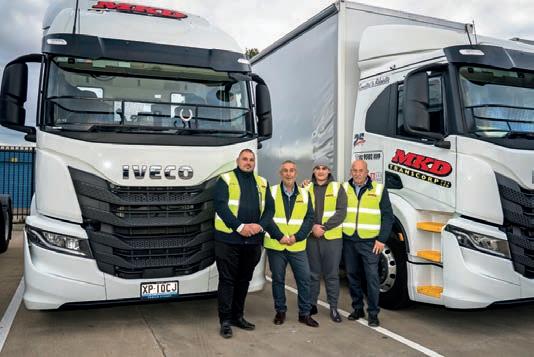
AT CIMC Vehicle Australia
we understand that for businesses and owner-drivers, every dollar counts and every job matters. Trucks and trailers aren’t just tools of the trade; they are the backbone of the business.
That’s why when it comes to choosing a skeletal trailer, reliability, low maintenance, and good value for money are at the top of the list. CIMC’s skeletal trailers are built with exactly those priorities in mind.
Many operators spend more time on the road than they do at home, so the equipment must hold up every day of the year. CIMC’s skeletal trailers have a proven design that’s been refined to suit our roads and loading conditions. Built tough enough for anything thrown at them, handling everything from port runs to long-haul routes with ease.
Every CIMC trailer comes with a three-year structural warranty, a solid promise that we stand behind our workmanship. It’s not just about selling a trailer to us; it’s about making sure you’ve got a reliable supplier for the long haul with the addition of support along the way. We recognise that you can’t afford to wait months for equipment. That’s why we keep stock on hand, ready for quick delivery. If your new

contract starts next week, or if you’ve got a truck sitting idle because you’re short a trailer, CIMC can get you on the move.
Our range of skel models suit every kind of container work. The 40’ Standard Skel is a dependable all-rounder for 20’ and 40’ containers.
The 40’ Retractable Skel gives you extra flexibility with its five different lock lengths and dock loading capability. The 40’ Drop Deck Skel gives extra clearance for tall freight and is well suited for ISO tanks with its airbag lift.
The Ultra Low-Profile Skeletal model offers even greater compatibility, able to carry containers from 20’ up to 48’, complete with an extendable bumper for those 45’ and 48’ containers. For those running bigger setups, we have A-double configurations, and for long runs out bush, our road train trailers are built to go the distance.
All CIMC trailers come with features you can rely on: JOST kingpins and landing legs, heavy-duty side loader pads, road train provision, twist lock configurations, dangerous
good wiring, LED ADR-approved lighting, WABCO EBS brakes, and high-tensile steel construction. CIMC also offers you the choice of steel or alloy wheels, toolbox, water tank and colour options.
CIMC Vehicle Australia works closely with CIMC factories around the globe to ensure its customers benefit from the latest innovations in trailer design and manufacturing. This global collaboration means we can incorporate proven engineering advancements into trailers built specifically for Australia.
This means we’ve made sure our trailers are lightweight without compromising strength, so you can make the most out of every trip. They’re also designed to keep maintenance costs down and hold their value when the time comes to sell. For an owner-driver or small fleet, that means more money in your pocket over the life of the trailer.
CIMC takes pride in knowing that our trailers are working hard every day for Australian businesses. They are trusted by large transport companies, regional carriers, and independent operators alike, all of whom demand equipment that can handle high payloads, long distances, and tough conditions without compromise.
Perth, plus service partners across the country, there’s always assistance nearby. Whether you need parts, advice or repairs, CIMC Vehicle Australia gets you back on the road as quickly as possible. We know transport is more than just moving freight, it’s about meeting deadlines, and keeping your customers happy. At CIMC, the customer is always number one too. We listen, we adapt, and we deliver. Our reputation as the number one semi-trailer supplier in the world didn’t come by chance, it was earned through years of building relationships and delivering on our promises. When you invest in a CIMC trailer, you’re not just buying a product; you’re gaining a partner committed to your success.
ontact us now to discuss your trailer needs on 1300
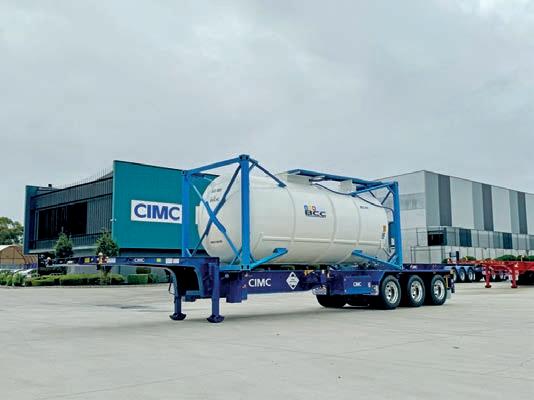
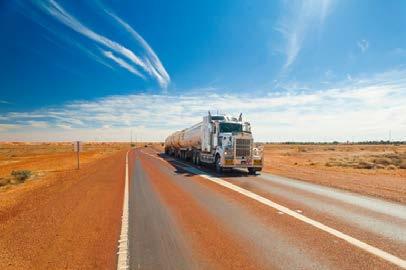
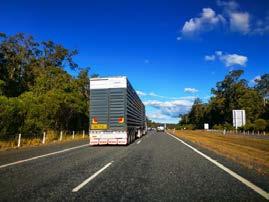
AN industrial electrician by day, Mark Tuckerman says he’d always had a penchant for the big rigs. “I’ve liked trucks since I was a kid so one day I bit the bullet and got myself one – a 1994 Mack CLR V8,” he said.
“I bought a truck just to do up and go to truck shows and things like that but then I came across Need For Feed and I’ve been using the Mack exclusively for charity runs. I’ve been on every hay run since I joined Need For Feed nearly six years ago.”
Based in Bacchus Marsh,



the length and breadth of the country to deliver feed to farmers battling through drought, fires and floods.
“The truck was in fair condition when I got it, so it didn’t need too much work. It’s not a bad looking truck, it’s just the up-keep on it. I was an idiot though, I thought I’d spend a little bit on it and that would be it,” laughed Mark.
“With the hay runs, I’m clocking up the kilometres, so being an older truck, there’s a lot of maintenance too. I reckon I’ve done about 180,000km since I got it – and that’s just for the hay runs. It’s a great
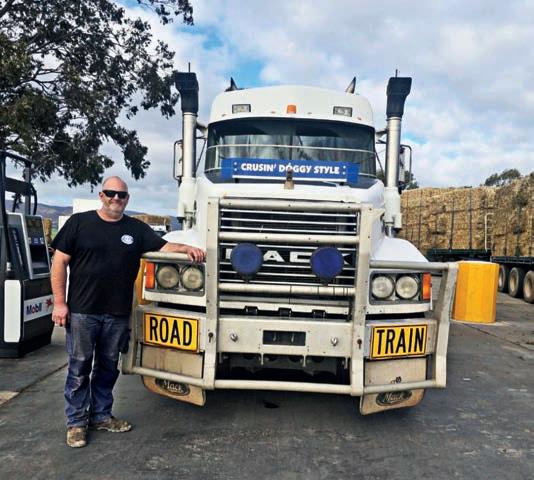
opportunity to get away with like-minded people, have a great time and help the community.”
Mark actually got his truck licence back in 1989. “I got it because my father and brother were in the fire brigade so I was going to do that too – but never got around to it.”
However it was only recently – just before the recent Western Australia to South Australia hay run, that involved around 90 trucks and 6401 bales of hay, that Mark decided to upgrade to his MC. This hay run was organised together with Farmers Across Borders.
“I thought this was a good opportunity to go for my MC, so I got it done.”
Mark already has his own 45ft drop deck trailer, so he hired a second trailer and a dolly to make up the road train.
“This is the longest hay run I’ve done. I was on the road for about 10 days. It was my first time with the two trailers, so I drove over empty to get a feel for it. A lot of people stack their trailers up but I chose not to.”
Mark travelled west to Bindi Bindi, Western Australia (about an hour and a half
north of Perth) to load up with hay. From there he made his way back across to South Australia where he delivered hay to two dairy farms – one near Mannum and one south of Murray Bridge.
“The farmers I visited were so grateful. They both had been buying hay but were spending so much money on it. It’s like a desert out there in some places – it was like the Sahara, it’s just all parched land. They’re starting to see some pops of green now but the cattle keep eating it out of the ground,” revealed Mark.
“It’s around $30,000 for a B-double of hay, so it’s a huge cost to these farmers. Visiting some of these farms does get a bit overwhelming sometimes. I’ve had farmers up north who battled through floods break down on my shoulder. You hear stories of what they’ve been through and it’s just heartbreaking.
“Mental awareness is a huge thing and we are there to help where possible.
“There was one farmer I spoke to who was having to buy the cheapest fodder he could get and then adding supplements to make it palatable for his livestock.
“It was great to be part of this

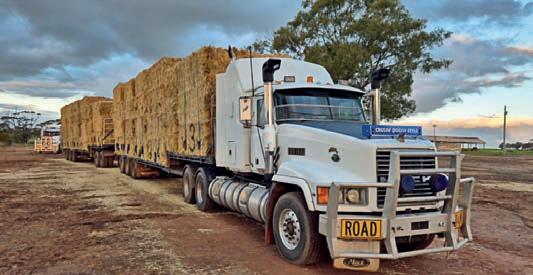
run and work in with Farmers
Across Borders – they did such a great job of organising everything over west to help make this run happen.”
With the South Australian run completed, Need For Feed has turned its attention to the upcoming Father’s Day hay run into Victoria’s south-west, which Mark plans to take part in too.
“It’s all very, very dry in that part of Victoria edging into South Australia. We did a hay run there the weekend before this recent South Australia one. There were so many requests for assistance so my

load was split between two smaller dairies around Camperdown,” said Mark.
“As there is no government funding for drought in Victoria, unlike in South Australia and New South Wales, we rely heavily on fodder donations, cash donations, as well as fundraising. Hopefully the Victorian Government will come good and assist.
“It’s getting harder to source the fodder locally. What has to be purchased is mostly from up around the northern part of New South Wales so fuel adds a lot to the cost of getting it to the farms.”
If you want to be featured in an upcoming issue of Big Rigs, scan the QR code and answer a few simple questions.

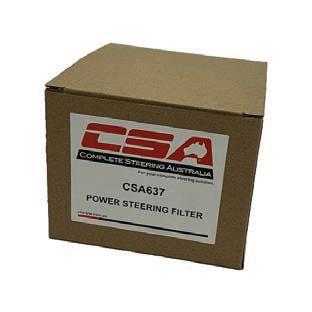
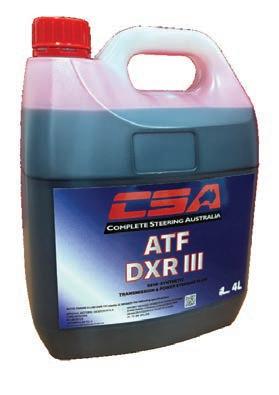
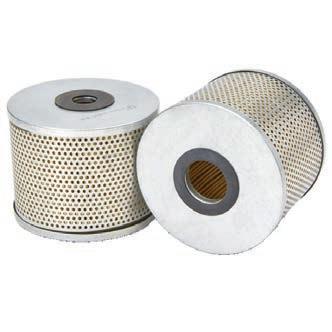




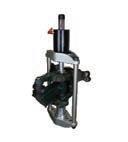






Our contributor from the south got to reminisce about the “good old days” as he met with numerous truckies during a recent Adelaide to Melbourne road trip.
BY JONATHAN WALLIS
HEAD back to the ‘Big Island’ from Tasmania, offered an opportunity to meet with many old friends. Sadly some were in hospitals and in bad health – one of the disadvantages of ageing. But happily many were in good health.
During my recent trip from Adelaide to Melbourne, it was again a great pleasure catching up with many friends from our old days on the road, stopping for a chat along the way and discussing current developments in today’s road freight industry.
It was somehow comforting to find that despite all the doom and gloom, things seem much the same as in those good old days around 1986 when I owned my first truck. It was also good to still see so many familiar names on trucks, such as Booths, Lindsay Brothers, Collins, K&S, SWF, Nuriootpa Traders etc – but some of the big names of yesterday were sadly absent. There has been ever-increasing pressure put on drivers to meet deadlines and to comply
with the mounting burden of regulations and the demands of bureaucracy. Yet despite all of this, today’s drivers remain, for the most part, cheerful, obliging, hardworking and amiable. It was great getting out on the road again. Here’s a selection of brief but much appreciated interviews from our road trip.
Stopping over at the BP Roadhouse at Cobden in south western Victoria, on our way from Geelong to Adelaide, we caught up with Noel Locker from Cooma in New South Wales who was taking a load of pellets from Cobden to Tarcutta. He was driving a Wal Fitzgerald Transport’s eye-catching Kenworth 50th Anniversary Legend SAR, with a 500 Cummins up front, and told us he has been driving Wal for four and a half years now and it’s all been good.
“He certainly looks after us and his gear. I picked this one up new in September last year. It’s a great truck, comfortable, loads of power and
ideal for the work we do. All in all, I’m pretty happy now, find it a great job and what a way to see the countryside in all the seasons as well!” Noel said.
Also at the BP Roadhouse at Cobden, we saw our long-time old friend Tommy Buckle from Colac, who was driving a Moreland’s Logging 2022 Kenworth T610, powered by a 600hp Cummins X15, with an 18 speed gearbox and road train rated.
Tommy was towing a B-double fully loaded with plantation timber. He was on his way back to Colac from Nangwarry Station in South Australia, which he told us explained why the truck was so dirty.
“We run from anywhere in the south east/Mount Gambier area back to Colac. That’s around a 950-kilometre round trip. I’ve been driving for Moreland’s now for coming up to four years and frankly I am still loving it. They are a top outfit and I am

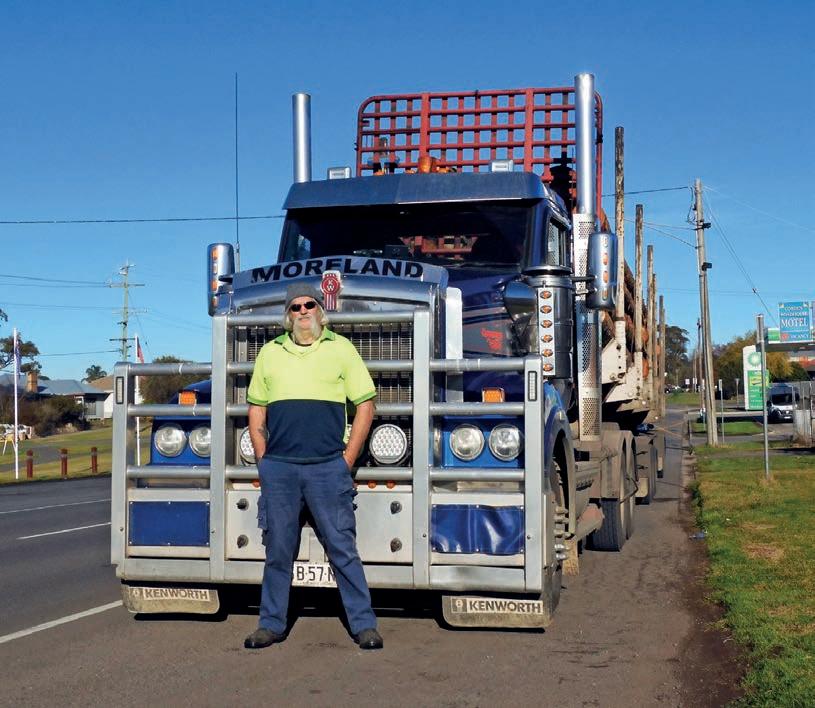
still living the dream,” he said. However, Tommy also added that he had a few gripes, “I am getting sick of the never-ending roadworks and bad roads, and also the endless mobile homes and caravans out there nowadays, especially those inconsiderate ones who hog the roads. Also the lack of decent roadhouses that serve good home cooked tucker and look after you
“In fact I think I really miss the old days, and those sometimes larger than life characters that you used to encounter on the road. And sometimes I miss my old ‘Volmack’ too.”
A big shout out also to our old mate Mick Saltic from Queensland, who is fighting some health issues lately, and will soon be writing a travel guide on hospitals he has recently visited.
Back into the groove
Fuelling up at Robe in South Australia, we met Gordon Hodsen from Strathalbyn, where he recently built and moved into in January.
Contracting 2021 540hp
Euro 5 Volvo on his way from Wattle Range to Cook Plains for a load of gypsum and was towing a quad dog tipper.
He told Big Rigs he is loving the job and the outfit. He has been on the road for about 15 years all up, and recently returned after a six-week break.
Gordon’s past driving roles include driving coal trains, and before that road trains and B-doubles. “It’s been sort of rubber to steel and now back to rubber and it feels good – especially on a beautiful day like this, I’m glad to be back into it!” he said.
What great memories of market runs to Melbourne in Steve’s Scania, early articles about his battles with Navajo Transport as well as many a convivial cuppa along the way all came flooding back with our recent stopover at Murray Bridge.
It was here that we caught up with Steve and Pauline
as usual, general and refrigerated, for their highly efficient operation that runs mainly between Murray Bridge and Adelaide.
Steve, who recently had to “retire” from driving owing to surgery, told us: “We have a fleet of 10 trucks all up now including three semis on the run at the moment, with two K104 Kenworths, a Western Star and a Mack Suoerliner, including Chris Matthews’s (Steve’s son in law’s truck) pictured here, and a 2012 600hp V-Mack Superliner.
“We are happy with our depot, where we have storage for 1200 pallets, which we are about to expand, conveniently located as we are, and it all works well. We have a good crew here and after 17 years the operation runs smoothly and happily.”
With over 35 years of practical work on the road, Steve and Pauline have a mass of background and experience in a tough industry, and are certainly reaping the rewards of a wealth of hard work now. They also both still make a

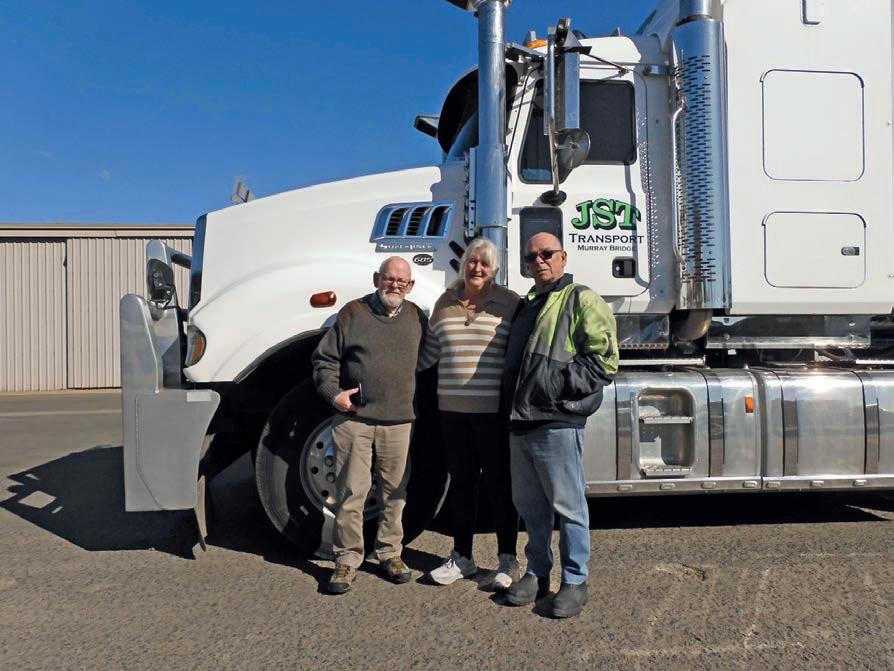

LIVESTOCK driver Garry Core, 59, had stopped at the Caltex Roadhouse at Calcium when Big Rigs saw him.
From Spring Park Station, which is near Greenvale, Garry was driving a Western Star triple.
His company is SP Grazing. The family transports its own cattle and those from
other properties around the region. “I have delivered 90 bullocks from Mt Fullstop Station to Reid River Export Yard at an average of 666kg live weight. They will then be exported from Townsville Port,” Garry said. Reid River is a small hamlet about 11km from Calcium.
It used to have a railway station with refreshment rooms but is now mostly deserted.
One of Garry’s favourite roadhouses is the Gold City Roadhouse on the outskirts of Charters Towers. “They serve good food and have lots of parking,” he said.
His hobbies include the sport of campdraft, a unique
sport that involves a horse and rider working cattle. It’s also enjoyed by many truckies and people employed in a ssociated industries.
Garry’s NRL team is the North Queensland Cowboys – however they are not having a good season and won’t be participating in the finals series.


SMALL fleet owner Matt Fraser, 38, had blown three tyres on a trailer carrying a huge 60 tonne crusher when Big Rigs saw him pull into the rest area beside the Flinders Highway at Mingela – about 43km from Charters Towers as you head towards the coast.
Matt owns Townsville based company Wilco Logis tics and was driving a Mack Superliner.

Wilco Logistics specialises in break wall construction, mechanical dredging, quarry development, crushing/ screening, bulk haulage, plant and machinery hire.
“The crusher was picked up at Hughenden and I am heading to Townsville with it. But I am waiting here at the rest area for the tyres to come,” he said. As Matt waited, he was working hard on doing the preparation on the wheels
with the damaged tyres.
Matt has been a driver for 20 years and his company has four trucks.
Outside work Matt enjoys fishing in the abundant wa ters around the Great Barrier eef.
“I have managed to catch some nice red emperor which are good eating,” he said.
Matt added that the Flinders Highway near Hughenden needed atten tion.
W hilst this rest area proved good to stop at with his tyre problem, Matt said more are needed in general with facilities for drivers.
City Roadhouse at Charters
at around
A driver for 11 years, Edward is a son of one of the brothers who own the company, Brian Smith. He was driving a enworth triple road train and had picked up 216 heifers from Dimbulah and delivered them to the Charters Towers sale yards.
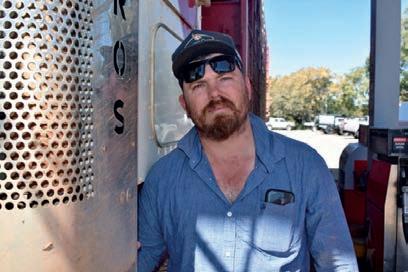
Edward says he’d like to see another rest area built on the Townsville to Charters Towers stretch of the western Flinders Highway.
“There is a decent rest area at Mingela but we really do need one more with shaded tables and seats and toilets,” he said.
The 130km section of the Flinders is busy with heavy vehicles including doubles, triples and quads. The day I drove the section, there were hundreds travelling on it. Outside work Edwards loves speedway and has a BF Falcon. “I go to meets at Herberton, Cairns and Mareeba,” he sa id.
Edward rates the Belyando Highway between Charters Towers and Clermont as difficult to get along. “It is very rough in places.”
As for his dad Brian, Edward told me where he was as we spoke. “Dad is down at Brown and Hurley in Townsville,” he said.




TRUCKIES around north Queensland have been on high alert when stopping at rest areas following an armed robbery at one in late July.
Police charged three people following the robbery which occurred around 6.35pm after the trio approached a white Hyundai Accent at a rest stop along the Bruce Highway.
A 27-year-old Ayr woman, a 26-year-old Rasmussen man and a 17-year-old Rasmussen boy have allegedly then demanded the driver of the Hyundai hand over his keys, wallet and phone, before one of them reportedly threatened the driver with a firearm and demanded he exit the vehicle.
The driver, an 18-year-old German tourist, complied and reported the incident to police.
The vehicle was located entering Townsville and following a coordinated response involving Tactical Crime Squad officers, Dog Squad and Polair, the three offenders were arrested.
Initially people were confused as to which rest area the robbery occurred at.
Some thought it may have been at one of two rest areas

beside the highway between Ingham and Cardwell.
Others felt it was at Bilyana Rest Area located 21km north of Cardwell and 22km south of Tully.
After numerous contacts from drivers wanting to know which rest area this had taken place at, Spy made
enquiries. Some of the truckies were from interstate as far away as WA and Tasmania and had seen media reports about the incident.
I made several calls to truck drivers from the area and the old road transport bush telegraph came up trumps.
I soon gleaned it happened
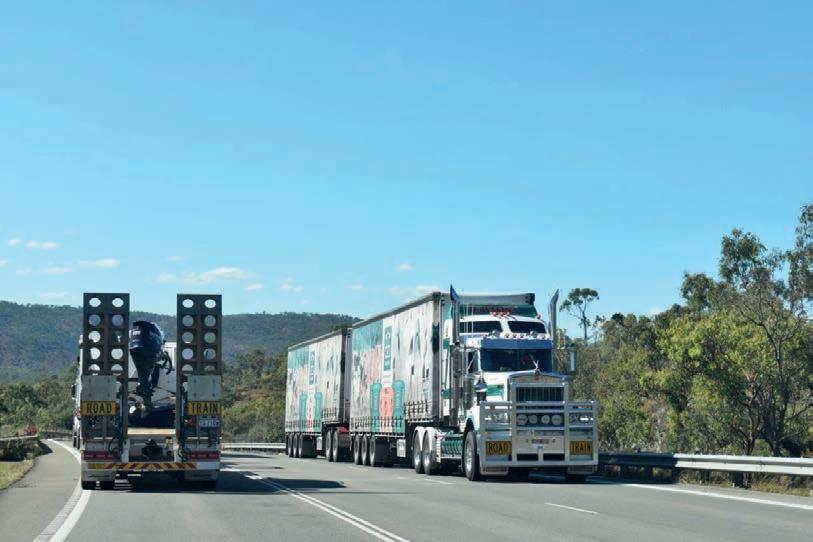
at the rest area at the southern entrance to Cardwell k nown as Colleen McLaughlin Park.
It is right beside the ocean and has toilets, shaded seats and tables, a regular pie cart and coffee van there.
Few truckies can actually stop there as it has limited
parking, especially for heavy vehicles.
However, some drivers do park up the road and walk back there.
A middle-aged long-time truckie is thanking his annual compulsory medical check which is required to maintain his licence – as it resulted in a diagnosis of a prostate abnormality.
W hen he received the results of a prostate-specific antigen (PSA) from his blood test as part of the medical, this lad got a call from his doctor to advise his prostate needed surgery.
PSA is a protein found in the blood in the prostate. A PSA screening test is the most common way to detect prostate cancer.
If your PSA levels are elevated, it could mean you have prostate cancer – but not always.
The warning signs and symptoms of prostate cancer can include: Frequent urination especially at night; difficulty starting or stopping urination; weak or interrupted urine flow, blood in urine or semen; painful ejaculation; unexplained weight loss or bone pain if


the cancer has spread. If you experience any of these symptoms, it is important to consult a healthcare professional for evaluation.
Four young tourists who pulled up at a rest area with good toilets, have angered several truck drivers who were in the vicinity.
These overseas travellers alighted from one of those hire vans and all started to piddle on the ground despite the fact that two nearby public toilets were vacant.
What also gave the drivers angst, was that they sprayed their urine on the ground right behind the tables and chairs which are under shade.
About five metres away was some bush and one driver remarked that “if they want to be pigs at least they could have wandered over to the scrub”.
The stupid act ensured a smell for those who came along and used the seats.
An upgrade some years ago to what had been the notorious Mingela Range Road on the Flinders Highway has


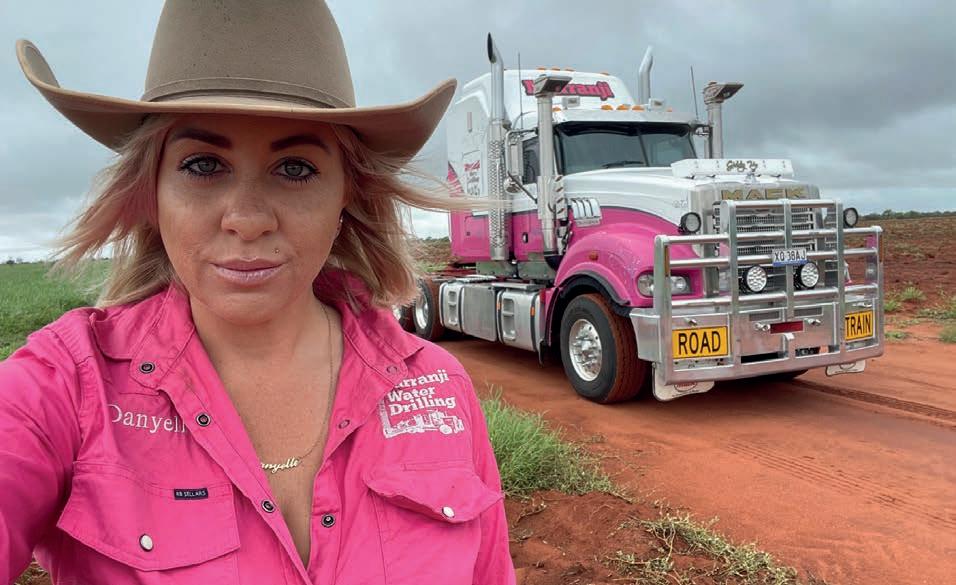
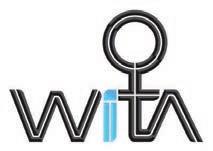


resulted in better safety. This winding section had been the site of numerous accidents including some fatalities.

swering words on his mobile phone.

But it has been widened with a passing lane and speed restrictions.
Spy travelled it twice early this month and saw lots of trucks negotiating it with great care.
They never crossed double lines and it was much appreciated by other motorists.
Road upgrades for Tassie beach town
Designs are being developed to upgrade the road between Bridport and Bell Bay in Tasmania to improve freight efficiency and safety.
Several truckies who travel the area have told Spy work needs doing on what is called Bridport Road.
A State Growth spokesman said that upgrades will include shoulder widening, road repairs, slope improvement and turning lanes at junctions to improve road user safety.
“The program will be rolled out in stages, and we expect designs for the first package of upgrades to several junctions between Weymouth Road and Industry Road to be
completed later this year, with construction expected to start in 2026,” the spokesperson said.
Bridport is a scenic little town which normally has a population of just under 2000.
But that swells to more than 5000 during the busy summer months when tourists flock to the area to enjoy beaches, swimming, sailing and other water sports.
Streets in the northern half of Bridport have male person names and those in the southern half have female names.
Bridport is located 63km from Launceston, 56km from, Georgetown and 25km from Scottsdale.
Mount Isa driver Paul Williams has a great sense of humour and sent Spy a snap of himself holding a t-shirt with a road transport themed caption screen printed on it.
“My teacher was wrong, I get paid to stare out of the window all day – TRUCK DRIVER to the end,” it read.
Paul drives long haul every week into the NT and you only have to listen to the an-

“Sorry can’t take you call, gone for a dump,” it says.
I am sure the t-shirt caption will have a sense of truth about it to many readers.
How many of us were chastised by a teacher when at school for not paying attention and glaring out a window?
The ongoing restoration work being done on the Palmerston Highway between Innisfail and the Atherton Tablelands has been a constant source of conversation between truckies.
A reader who travelled the highway last week snapped some pics of the work and asked if I knew when it would be completed.
So, I contacted the Department of Transport and Main Roads (TMR) for an answer.
“Slope stabilisation works are currently underway at two sites on the Palmerston Highway, a key freight route connecting the Atherton Tablelands and the coast, following damage caused by Ex-Tropical Cyclone Jasper. The permanent reconstruction works are complex due to the environ-

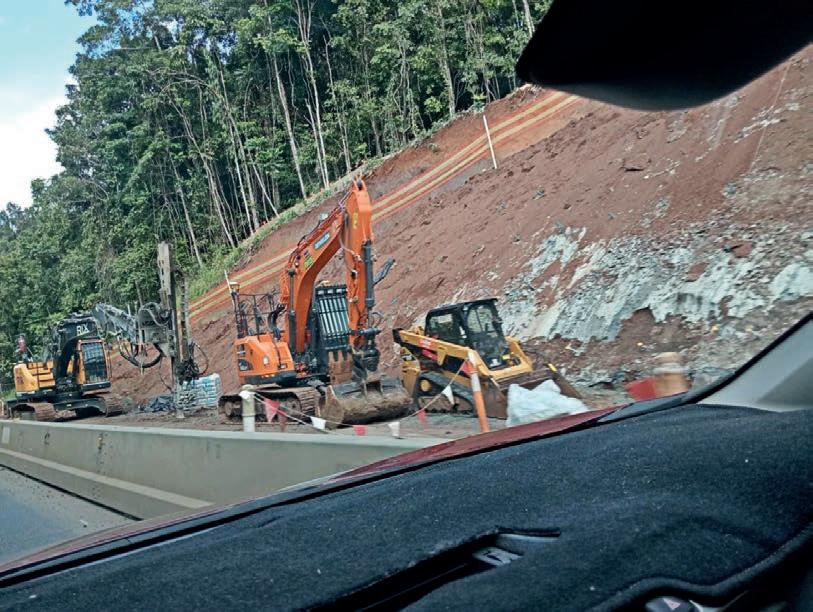
age, which requires specialised geotechnical solutions.
“Work is on track to be completed by mid-2026, weather and site conditions permitting,” a TMR spokesperson told Spy.
“Work is ongoing at Site 1: 2.5km west of Crawfords Lookout (upslope and downslope slip). This section
sideways and sunk two metres following heavy rainfall. Soil nailing has been completed on the upslope section, with work continuing on a gabion basket retaining wall, micro piling and drainage. Significant piling works will start at the downslope slip in late August, where more than 80 concrete piles measuring up to 18 me-
tres in length will be installed.
“Site 2: 1.5km west of Henrietta Creek Day Use area upslope slip. Soil nailing and batter trimming continues on the slip which measures more than 20 metres in height.”
Roadhouse competition good for drivers
On the subject of Cardwell, the opening of a new roadhouse there has proven a bonus for truckies.

A Liberty establishment opened in Cardwell’s main street not far from the long established one known as Choice. Competition is always good and pardon the pun, but drivers now have a choice.
Spy asked drivers who frequently stop there to compare the two.
“One of them has cheaper fuel but less parking space for trucks, which the other one has,” a Tully driver said. From reports both serve good food and generally have friendly staff.
A similar situation is near where I live and a new roadhouse has opened 100m from a Coles outlet which sold fuel for amongst the most expensive price around.
Since the opposition started the Coles fuel price there is amongst the cheapest in the region. Consumers are winners.
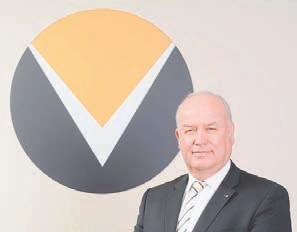
AS the Victorian Waste Management Association’s (VWMA) 2025 state conference drew to a close, I was struck by the sheer breadth of challenges and opportunities facing our sector.
From the complexities of hazardous waste to the promise of organics transformation, the conversations at Yarra Valley Lodge, Victoria were robust, insightful, and grounded in action.
Transport, often the silent partner in waste management, is increasingly at the centre of these discussions.
Whether it’s the rollout of Victoria’s four-bin standard, the logistics of moving contaminated materials safely, or the coordination required for statewide organics processing, the role of freight and logistics is pivotal. And yet, it’s a role that’s too often underappreciated.
The V WMA, as a proud subset of the Victorian Transport Association, exists to ensure that doesn’t hap-

pen. We advocate for the op erators, drivers, planners, and businesses that make waste movement possible. Because without transport, there is no waste management – only waste accumulation.
This year’s conference theme – Regulation, Resilience, Responsibility –couldn’t be more apt. Regulation is tightening, and rightly so.
Sessions led by EPA Victoria, Recycling Victoria, and National Heavy Vehicle Regulator made it clear: compliance is no longer a box-ticking exercise. It’s a strategic imperative.
But with regulation comes
complexity. Transport op erators are grappling with new OHS laws, evolving WorkCover costs, and ESG expectations that demand more than just environmental awareness – they require cultural change.
Resilience, then, becomes our shield. The waste transport sector has weathered economic shocks, supply chain disruptions, and shifting policy landscapes. But resilience isn’t just about surviving. It’s about adapting. It’s about investing in fleet upgrades that reduce emissions, training drivers to handle hazardous loads safely, and
building partnerships that span government, industry, and community.
Responsibility is the thread that ties it all together. We have a duty, not just to our clients and regulators, but to the public. Waste transport is a public-facing industry.
Every truck on the road is a symbol of our commitment to safety, sustainability, and service. And as we heard in the conference’s masterclass on workplace compliance, that commitment starts with our people.
Supporting drivers through mental health initiatives, upskilling programs, and fair employment practices isn’t
just good business, it’s the right thing to do.
One of the standout moments for me was the session on lithium-ion battery storage. It’s a perfect example of how transport intersects with emerging risks.
These batteries are everywhere – from household bins to industrial sites – and their volatility poses real threats. Coordinating safe collection, storage, and disposal requires not just technical expertise but logistical precision. It’s a challenge we must meet head-on.
Similarly, the Big Housing Build and construction waste discussions highlighted the growing need for integrated transport planning.
As Victoria expands, so too does the volume and complexity of waste. Contaminated soil, asbestos, demolition debris – these aren’t just
environmental issues. They’re transport puzzles. Solving them requires foresight, investment, and collaboration.
A nd let’s not forget the human side. The networking sessions, the debates, even the dinner entertainment, these moments remind us that behind every policy, every load, every regulation, are people. People who care deeply about doing things better.
As CEO of the Victorian Transport Association, I see my role as a connector. Connecting waste managers with freight experts. Connecting regulators with operators. Connecting ideas with action.
The VWMA State Conference was a powerful platform for that connection, and I’m proud of the work our teams to bring it to life.
Looking ahead, our priorities are clear. We must continue advocating for smarter regulation that recognises transport’s unique challenges.
We must invest in resilience, through technology, training, and infrastructure. And we must embrace our responsibility to lead with integrity, innovation, and purpose. The road ahead won’t be easy. But with the right people in the driver’s seat, I’m confident we’ll get there.

I was trying to think what has changed the most in the industry, not concerning the most noticeable like equipment, technology etc.
But in my 55 years in the business and one skill or lack thereof, is the general knowledge gap among industry participants.
As we have moved away
from drivers and some owner-operators doing any work, except driving and sometimes loading and unloading, many do not have the basic general knowledge to describe what has happened when they break down so you know who to send to fix the truck or trailer, very few can change a tyre, and while maybe they should not have to, it it a good skill to have.
And before everyone says that I couldn’t do it either, I have never aspired to be a truck driver.
Not because I think that it is beneath me or less than, but I don’t think that I would be a very good driver and also, for a very good but funny reason
from a past life.
However, before I was allowed to buy my own car, my parents insisted that I learn how to replace a fan belt, air and oil filters and change a wheel as well as patch a puncture, yes, I am that old!
A ll this because where I came from you don’t often see other traffic when you are travelling and you needed basic knowledge plus it was cheaper to service your own car.
Could I do it now?
Probably not, I am far too spoiled, and I live in a major city, but it would certainly help at work if drivers and mechanics could clearly explain what has gone wrong
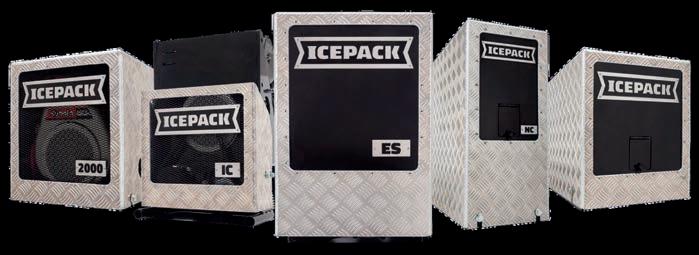
when something breaks down. Early in my career, most of the truck drivers were like MacGyver, as was my dad and I loved helping him fix trucks, tractors and farm equipment and we have lost some of that now that we cannot take the children to work, and in the truck like we used to.
Doesn’t matter what you are doing when are spending time with your parents, especially when you are daddy’s girl, everything is fun.
A lthough the joke is that my welding was so bad that Dad had to bury it!
As our basic driver training doesn’t even really fulfil the obligation that ensures




drivers have all the skills and knowledge they need, how do we ensure that when they do their pre and post trip vehicle checks on their equipment that they know what they are looking at/for?
Also, how can they quickly identify issues to prevent fur ther damage or even poten tial incidents when they are under way.
These are my personal observations not a criticism of anyone or the industry.
It is from being in the mid dle between the poor driver and the mechanic or the boss and trying to explain what is happening and often noone has the right questions or answers.


a lounge chair (7) 6 What is a member of a state or nation (7)
To sully or soil, is to do what (7)
What are flower plots (7)
Name another term for bulk (7)
Name a particular bivalve mollusc (7)






A new training program co-designed by Kangan Institute and Foton Mobility Distribution (FMD) will teach automotive technicians the skills needed to service and maintain zero-emissions hydrogen fuel cell electric vehicles.
The pilot program was officially launched at Kangan Institute’s Automotive Centre of Excellence in Docklands, Victoria, on August 12, by Minister for Skills and TAFE Gayle Tierney.
This is Australia’s first accredited training program to service hydrogen vehicles. The training program is now underway thanks to support from the Victorian Government, under the Skills Solutions Partnerships program – which provides funding for industry and Victorian TAFEs or dual sector universities to work to-
gether to design and pilot short training courses that address industry skills gaps in priority sectors.
Minister for Skills and TAFE Gayle Tierney said, “We are investing in skills and training to build the pipeline of workers that Victoria needs.
“This training course is the first of its kind in Australia. It’s great for jobs and great for the economy.”
While Kangan Institute CEO Sally Curtain added, “As hydrogen vehicles roll onto Australian roads, we need expert technicians who can service them safely.
“This program is a national first – bringing together educators and technicians from every corner of the country to build the skills needed for a zero-emissions future.
“It’s a powerful example of

Kangan Institute’s Automotive Centre of Excellence is the largest purpose-built automotive training facility in the southern hemisphere.
Featuring world-class diagnostic labs and a $1.4 million electric vehicle lab, it trains up to 5000 students annually across over 25 specialised areas – including clean energy training.
what’s possible when industry and education collaborate to solve real-world challenges. We’re proud to be leading the way in hydrogen vehicle training and helping shape the workforce of tomorrow.”
Victoria currently has three renewable hydrogen refuelling stations operating across the state, including Australia’s only public station.
Nineteen TAFE teachers from around the country were onsite at Docklands for the launch of the hydrogen vehicle training program, as they prepare to train technicians across Australia to work with zero-emissions hydrogen fuel cell electric vehicles.
The pilot training program will include:
• Specialist training for technicians servicing hydrogen fuel cell electric
vehicles FCEVs
• Safety-focused programs for business owners supporting FCEV adoption
• Upskilling for TAFE teachers
• New FCEV training units, developed by the Mining and Automotive Skills Alliance (AUSMASA)
• Course materials to be used widely across the sector
• New hydrogen safety technology installed at Kangan Institute’s Automotive Centre of Excellence
The program has already gained a great deal of interest, with 30 technicians from across Australia enrolled, as the course’s first intake begin their training at the end of August.
Foton’s hydrogen-powered truck is now housed at Kangan Institute’s Automotive
IVECO Trucks Australia has held its inaugural National Master Technician Tournament, providing talented technicians from its extensive dealer network with a platform to compete against each other for trophies, cash prizes and of course, bragging rights.
Open to all IVECO technicians, from up-and-coming apprentices to experienced trade-qualified professionals, the event was held over three rounds through IVECO’s
online Web Academy, and involved participants negotiating 75 challenging questions covering all aspects of servicing and maintaining the IVECO range, along with fault diagnosis.
Fifty technicians participated in the event with final honours going to IVECO Sydney’s Workshop Foreman, Justin Abood.
Second and third placings were taken out by Jonothan Elias, a Senior Technician and
Electrician from Black Truck Sales, and Nathan Wigger, IVECO Workshop Foreman at Melbourne’s Prestige Truck Centre.
IVECO Head of Network Development, Customer Experience and Training, JohnPaul Falvo, said he was excited at the participation rate of the inaugural tournament and looked forward to growing the event in the years ahead.
“Interest in the National Master technician Tourna-
ment from across the network was extremely positive, leading to a strong participation rate and three very enthusiastic winners,” Falvo said.
“The tournament provided a fantastic means by which technicians could test their knowledge against counterparts from across the country in a friendly competitive environment, while further honing their skills, which ultimately is a positive for IVECO owners.
“On behalf of IVECO, I ex-
tend a warm congratulations to our winners and thank all participants.”
Helping conceptualise the National Master Technician Tournament and oversee the program was IVECO Manager, Customer and Product Support, Jason Mobberley, who hinted at future growth.
“Spurred by the success of the inaugural event, plans are already underway for the 2026 installment,” Mobberley said.
“I encourage dealership ser-
Centre of Excellence, giving students and teachers direct access to real-world hydrogen vehicle technology as part of their training experience.
“FMD are proud to be associated with this exceptional initiative,” said Foton Mobility Distribution CEO Neil Wang.
“When we set out three years ago to bring class-leading zero emissions transport product to Australia, we always knew that there would be a need to not only back the product with exceptional after-sales support and service, but that we would need to foster knowledge-sharing around the technology.
“This partnership with Kangan Institute has allowed us to share technical knowledge gained from millions of kilometres of real-world experience.”
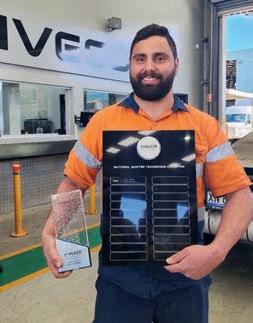
vice teams to again become involved next year where we hope to expand the scope of the tournament by introducing new elements and challenges.”
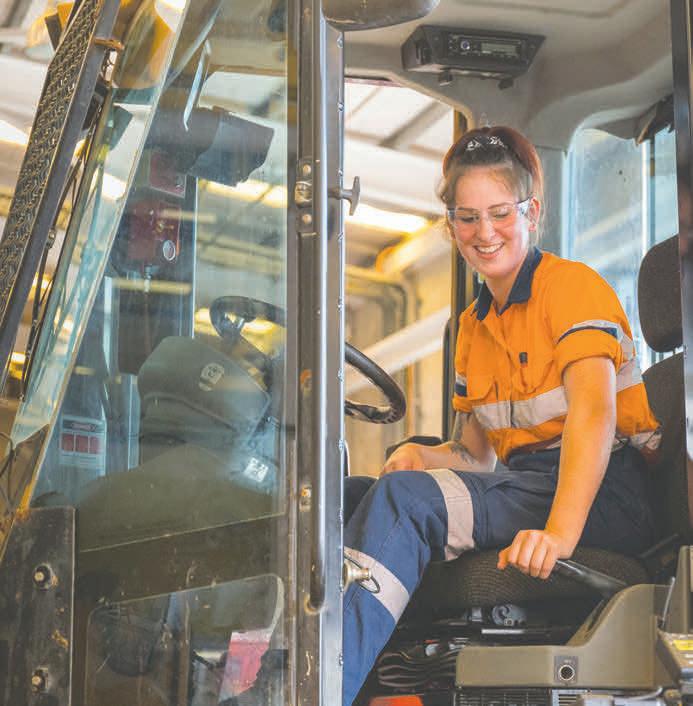












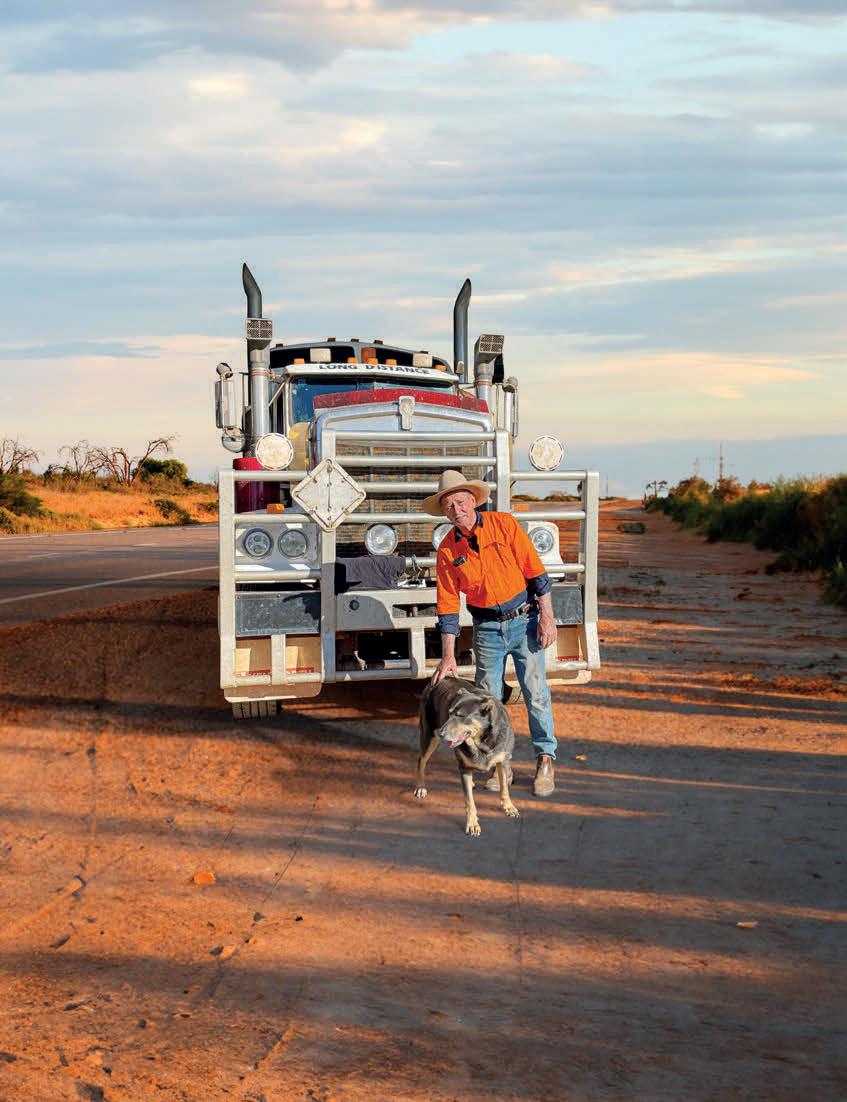
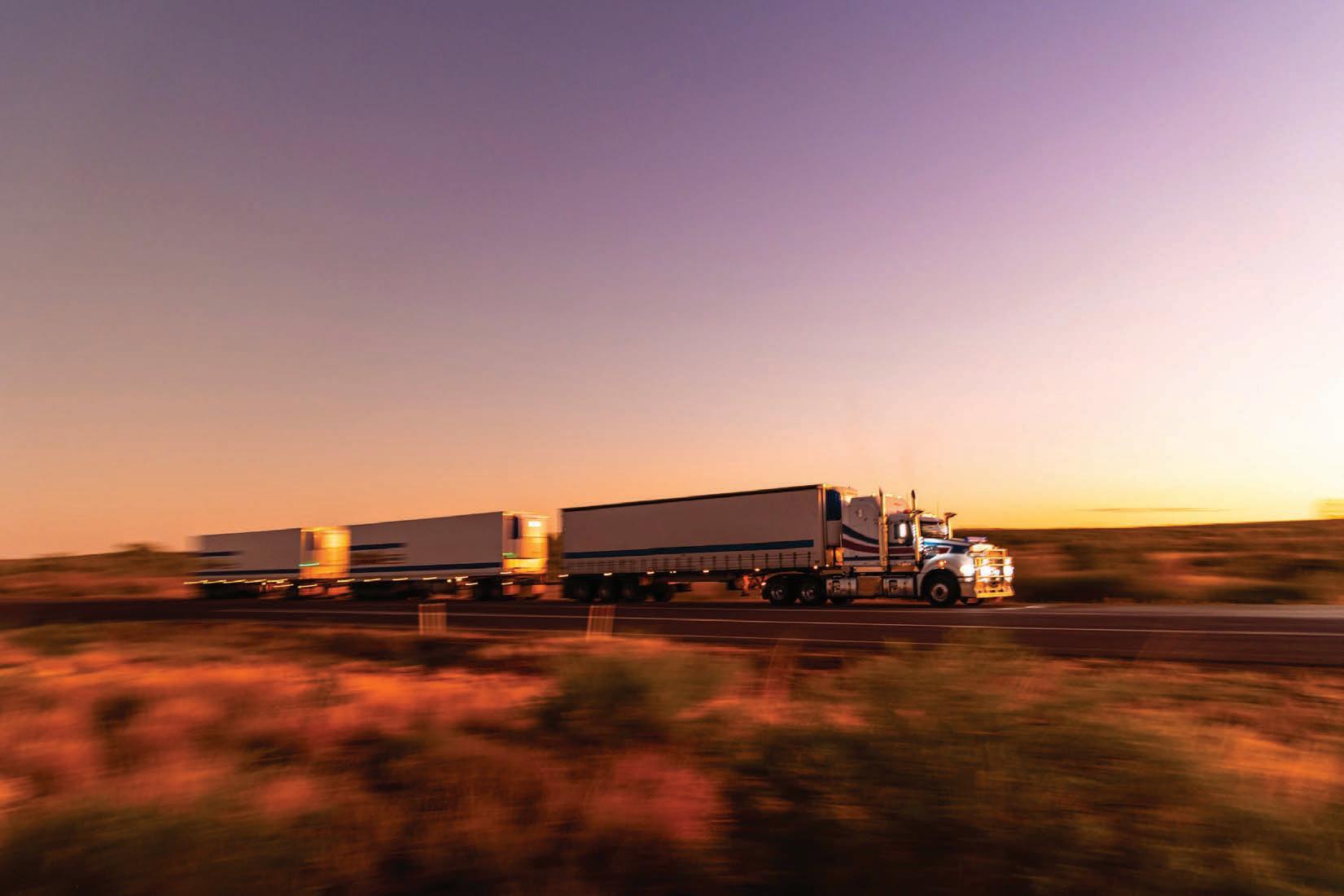
THE Australian Trucking Association’s 2025 Technology and Maintenance Conference (TMC) will roll into the Victoria Pavilion at Melbourne Showgrounds from October 14-15.
Sponsored by the PACCAR and Dealer Industry Fund, the event is the trucking industry’s premier national gathering of truck service and maintenance professionals, from fleet and workshop managers to technical regulators, mechanics and service technicians.
With more than 400 attendees, 40 speakers and 150 companies, the event will share the latest in truck maintenance and technology. Attendees will learn how they can minimise breakdowns and save thousands of dollars through smart
purchasing decisions and better maintenance.
The t wo-day program focuses on truck technology, productivity, safety and workforce and includes a discussion on higher truck mass, lengths and heights, a TAFE and operator panel discussing ways to maximise training results from HV TAFE (chaired by heavy-vehicle mechanic and life coach Louise Azzopardi) and the highly anticipated Technical Q&A led by industry legend Jodie Broadbent. This year’s program keynote, Hauling high performance Supercar beasts, will spotlight road train driver and passionate advocate for trucking careers, Casuarina Smith (CJ).
CJ will share the story of a once-in-a-lifetime opportu-
nity, stepping in to steer the Team 18 Supercars transporter from Melbourne to the Supercars events in Perth, Darwin and back again – just in time for the next race round.
CJ will be joined on stage by some of her collaborators to unpack the scale of this epic journey, offering insights into the logistics, creativity and teamwork involved.
At the event, the ATA will release two new technical advisory procedures, covering heavy vehicle wiring and certified load restraint curtain systems. These new, best practice guides will be supported by expert sessions and a hands-on workshop where delegates will get best practice wiring tips and the see the consequences of wiring fails.
As part of the ATA’s strong focus on diversity and inclusion in the workplace and the upcoming launch of its SBS Inclusion neurodiversity module, Anthony Boyle (Executive Director, ALRTA) will host a session on unlocking neurodiverse talent in the workplace. The session will feature Founder and Chief Enabling Officer, I C AN Network, Chris Varney and other speakers.
Attendees will also hear the latest on brake design and testing from industry expert Shane Pendergast and Air Brake Systems, emissions and durability advances in lubricant performance (Claudia Sclosa, Castrol), reinventing maintenance with digital tools (Chris Martin, Geotab), a workshop demonstration
on alternator and starter-motor systems (Grant Murray, Mitsubishi Electric) and hear from feature speakers from the National Transport Commission, the NHVR, Cummins, SAF-Holland Australia, BPW Transpec, Freighter Group, the ATA’s Industry Technical Council and many others.
Event highlights:
• Seven hands-on technical workshops and 18 engaging presentations and discussion over two days
• PACCAR Parts Sideshow Alley: a perfect networking starter where you can test your strength at the high striker, show off your timing with the laughing clowns, and enjoy games and entertainment
throughout the evening. With fantastic prizes up for grabs, it’s an evening you won’t want to miss!
• Castrol Awards Dinner: taking place at the stunning, 1920s-inspired San Remo Ballroom. A night of great food, laughter and entertainment celebrating the industry’s finest. Friends, partners and colleagues are welcome.
• TMC Expo: A showcase of the latest products and services in truck parts, technology and telematics from a variety of reputable suppliers, such as Cummins, SAF Holland, MAHA, Repco, Hella, Penrite Oil. V-DAQ, Mitsubishi Electric, Airtec, Hendrickson, Sampa and many more

Check out the full details and secure your ticket at truck.net.au/tmc/ Tickets close October 3, 2025.
Meritor has released a new range of air valves for heavy duty truck, bus and trailer air brake applications. These valves have been designed and tested to meet stringent quality standards and will suit the most common applications in the Australian market. All Meritor air valves are backed by a one year warranty and available wherever you purchase Meritor parts. Scan the QR code to see the full range or visit www.meritorpartsxpress.com.
